Our Snack Bites are BOGO on Amazon while supplies last (very limited). Hurry before they're gone!


If Only I Had Known: My Top Weight Loss Journey Tips for Long-Term Success
Embarking on a weight loss journey can be challenging, but with the right tips and strategies, you can achieve sustained weight loss, without drugs like…
Embarking on a weight loss journey can be challenging, but with the right tips and strategies, you can achieve sustained weight loss, without drugs like Ozempic. I know this because I’ve done it.
I’m going to share my top tips for long term weight loss success in this post, but first, do you ever wish you could travel back in time and give yourself a little advice?
I do, especially when I think about how much time and energy I wasted doing all the wrong things, or about how many mistakes I made, and how much frustration I could have avoided, had I only known THEN what I know now.
And while there’s a part of me that understands that sometimes we just need to learn things the hard way, I also think there’s something incredibly valuable about sharing those lessons, those mistakes, and those reflections in the hope that someone else can learn from them.
Are you ready to lose weight and heal your body for life (without dieting, drugs, or making yourself miserable)?
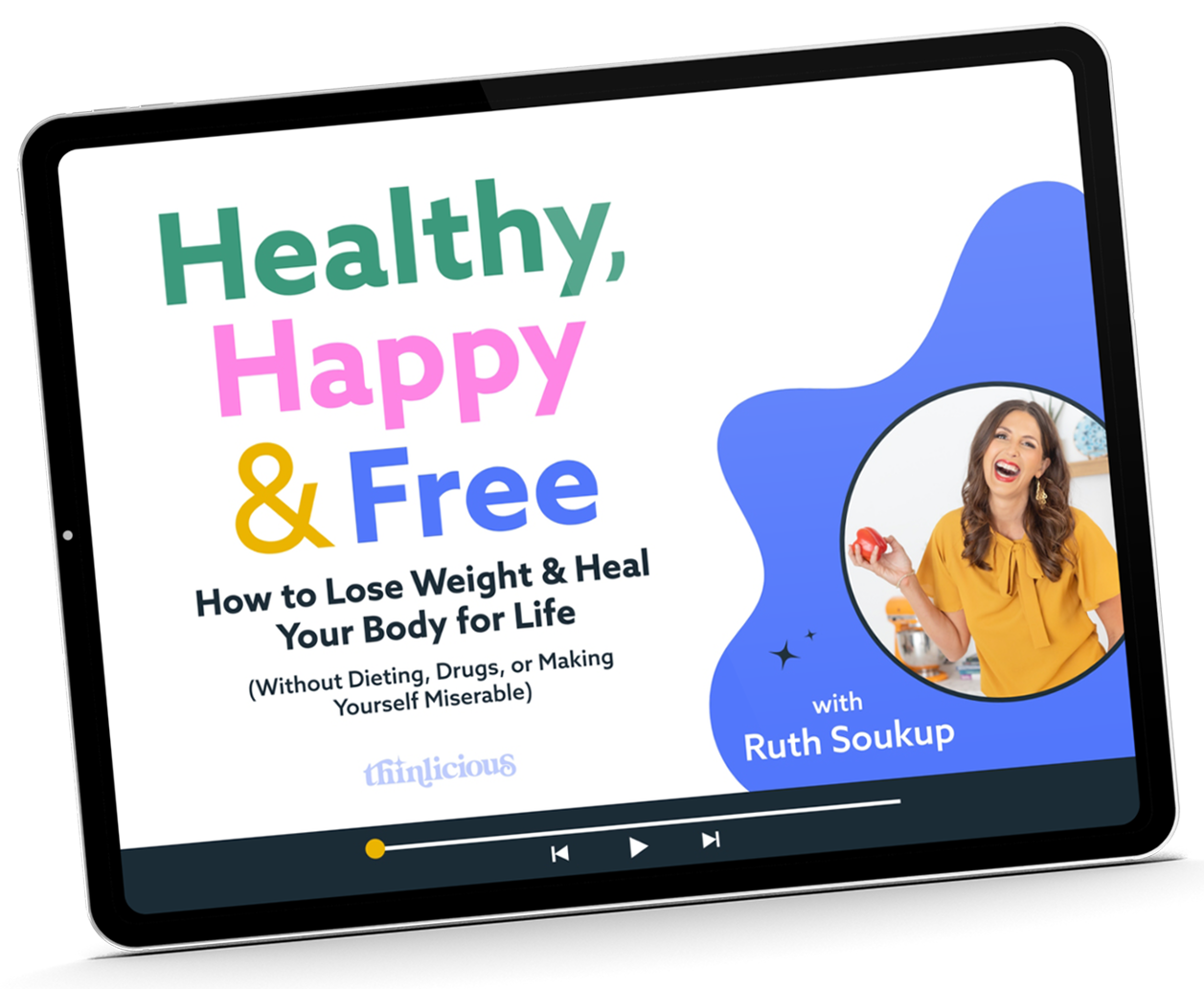
Our free on-demand video training will walk you through how to make this THE year you set health goals…and keep them.
And maybe, just maybe, your journey will be a little easier as a result.
That’s why in this blog post, as we celebrate our two year anniversary of launching Thinlicious into the world, I thought it would be fun to take a look back and share some of the biggest things I wish I would have known as I was starting my weight loss journey, and also the things our most successful clients wish they would have known as well.
Whether you’re just getting started on your health and weight loss journey, or you’re well on your way, I guarantee this post is going to inspire you, encourage you, and motivate you to make those lasting changes in your own life.
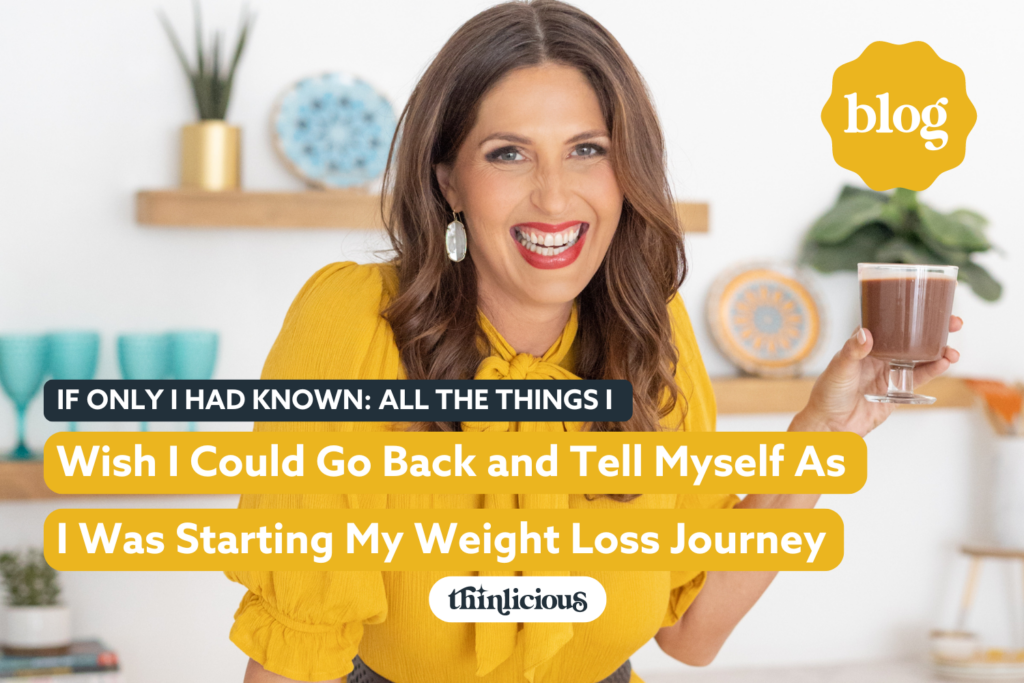
My Journey: From Struggle to Success
For those of you who don’t know me, my name is Ruth Soukup, and I am the founder of Thinlicious and the creator of the Thin Adapted System, as well as the New York Times bestselling author of 7 books.
I’m also a 46 year old woman who struggled for years and years to lose weight and get healthy before finally taking a totally different approach—the same approach that we now guide our clients through at Thinlicious—and lost more than 40 pounds.
And while I’ve easily maintained that weight loss for several years now—which in and of itself feels like a miracle after struggling for so long—the pain and frustration of that years-long struggle is still VERY fresh in my mind.
The frustration of trying one diet after another, the misery of constantly depriving myself and trying to cut calories and eat less and exercise more, the shame of falling off the wagon and gaining all the weight back, again and again.
The only thing I DIDN’T try was Ozempic, but that’s only because it wasn’t a thing then! But believe me, had it been around I probably would have been first in line.
Because honestly, I was so desperate to fix that piece of my life. And it still feels so raw.
If you’re reading this because you too are struggling with this, then you probably know exactly what I’m talking about. The shame. The loss of self esteem.
You start avoiding pictures or even wanting to look in the mirror. You start saying no. You start hiding. It basically starts eroding your confidence and your life.
And on top of that, you just don’t FEEL good. You’re tired all the time. You feel bloated. Your joints hurt.
It’s just this vicious cycle. It’s hard to get motivated to do something about it because you’re just exhausted all the time, but there’s no way to stop feeling exhausted unless you actually change something.
Believe me, I GET it.
Breaking Free: A New Approach to Long-Term Weight Loss
For me, it wasn’t until I decided to take a totally different approach that things FINALLY turned around. The biggest thing was that I finally stopped looking for a quick fix, another crash diet, and instead decided to do some real research into the science of weight loss, and into why we gain weight in the first place.
Honestly, what I discovered SHOCKED me because it is SO different than everything we’ve ever been told about what’s healthy and not healthy, and what makes us lose weight and what makes us gain. Because truth is, sustained weight loss strategies focus on (doable!) long-term changes rather than quick fixes.
Because as it turns out, the thing that regulates our weight ISN’T counting calories, it’s hormones.
As I started to change the way I eat in a way that restored balance to my hormones and reversed insulin resistance and healed my gut, the weight just started to come off.
Without dieting. Without drugs. And without making myself miserable.
I lost 40 pounds in six months, and for the first time EVER I didn’t just gain it all right back. I’ve easily maintained that weight loss for years now.
And let me tell you friends, after struggling with this for SO LONG, it felt—and still does feel—like FREEDOM.
It’s why I’m SO freaking passionate about this work. It’s why I started Thinlicious and this blog. Because I can’t help but want to share it, and to help other women find that same freedom.
And that’s also why in TODAY’s blog post, as we celebrate two huge milestones—the one year anniversary of our podcast, and the two year anniversary of launching Thinlicious, I want to take that story one step further and share honestly with you some of the things that I know now, looking back, probably would have made things a whole lot easier for me.
Not only that, but I want to share some of the insights my clients have shared with me as well—the things THEY wished they could back and tell themselves as they were just getting started.
Because, as one of my favorite clients once said, sometimes you just don’t know until you know, ya know?”
My hope is that this blog post will both encourage and empower you to either KEEP GOING, if you’ve already started your health journey, or to actually GET STARTED if you’re still sitting on the sidelines.
Here are the six things I wish I knew at the start:
1. Sustained weight loss takes time (and it’s not a straight line.)
Honestly, that’s probably the first thing I wish I would’ve been more cognizant of—that sustained weight loss takes TIME. And not only that, it doesn’t happen in a straight line. There will be days when you are up a little bit, and days where you are down, and that’s totally normal. What you’re looking for is a line that trends downward over time.
And that’s why you really have to look at it as a JOURNEY or a LIFESTYLE, not as a diet.
Because I don’t know about you, but I’m definitely an instant gratification kind of person. My team has this ongoing joke that by the time I ask them for something, I already wanted it yesterday. But it’s true. I hate waiting. I want to take action and do the things and see results. Right now.
That’s literally the approach I had always taken to dieting and trying to lose weight. I would find the latest fad diet lose-weight-quick approach, and I would go all in on cutting calories and starving myself and drinking all the water and working out, all with the thought that I could just quickly shed the extra pounds and move on. And sometimes I’d lose five or ten pounds, always by making myself totally miserable, and then finally I couldn’t take it anymore so I’d go right back to eating all the things and gain it all right back.
But when I finally hit my breaking point and realized that approach wasn’t working, and that I needed to make a LIFESTYLE change, not just try another fad diet, I still struggled with not being very patient. And honestly, I know I’m not the only one who struggles with this because I often hear it from our clients.

Because even though in HINDSIGHT losing 40 pounds in 6 months sounds like it happened relatively fast—and it did—in the moment, in the day to day, it didn’t FEEL like it was happening fast. It felt painfully, excruciatingly, frustratingly SLOW.
What happened for me, which is pretty normal for our clients as well, is that I had some initial fast success, where I lost the first 10 pounds or so pretty quickly. It just sort of dropped off in the first two weeks. And I was like, YES this is awesome. I’ll be skinny in no time!
But then my progress slowed waaaaaay down.
And I know now that those first ten pounds were basically WATER WEIGHT. And not that water weight isn’t real weight or doesn’t count—it does. Trust me, losing 10 pounds of anything feels great! But water weight comes and goes. It fluctuates. It can depend on your cycle and even what you’re eating. Carbohydrates literally make you retain water, so when you stop eating them, the water flushes right out of you. And that’s awesome. But for most of us that have more than 10 pounds to lose, that’s not enough.
Because then you gotta start burning through all that excess fat. And that’s where the frustration starts to happen, because fat comes off a LOT slower than water. That doesn’t mean it’s not working. It just means you have to be more patient.
Honestly, I think sometimes that fast water weight loss can almost be a detriment because it sets you up for disappointment later on when the fat loss is more slow and steady. But I think if I had been more aware of the slowdown, and also to not focus so much on the day to day, but the results over an extended period of time, I would have had fewer moments of frustration.
So that’s the first thing—SUSTAINED weight loss takes time, and it doesn’t happen in a straight line. Don’t expect the scale to move every single day.
2. You’ll Probably Get Angry
The next thing I wish I would have known is how angry I would feel when I finally started to learn the TRUTH about what actually allows us to lose weight and keep it off, as I came to grips with the fact that we’ve all been LIED TO for YEARS by basically EVERYONE. The weight loss industry. The government. Our doctors. The media. By Big Food and Big Pharma.
Honestly it STILL makes me super angry, whenever I think about it.
Because when I think about all that pain and frustration and YEARS of struggling that didn’t actually have to happen, and then when I see the statistics about the current obesity crisis in this country, and the fact that 80% of the population is obese and that 85% of people have some form of insulin resistance, and that 90% of us have some form of leaky gut syndrome and that all of that has led to SO many health issues in this country—Type 2 diabetes and heart disease and cancer and autoimmune conditions and depression—and SO MUCH, if not ALL OF IT, is completely preventable.
But no one is talking about it. Big Food & Big Pharma are making WAY TOO MUCH MONEY off of keeping the entire population fat and sick, and they’ve paid off the media and the government and even taken control of the medical schools in this country, so that basically all of the information we’re getting is complete bullshit.
Because the solution is actually SO simple and so powerful and so effective, and yet NO ONE—none of these people who are SUPPOSED to be protecting us and fighting for us are actually doing any of that. Instead they’re lying to us.
Telling us things like “eat less and exercise more” and “calories in and calories out” and to cut back on fat and eat more plant-based processed garbage and to just take more medication to mask all the symptoms but not actually fix the real underlying problem.
So yeah, it gets me pretty pissed off. And when you start to see it—really see it—you probably will be too.
That’s exactly what one of my clients, Anna Barton, shared with me. She said:
“I tell people to prepare to feel INCREDIBLY ANGRY, and then DO something about it. I wish that my parents, my doctors, my Home Ec. teacher – ANY OF THEM – knew better.
What in the actual world was I doing, eating crappy food, feeling crappy, and looking FORWARD to Junior Mints at the movies… washed down by a ginormous coke? Looking forward to Friday night pizzas, or the gargantuan blueberry or double-chocolate Costco muffins…
All while I was struggling with fertility issues, FIBROIDS throughout my uterus… hemorrhaging for over two weeks every month… and was told that a hysterectomy was the only way to solve it. My hormones were out of whack from forced menopause and from INSULIN RESISTANCE, I was drenched in the most uncomfortable way from hot flashes.
But the make-me-angry kicker—ALL of that was all PREVENTABLE… and no one, up until Ruth and Dr. Edie, ever told me. I would never have guessed it on my own. I didn’t know to even WONDER about it. I owe Ruth my life, and my husband’s life. Am I at my ideal weight? No. Not YET. Will I be? Abso-stinking-lutely.”
And Anna definitely wasn’t alone—so many of my clients shared similar feelings of how surprised they were at the level of anger they felt at finally realizing that nearly all of their health and weight struggles were preventable, had they only known the truth.
So that’s the second thing to prepare yourself for—just how angry it may make you.
3. Document the Beginning of Your Journey (Even When You Don’t Really Want To)
The third thing I wish I could go back and tell myself—and something many of my clients shared with me as well—is to actually take the time to DOCUMENT the beginning of your journey, and to establish a baseline of where you’re starting from.
And this is a hard thing to do, because when you’re not happy with your weight or your health or the way you look, you don’t really want to think about how bad you actually feel right now. You certainly don’t want to take any photos. You might be avoiding the scale. And you might even be avoiding the doctor because you’re scared to find out just how bad things have really gotten.
I personally wish I had done a better job of taking an actual “BEFORE” picture on the day I started, and also a better job of taking progress photos along the way.
The one thing I did do was get regular body scans at the gym, and it’s actually SO cool to be able to go back and look at all of those and see the transformation taking place over time.
One of my clients, Laura Collis, said this: “If I was starting my health journey again, I would test, test, test to get a baseline on everything – a full blood panel, hormones and I would do genetic testing. I think it would have been so helpful to better know some of the other challenges I needed to pay attention to and monitor beyond weight. I also think it would have been an added motivator to stay on track during those times when life got in the way.”
And Kathy Buseman added, “My one thing would be to take the before picture as eventually you won’t remember what you really looked and felt like!”
And it’s actually true. The thing I realized in my own journey, and that so many of my clients have said too, is that you don’t even realize how BAD you felt until you start to feel better, and then you wish you had done a better job of actually documenting how you felt.
And that’s actually why now in our program, we start with Phase Zero—the Prepare Phase. Because obviously it’s good to prepare to begin—you have to learn a little about the program and how it works, and get the right food and supplies and all of that—but we also guide you through a process of documenting your beginning, with a detailed health assessment that asks a lot of questions about how you feel right now, in all different areas of your life. And then we revisit that assessment in each phase of our program so you can see how you’ve improved.
We also give you recommendations for starting bloodwork and STRONGLY encourage you to TAKE THE PICTURE, even if you never want to look at it again.
But that’s definitely the third thing I wish I would have known—just how important it actually is to document your beginning.
4. Perfection doesn’t matter nearly as much as consistency.
The next thing I wish I would have known—and maybe this is more of a mindset, or just my own personality thing—but it is that PERFECTION doesn’t matter NEARLY as much as consistency.
And I know this has been a HUGE aha moment for so many of my clients too.
Because like I mentioned earlier, when it comes to diets, I’m the kind of person who likes to go all in and super gung-ho and do all the things, and I tend to go a little bit overboard and then I get overwhelmed and I lose my focus and motivation and then I give up. I want to be PERFECT, but I can only maintain that for a few days at best.
What I’ve realized in hindsight—and what I wish I would have learned a LOT earlier—is that consistency is SO much more important than doing everything perfectly 100% of the time, and checking off every box. (And that’s hard, because I like to check off boxes.)
You’ve also got to be able to live your life. And so now my motto is this: Big goals NEVER happen all at once. They are only the result of small steps taken consistently over time.
What I started to do was give myself permission to NOT be perfect, but instead to make the best possible choices in any given situation. That meant that sometimes we’d go out to eat or hang out with friends, and my macros would be a little off. But instead of letting that derail me, as it would have in the past, I praised myself for making the best choice in that situation.
Because over time, those small choices add up to a lot of big results.
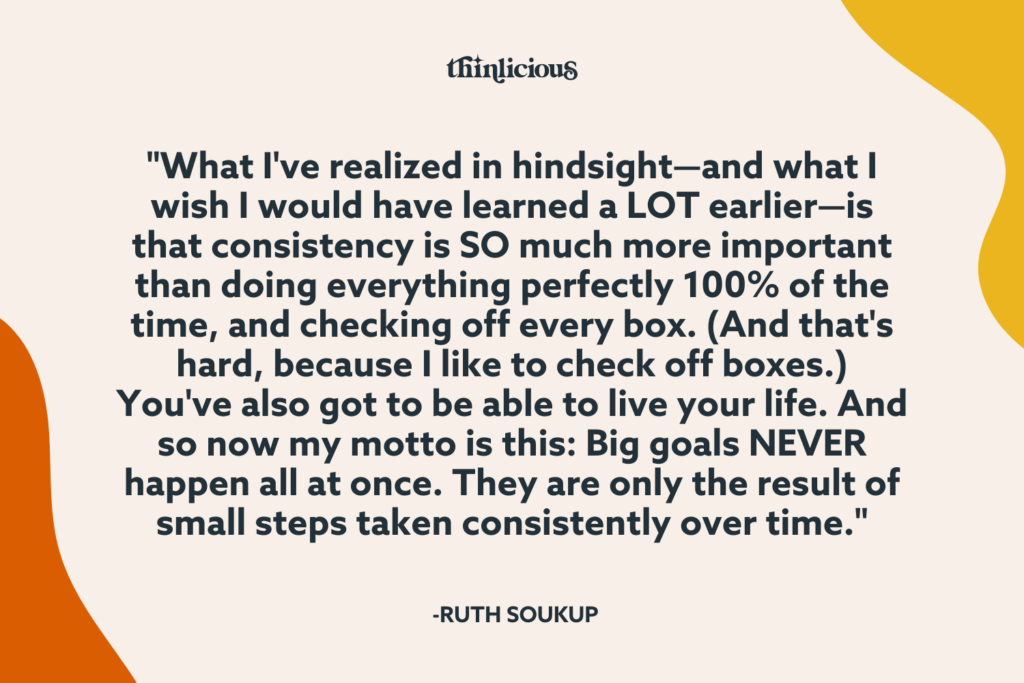
And honestly, I see this a lot in our program. There are a lot of people with perfectionist tendencies who get stressed when they don’t know an exact serving size or find themselves in a situation they can’t totally control. So it’s almost like they go off the rails. And I get it, because at one point I was the same way.
But the clients who have seen the MOST success over the past two years are the ones who have learned this exact lesson—that perfection doesn’t win the race, consistency does. Consistency over perfection is key in your weight loss journey.
So that’s the fourth thing.
5. It’s not really about weight loss. It’s about FREEDOM.
The fifth thing I wish I understood earlier is that even though my initial goal was really just to lose weight, and that’s the main thing I was focused on, this journey isn’t REALLY about weight loss.
It’s about freedom.
I don’t even really think I realized how NOT free I was when I started, or how stuck I was in old patterns and paradigms. I didn’t realize just how BAD I felt, both physically and emotionally, or how much I was a slave to food addictions, or how I was stuck in a shame spiral, or how I just didn’t even have enough energy to make it through the day.
But when you transform your health and actually HEAL your body, it is LIFE CHANGING.
It opens up a whole new part of you that you didn’t even know existed.
It’s SO empowering. All of the sudden you have SO much energy but not just that, your whole MINDSET has changed. You realize you can do anything. And you actually FEEL GOOD enough to do anything.
This is definitely something I’ve heard from my clients over and over again.
Tiffany Thompson said, “This is it! This is the way to get healthy, lose weight and keep it off. This is the way to live. It works with you instead of having to work around it or suffer the consequences. What I mean by that is if life gets hectic, stressful whatever and you need a break from tracking and weighing in and checking in, that’s ok. If you’ve flipped that switch and just move into maintenance phase every now and then, even for extended periods of time it’s ok. I know because I’m living it. I lost a good chunk of weight and then have been dealing with a lot of stressful things for over a year. I haven’t gained weight. This is the first time in my life I’ve “stopped” a plan I was on and didn’t gain the weight back. When I am ready I move back to phase 2 and continue to lose weight. This has changed my life and my family’s life and I had no idea the reach it would have when I started.”
Sherry Sheehan said, “I had no clue that it was so much more than just keto or that I would learn so much about hormones and gut health or that my mindset would shift so drastically or that my lipid profile would be the best it has been in years. I am so grateful for Thinlicious.”
And Shannon Greer said, “I was very wary about this program when I first started. I had tried so many different programs and none of them stuck for more than a few months. I thought it would be just another “buy our products and eat what we tell you to and you will lose some weight” kind of program. Boy was I wrong! If I could go back and tell myself one thing before I started this journey, I would say “despite ups and downs, this is the most sustainable program and will teach you how to prepare and eat delicious food for the rest of your life. Not to mention the education you will get along the way that will completely change your life!”
Honestly, it’s hard to even describe the level of freedom you will feel when you finally get a handle on this piece of your life that has likely felt out of control for so long.
But it’s so worth it. So that’s the fifth thing. That it’s not really about weight loss, it’s about freedom.
6. People won’t always get it (or be super supportive.)
The sixth and final thing I wish I would have known when I started was that other people won’t always get it. And they won’t always be super supportive.
And that’s okay.
I had a lot of people tell me that this can’t possibly be healthy, and that I was ruining my health and that I was just going to gain all the weight right back.
I had friends who got weird after I did lose a noticeable amount of weight—almost like they resented it, because they had stayed the same.
I had other friends who flat out told me, “Healthy Ruth isn’t fun Ruth,” mostly because I cut way back on my drinking and was no longer convincing everyone to do Fireball shots during our neighborhood parties. Do you know how much SUGAR is in Fireball? It’s a lot.
But I had a LOT of support from the people that mattered to me. My husband was and is my biggest cheerleader, and hopefully he would say that about me for him. We also have lots of great friends who embraced the Thinlicious lifestyle right along with us, and we now tend to organize our gatherings around food and drinks we can all enjoy.
Knowing what I know now, I would say that finding people who DO get it, and who are cheering you on is SO key for being able to make your changes stick. There is strength in numbers and the support of an awesome community.
That’s honestly why I love our Thinlicious community so much. If you’re already in our TAS program then you know exactly what I’m talking about. It’s AWESOME. Like truly the most incredible, supportive wonderful group of women you will ever find on the Internet.
So even if you’re not finding the support you need from the people around you in real life, for whatever reason, know that you can find it online in a community like ours.
Because truly friend, if you’re serious about wanting to transform your life by transforming your health, if you’re ready to have more energy and get your metabolism working again and dramatically reduce inflammation and reverse your insulin resistance and heal your gut and potentially even get off medication, then I PROMISE there is NO better way to do that than by joining our TAS program.
I know I’m probably a little bit biased here, but it really is everything that I wish I would have had access to YEARS ago, because it would have saved me so much pain and frustration and struggle. It is SUCH an incredible program—just SO comprehensive and jam-packed with both the practical tools you need to succeed AND the in-depth, physician-led education that will help you make permanent changes AND the ongoing support and coaching and accountability that will actually allow you to stay on track. It really is the total package.
If you’re ready to get started, then you can join our program right now by going to Thinlicious.com/program. Or, if you want to find out a little more before committing to the full program, I encourage you to watch our free training. It’s called Healthy, Happy & Free and it will walk you through exactly how our program works and how to get started. You can access that at Thinlicious.com/ready .
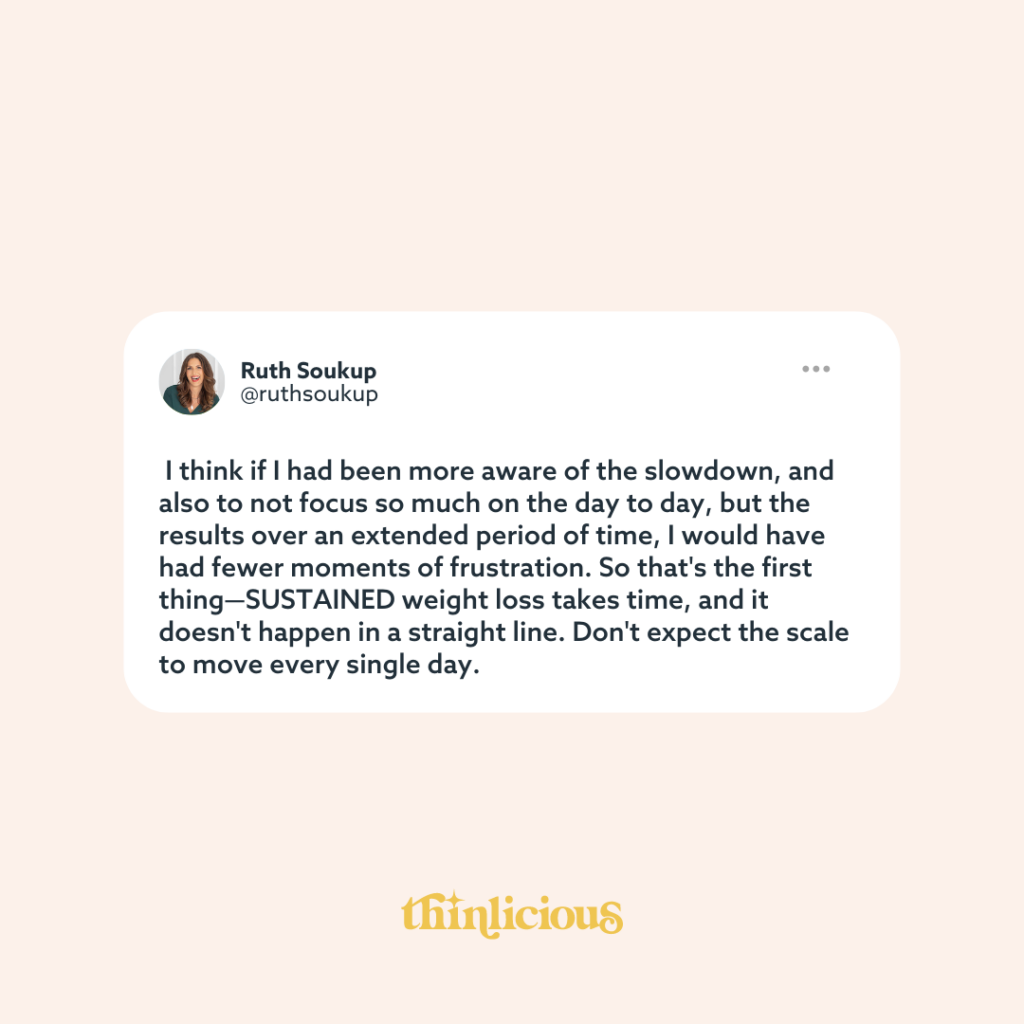
If you found this post helpful, share it with someone who might benefit too. Together, we can inspire and support each other on our journeys to better health and freedom!
Get our FREE guide to finally fix your metabolism!
Losing weight & getting healthy is never easy , but lately you might feel like it’s suddenly become impossible .
Our Flip the Switch guide will help you clearly understand what’s been going on, as well as exactly what you can do to get your metabolism working again so that you can look and feel your best— it’s easier and more simple than you think!
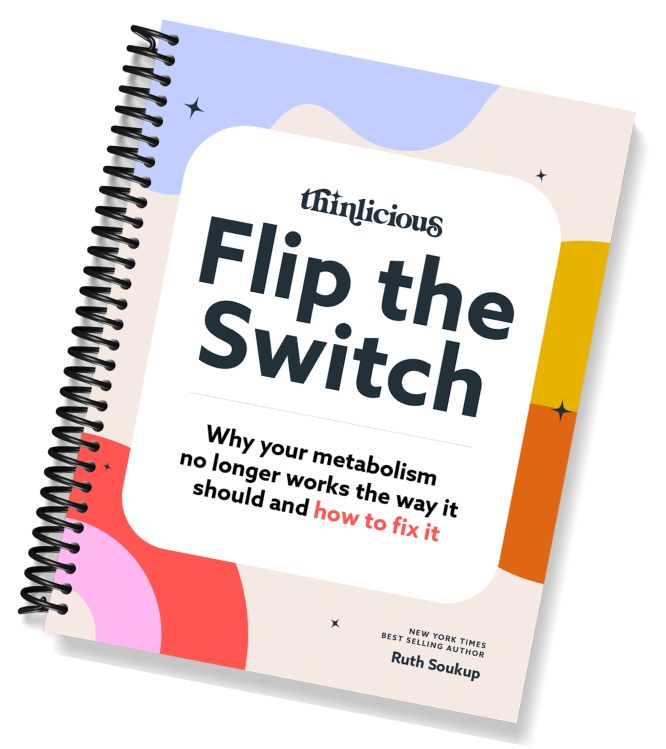
Similar Posts

The Real Reason You’re Hungry On Keto And How To Control Those Cravings
Seriously…hungry again? Isn’t a low-carb diet supposed to make me less hungry? Why am I constantly daydreaming about potatoes and pasta and pastry? If you’ve…
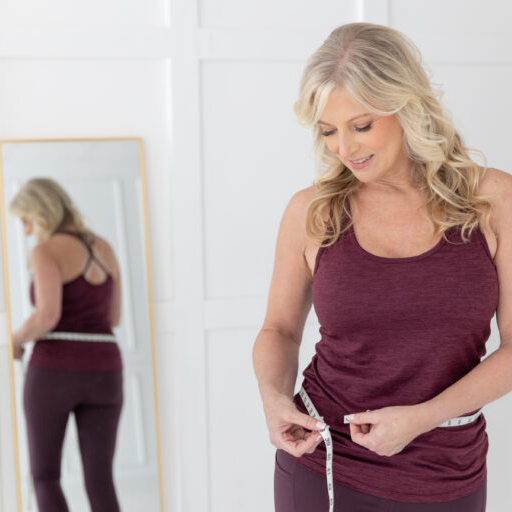
The Brutal Truth About Weight Gain in Women Over 40
Angela was horrified when she stepped on the bathroom scale the morning of her 46th birthday and saw that not only was the number higher…
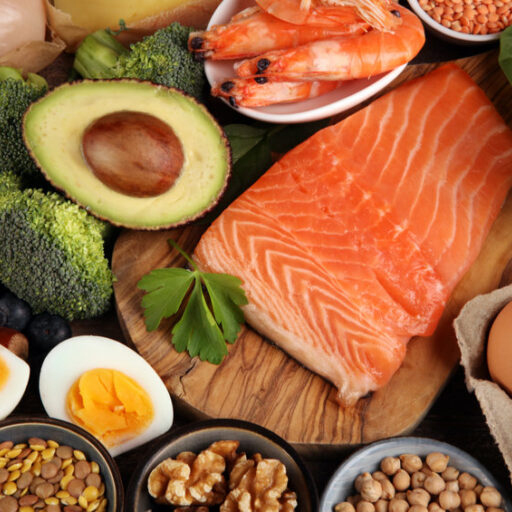
15 Staple Foods to Eat on a Low-Carb Diet
Are you looking to cut down on carbs in your diet? If so, you’re not alone. A low-carb diet is a great way to start…

6 Effective Ways to Boost Your Metabolism After 40
Wondering how to increase your metabolism after 40? You’re not alone! If you’re like most women, you’ve probably noticed that your metabolism after 40 isn’t…
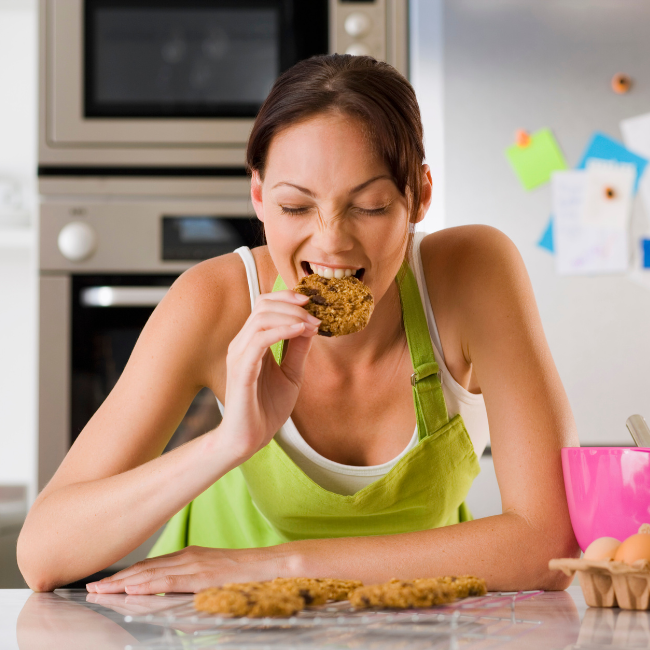
The Ultimate Guide to Overcoming Emotional Eating (Without Resorting to Willpower Alone)
Are you struggling to stay on top of your health and weight loss goals due to emotional eating? Get the tips, tricks, and strategies that will help you overcome this common issue without relying solely on willpower.

The Ultimate Guide To Healthy Fats
Are you confused about which fat to buy? Would you like to learn which is the healthiest cooking oil? The Ultimate Guide To Healthy Fats will…
Leave a Reply Cancel reply
Your email address will not be published. Required fields are marked *
Save my name, email, and website in this browser for the next time I comment.

Ready to lose weight and get healthy for life?
Our free on-demand video training will help you understand why it’s been so hard, and how to lose weight and heal your body for life (without dieting, drugs, or making yourself miserable).
I lost 70 pounds in 2 years. Here are 8 things that helped me reach that goal and improve my mental health.
- I spent two years trying to lose weight by listening to my body, and I was able to shed 70 pounds.
- The secrets to my success were avoiding diets, prioritizing mental health, and taking my time.
- Cutting out cigarettes and alcohol and really taking the time to learn about nutrition also helped.

I've always been rather conscious of my weight. I was never really bothered about having abs or muscles, as long as I remained slender, I was happy.
Then my mid-20s hit, and I could no longer easily metabolize four boxes of chicken nuggets.
There's nothing wrong with gaining weight, but I'd totally lost the concept of moderation. Instead, I entered a toxic relationship with food because it became a source of comfort to me.
My diet was atrocious, I was at my worst mentally, and I was desperate to do something about it. So by my late-20s, I embarked on a two-year weight-loss pilgrimage.
Yes, two years sounds like an eternity, and my weight fluctuated a lot during that time. But losing belly fat wasn't my main goal, restoring my mental health was .
Eventually, I found that overeating wasn't my problem, self-deprecation was. It was time for me to sort myself out on my own terms. That meant no diets, no time frames, and absolutely no feeling sorry for myself.
Read on for the eight things that helped me lose 70 pounds in two years.
I remained anti-diet throughout my weight-loss journey
I've always been anti-diet.
In the past, I've tried things like keto , Atkins, and even "Veganuary" ( eating vegan through the month of January) to try and shed a few pounds, but I failed abysmally every single time.
For some people, dieting works, but I saw diets as a cause for bouts of extreme binge eating. Just saying no to a bar of chocolate for a few days would result in a midnight snack-a-thon of double chocolate-chip cookies.
Instead, I listened to my body and its needs, and I made space for my favorite things, like cake, chocolate, and gelato. In the long run, that worked much better for me than constantly restricting and bingeing those treats.
Learning about the different components of nutrition was absolutely key
As I grew older and my metabolism shifted , it failed me. The more I looked down at my growing belly bulge in the shower, the more depressed I became.
As part of my job as a luxury travel journalist, I had the privilege to attend a detox program that normally costs thousands of dollars a week. It involved massages, cryotherapy, and a strict vegan diet — but the biggest takeaway I got out of it was information about nutrition that helped me create a strong foundation for everything to come.
Of course, you don't need a luxury program to learn about nutrition. Everything you need to know about the benefits and drawbacks of the different food groups can be found online or in books.
The mantra "you are what you eat" also really stuck with me as my consultant took me through the major food groups and explained all the benefits that promote healthy weight loss .
Eggs and peanut butter keep you full, leafy greens like kale and spinach increase the volume of your meals without increasing the calories, salmon keeps your metabolism running smoothly with protein and iodine, and avocados introduce healthy fats that can reduce your waistline.
Eventually, Uber Eats nights gradually became salad nights, carbs were consumed only at lunch (followed by a brisk walk), and my morning green juice became a sacred routine.
It's important to find a fitness regime that works for you
I never used to believe in exercise . I toured gyms in all the corners of the world for work, but I could never muster up the courage to jump on a machine.
Then lockdown hit London during the coronavirus pandemic, and I was bored. Eventually, I caved and started doing Joe Wicks' workout sessions on his YouTube channel, The Body Coach.
Sweat challenge after sweat challenge the pounds gruelingly began to shed.
What made it easy, especially for someone with slight confidence issues, is that I could work out and make mistakes in the comfort of my own home without fear of judgment or being watched.
As England came out of lockdown, I pushed myself to get comfortable working out in public and got into electrical muscle stimulation (EMS) training at a local studio.
EMS is a workout technique where a machine is strapped to your body (think Lara Croft's bodysuit) and delivers electrical pulses that stimulate muscle contractions, which intensify your workout.
A simple 20-minute EMS workout is the equivalent of a 90-minute regular workout with all the same basic exercises: squats, planks, punches, press-ups, and sit-ups.
I've completed well over 20 sessions now, and my balance has improved and my muscles are more toned.
Related stories
But if EMS isn't in your budget, my advice is to invest in some weights and find a fitness YouTube channel you like. There are so many great videos out there that are just a search away.
The easy 20-minute videos from Wicks were my go-tos for months. They're suited for all levels, cover all the basic workouts, and provide instructions for safe and proper weight training .
Discovering the wonders of protein can really make a difference
I was never a big meat eater. I'd reserve the luxury for whenever I was at a swanky restaurant and then pay for it later. For some reason, my gut hated the stuff, and I would spend hours feeling sick after eating a burger .
Needless to say, introducing more protein into my diet — which mostly consisted of carbs and sugar — was a real struggle.
I started by drinking protein shakes after every workout, which helped massively. A few weeks in, I slowly began eating steaks, eggs , venison (all things I previously hated and now crave), and peanut butter.
Peanut butter in my porridge combined with a post-workout protein shake kept my hunger at bay all morning. Come snack time, things like nuts and apples diminished my cravings until I indulged in carbs, a large bag of cooked spinach, and cold meats at lunch.
The best part is that I felt fuller for longer , which meant I could consume fewer calories and in a healthy way.
Whenever you're changing things up with your diet, just be sure to listen to your body and know its limits.
I didn't weigh myself or purposely track my progress
Like dieting, keeping track of numbers works for some people when they're trying to lose weight.
But I think scales are counterproductive . For me, they come with expectations and goals, and it's disheartening when you don't achieve them.
It may not be a perfect strategy for everyone, but taking mirror selfies and being hyped up by friends helped me track my progress and feel confident.
I said goodbye to cigarettes and booze
I smoked and drank (socially) for well over 15 years.
But before I began my weight-loss journey, I quit smoking . I grabbed all my favorite things from the supermarket, locked myself in my flat for three days, and went completely cold turkey.
Though it was hard, I got over the cravings within six months and have never looked back. And quitting before I embarked on my weight-loss journey definitely helped me get stronger and fitter faster.
I knew that working out or running while smoking between 15 and 20 cigarettes a day wasn't going to work. Even walking long distances became a real struggle after a while. According to the NHS website , the perks of quitting include everything from increased energy to reduced risks of developing cancers.
Then there was the booze.
London is full of bars and excellent restaurants. On some nights, I could easily down a bottle or two of Chablis wine, a calorific nightmare .
After doing more research, I completely cut alcohol out for eight months. Though I was never a big drinker, the benefits surfaced quite quickly. I was much less bloated and my skin looked fantastic, too.
My goal was never to get a beach bod for the summer
I didn't care about getting my body ready for summer. Time frames add unnecessary pressure, and when my lifestyle was already largely dictated by my job, simply finding the time to work out was a feat of its own.
Over the last two years, I've learned that weight loss should be on your terms. Instead of obsessing over strict time frames or seasons, find a schedule that suits you. At the very least, it'll be a more sustainable practice in the long run.
I preach doing things in stages. If you give yourself too many goals, ambitions, or tasks at the same time, the likelihood of caving in is much higher.
Start as you mean to go on, patiently and productively.
Focusing on the mental boost from exercise over the physical results helped
Throughout this journey, I've figured out that the best thing for squashing all of life's stressors is endorphins.
I became slightly addicted to the boost that comes after working out. Running , even if it's just for 20 minutes, not only made me feel great, but it also helped my mind function a little bit better.
The only way you'll succeed in your weight-loss goals and make lasting change is if you enjoy your new lifestyle, and craving that post-workout high made that possible for me.
Eating well, in moderation, and exercising for a healthy heart and mind made me a happier person — the fit body was just a bonus.
Watch: Why you shouldn't rely on counting calories to lose weight
- Main content
Lorem ipsum dolor sit amet, consectetur adipiscing elit . Ut elit tellus, luctus nec ullamcorper mattis, pulvinar dapibus leo.
How to Start Your Journey to Lose Weight
- Published March 22, 2021
- 10 minute read

Whether you’re at the very beginning of your weight-loss journey or revisiting your game plan after hitting a plateau, a realistic and sustainable strategy is a must for your first 30 days and beyond.
To successfully lose weight and keep it off, it’s important to adopt a nutritious diet and create a calorie deficit (slightly less calories in than out through day-to-day living and exercise), add in regular movement , effectively deal with stress, make sure you’re getting enough sleep, surround yourself with a supportive community and keep your motivation up in the face of inevitable challenges and setbacks.
The good news is you don’t have to completely overhaul your lifestyle to lose weight — a simple back-to-basics plan is the way to go. That’s why we broke it down for you, week by week, for the first 30 days (or whenever you need a healthy reset).
WEIGHT LOSS JOURNEY WEEK 1: CREATE A FOUNDATION FOR CHANGE
Dedicate your first week to preparing your mind, environment and routine to support healthy living.
FIND YOUR “WHY”
“It’s common for motivation to wax and wane during weight-loss efforts, so it is imperative that you establish a clear ‘why’ in terms of the reason you are engaging in the weight-loss effort in the first place,” says Katie Rickel, PhD, a clinical psychologist and CEO of Structure House , a residential weight-management facility in Durham, North Carolina.
This increases your sense of autonomy or self-control and helps you shift your perspective from “I have to” eat healthier and exercise to “I want to” create new habits to get me closer to the life I desire, thus empowering you to make positive changes, adds Alan Chu , PhD, director of the Motivation and Performance Research Lab and chair of the Sport, Exercise and Performance Psychology Program at the University of Wisconsin–Green Bay.
ACTIONS TO TAKE:
- Freewrite or make a list of your “whys,” from having the energy to keep up with your children or partner to feeling more comfortable in your body.
- Create a vision board or collage of your “why.”
- Write yourself a letter from your future self (after having achieved your weight-loss goals) to your current self, describing all the ways your life has improved as a result of your efforts.
- Put up notes around your home like on your bathroom mirror or fridge with mantras, photos or reminders of your “why.”
ESTABLISH YOUR BASELINE
Setting goals and tracking progress is important for any weight-loss plan, but for realistic goals you can actually hit, you need to figure out your baseline first. “Understanding your starting point will make it easier to pinpoint where to make meaningful changes that will get you the results you’re looking for,” confirms Christel Oerum, a certified personal trainer and owner of Diabetes Strong and Diabetic Foodie .
“This is also the beginning of mindful eating, a lifelong practice that can take a lifetime to fully develop but can help you eat less and enjoy what you’re eating more as well as improve your relationship with food,” adds Audra Wilson, RD, a certified strength and conditioning specialist, a board-certified specialist in obesity and weight management at the Northwestern Medicine Metabolic Health and Surgical Weight Loss Center at Delnor Hospital .
- Use an app like MyFitnessPal and log everything you eat and drink for the whole week without judgment.
- As you go, note your emotions about food and brainstorm other coping mechanisms for stress, anxiety, worry or boredom, such as calling a friend or doing deep breathing exercises, suggests Wilson.
- Track your movement, step count and workouts with the MyFitnessPal app as well.
MASTER THE ESSENTIALS
Proper sleep, stress management and hydration are essential for your overall health and weight-loss efforts. If they’re not covered, it’s that much harder to lose weight when you have to battle increased cravings for comfort foods from off-kilter hunger hormones due to sleep deprivation and stress or feel hungry and low on energy because you’re not drinking enough water.
- Set a consistent bedtime and wake-up time to ensure you’re getting 7–9 hours of quality sleep each night.
- Make your bedroom a sleep sanctuary that’s cool, dark and comfortable.
- Incorporate a simple morning and evening routine to reduce stress with meditation, gentle stretching or other self-care activities.
- Keep a water bottle or large glass of water on hand to drink when you first wake up.
WEIGHT LOSS JOURNEY WEEK 2: SET GOALS AND PRACTICE SELF-COMPASSION
Now that you’ve built a springboard, make a nutrition and movement plan and swap perfectionism for self-compassion.
CREATE AND TRACK SMART GOALS
Focusing on progress boosts your drive and self-confidence while only paying attention to the outcome (the number on the scale) can hurt motivation when you don’t get the results you want, says Chu. That’s why progress-based SMART goals that are specific, measurable, achievable, realistic and time-bound are your secret weapon for weight loss.
With the information you collected during week 1, take a look at your baseline calorie and macronutrient intake and step count. Then, set a calorie goal for slow-and-steady weight loss and a step count goal that makes sense for you and your lifestyle. Use the MyFitnessPal app to chart your progress so you can notice trends and make healthier choices.
EXAMPLES OF SMART GOALS:
- Walk an average of 1,000 more steps per day for one week with a midday walk during my lunch break.
- Eat within 100–200 calories of my calorie goal each day for one week by reducing portion sizes for snacks and dinner.
DIVERSIFY YOUR GROCERY LIST AND MAKE SMALL CHANGES
To avoid feeling deprived during your weight-loss journey, shift your focus from “giving up” high-calorie processed foods and sugary drinks to “ adding in ” tasty lower-calorie whole foods to your eating plan, suggests Rickel.
- Challenge yourself to try one new fruit or vegetable this week as a culinary adventure with new recipes and cuisines .
- Add more vegetables to your lunch and dinner by mixing them into soups, sauces, salads and more. “Any way you slice them, veggies are full of nutrients and will help you cut calories while still feeling satisfied at mealtime,” notes Wilson.
- Find satisfying swaps for some high-calorie indulgences such as banana berry “nice” cream instead of traditional ice cream or sparkling water for half of your week’s soda intake. If there’s no great substitute for an indulgence, enjoy a smaller portion size or adjust your intake elsewhere to stick with your overall calorie goal.
ADOPT A MINDSET OF SELF-COMPASSION
“For someone who has not practiced healthy habits before, it can be hard and exhausting to maintain them,” says Chu. Worse yet, if you see yourself as “lazy” for eating “bad foods,” this can zap motivation and trigger even worse habits (Think: “I already ate poorly. I might as well eat more junk food.”)
This is where treating yourself like you would a close friend — or adopting a mindset of self-compassion — can help keep your motivation up and protect you from negative thought spirals. Throughout this week, make it a point to notice when you’re being hard on yourself and practice self-compassion instead of toxic perfectionism.
HERE’S HOW TO DO IT IN THE MOMENT:
- Be mindful and acknowledge your feelings (“I’m feeling really anxious and upset right now.”)
- Remind yourself that this is a common, human experience (“Everyone feels like this sometimes.”)
- Be kind to yourself (“I’m going to be compassionate with myself.”)
WEIGHT LOSS JOURNEY WEEK 3: REVIEW YOUR PROGRESS AND BUILD YOUR SUPPORT SYSTEM
Reflect on your first round of SMART goals, set new ones, and recruit friends and family to help you stick it out long-term.
SET SMARTER GOALS
Goal-tracking takes time, so block out 10–20 minutes each week—such as on a Sunday evening or Monday morning—to review your progress and set new goals. Rather than getting down on yourself if you haven’t met goals, use this intel to set SMARTER goals (with evaluation and revision), suggests Chu.
- Evaluate your progress. Did you hit your goals or fall short? How and why?
- Revise your goals to make them easier if you couldn’t reach them or a notch harder if you were successful.
CELEBRATE CONSISTENCY
Whether you met your calorie goal, increased your step count, or just managed to track both for the entire week, that’s progress worth celebrating. To boost your motivation, find ways to acknowledge meaningful wins each week regardless of whether you shed pounds, says Rickel.
- Put colorful stickers or check marks on your chart or calendar to mark days or weeks when you’ve reached a goal or hit a personal record.
- Reward yourself with a non-food prize such as new workout gear or a fun weekend activity.
If you had a challenging week, remember to practice self-compassion. Major lifestyle changes take time and research shows speaking to yourself in a positive manner helps you reach your goals faster.
FIND EXERCISES YOU LOVE AND GET SOCIAL
A regular workout routine not only helps tip the calorie balance in your favor to make maintaining weight loss easier, but it also boosts mood levels and decreases stress. To be consistent, you shouldn’t dread your workout — instead, it should be something you genuinely love and look forward to doing. “Choose a workout that suits your routine and lifestyle, and recruit family or friends to join in,” says Chu.
- Pick a type of exercise that’s the optimal balance of challenging yet approachable, such as lifting weights once a week with a goal to eventually lift 2–3 times a week or brisk walks to gradually build up to walking or running a 5K .
- Find someone in your life who values fitness and healthy living as much as you do and agree to regular check-ins if you can’t work out together.
- On days when you don’t feel like working out, try lowering the difficulty or setting a goal just to start the workout (like giving yourself permission to stop after 15 minutes). “Once you do, you’re likely to feel good and exercise longer than initially expected,” notes Chu.
WEIGHT LOSS JOURNEY WEEK 4: CONTINUE BUILDING ON YOUR PROGRESS
For the last week of month one, take a look at how far you’ve come and add structure to make healthy lifestyle changes more sustainable.
REVISIT YOUR GOALS
By now, you should have a good idea of how to set, track and celebrate SMART goals. Like the week before, take some time to assess your progress and setbacks. Then set new, SMARTER goals to tackle this week.
Keep in mind that “every 2–4 weeks, it’s also a good idea to revisit your calorie goal and make adjustments as necessary to combat weight-loss plateaus,” notes Oerum.
START MEAL PLANNING
When it comes to healthy eating , planning ahead can help you save calories and money by reducing impromptu drive-thru trips and delivery orders. Beginning this week, designate a day for meal planning.
- Follow this basic template for the week’s grocery shopping: 4–5 lean protein sources (such as beans and legumes, tofu, fish, chicken, eggs and turkey), 2–3 complex carbohydrates (sweet potatoes, brown rice, quinoa, whole-grain pasta), and 4+ vegetables (mixed greens, kale, broccoli and cauliflower, asparagus, carrots), suggests Wyosnick.
- Buy pre-cut, washed and frozen produce, so it’s ready to go and easy to use.
- Use the plate method for healthy portion sizes at each meal (fill half your plate with non-starchy vegetables like leafy greens, a quarter with protein and a quarter with complex carbs).
ASK FOR HELP
Losing weight is challenging, and the first month of your weight-loss plan is just the beginning of a lifelong health journey. If you’re struggling to see results, stick with a routine or battling body image issues, don’t hesitate to reach out for professional help. Depending on your needs, a healthcare provider , registered dietitian , psychologist or certified personal trainer could help you address underlying health issues and establish the perfect plan for you.
Originally published March 2016, updated with additional information in March 2021
Ready to take the next step? Unlock MyFitnessPal Premium to access custom goal settings, quick-log recipes, and guided plans from a registered dietitian. Premium users are 65% more likely to reach their weight loss goals!
Meet the people behind the post
More inspiration for you.
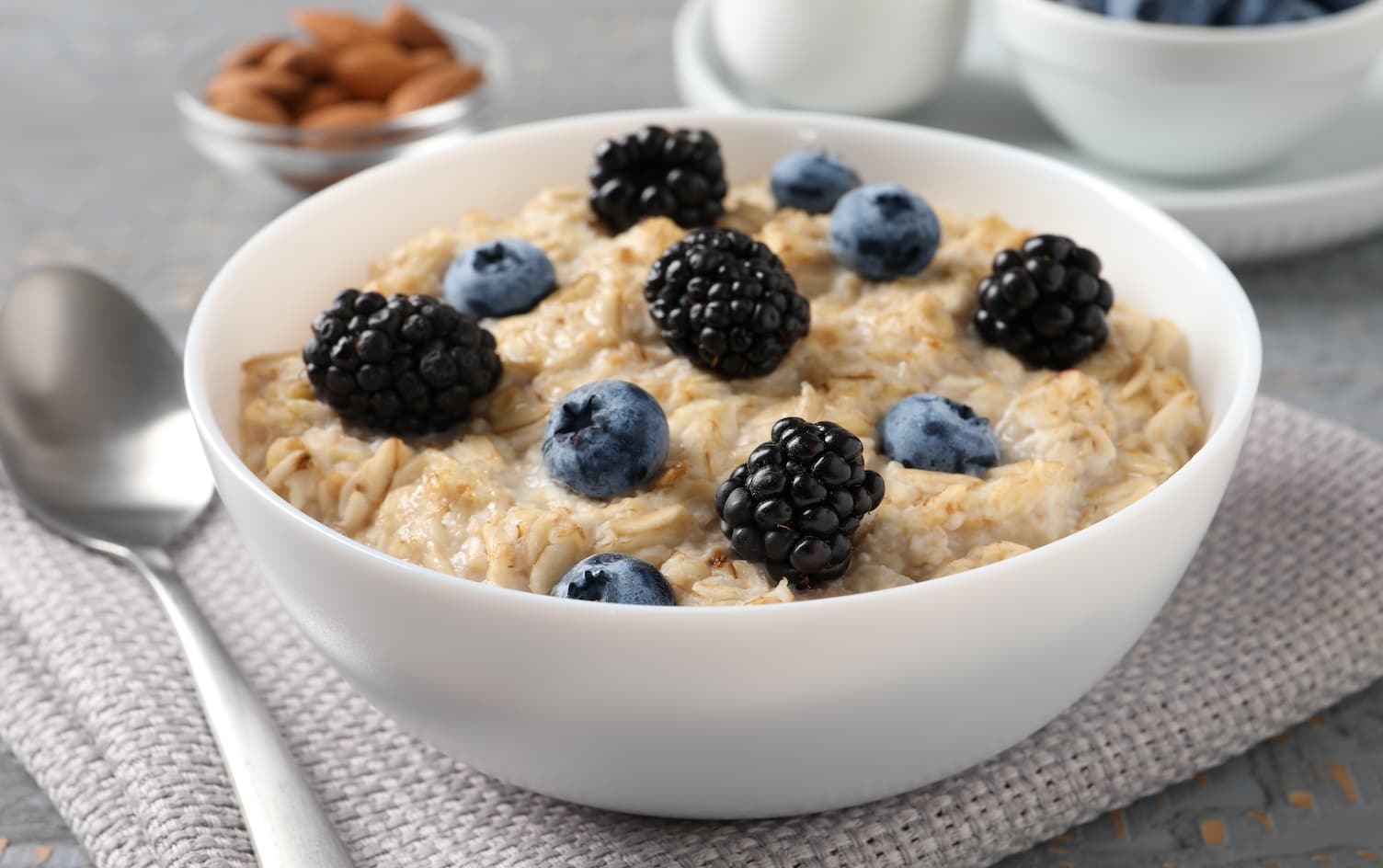
4 Low Sugar Breakfast Ideas To Get You Through the Week

Essential Guide to Processed Foods, According to a Nutrition Scientist
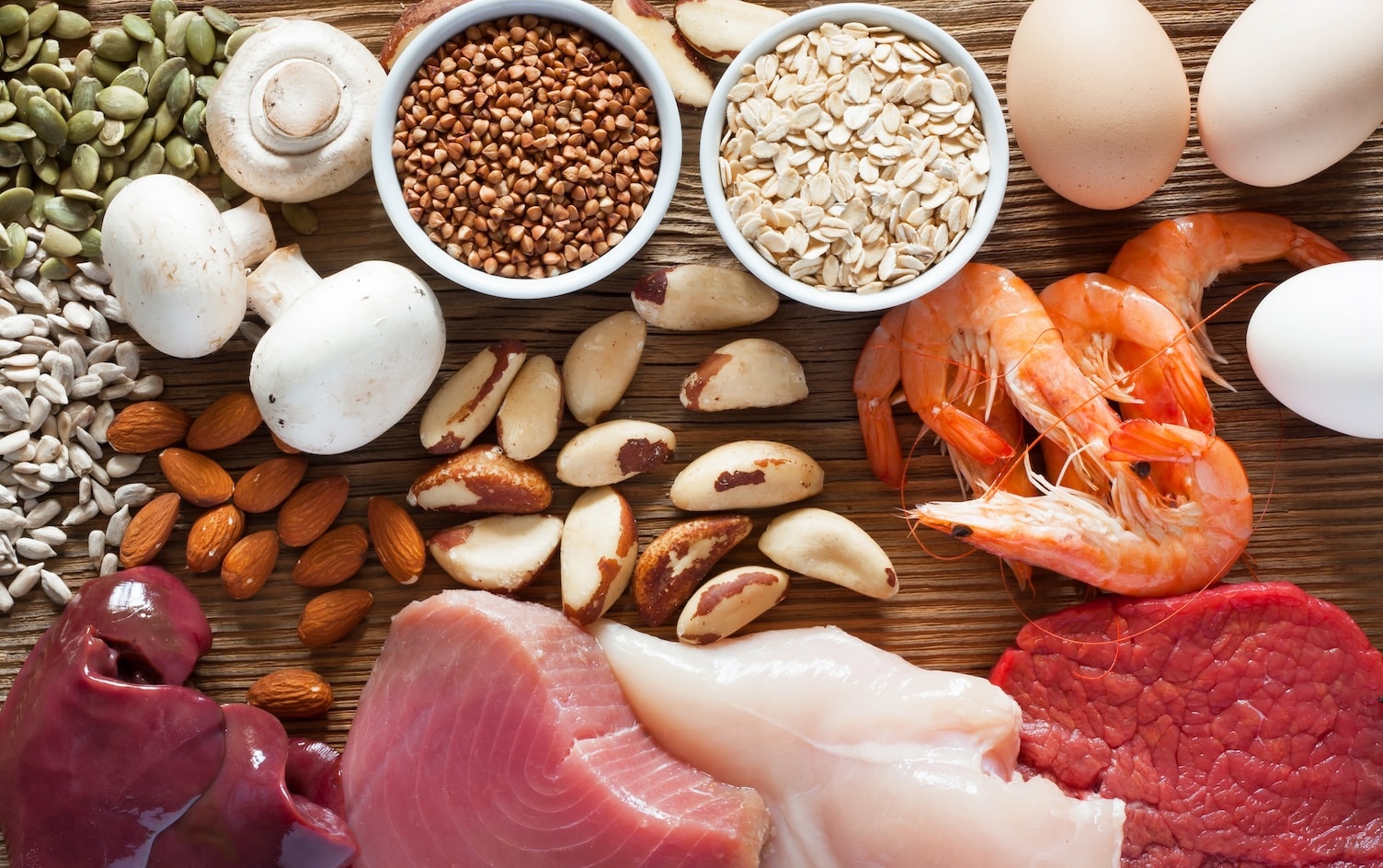
What To Know About GLP-1 Natural Alternatives

Essential Guide to GLP-1 Agonists for Weight Loss
Find your healthy, and your happy.
- Support Centre
- © 2024 MyFitnessPal, Inc
- Community Guidelines
- Cookie Preferences
- Do Not Sell My Personal Information
- DOWNLOAD THE APP
- Search Please fill out this field.
- Newsletters
- Sweepstakes
- Health and Wellness
- Weight Management
12 Women’s Stories of the Most Important Factor in Their Weight-Loss Journeys
:max_bytes(150000):strip_icc():format(webp)/faith-brar-headshot-3232d7c12f0b41ac90b32a0ec31acf99.jpg)
Weight loss doesn't happen just by amping up your cardio and turning down dessert. After deciding to kickstart a weight-loss journey and become healthier than ever before, these women say there was one motivating factor that helped them reach their weight loss goals. Here, each of these women (including "The Biggest Loser" Season 18 trainer Erica Lugo) share their personal weight loss success stories. They also offer the simple changes they made to achieve their long-term health goals. Find weight loss inspiration — and some bigger lessons — in their stories.
Potentially Triggering Language
While the intention of this article is to be a source of inspiration for those who are embarking on or continuing a weight-loss journey, some readers may find the topics discussed and the language used triggering.
Alyssa Greene
The stress of starting college, perpetual late nights and heavy drinking caused Alyssa Greene to develop an unhealthy relationship with her body. Though she exercised, she didn't pay much attention to what she was eating and her overall health until she realized a change had to be made. Over the next 2.5 years, she self-educated about nutrition and learned what and how much to eat to get the results she wanted.
Motivating Factor: Self-Discipline
As a result, Greene lost 25 pounds and relies on self-discipline as her key motivator. "I do what I want for me, no one else," she says. "For people who have a hard time making a lifestyle change because of family or friends or a significant other, it really boils down to discipline. How bad do you really want to make a lifestyle change?"
Tanisha Commodore
For years, Tanisha Commodore left no stone unturned when it came to weight loss tactics. After trying countless workout programs, and weight-loss plans like WW and Medifast, she became desperate. The influencer began entertaining the idea of going to Mexico for weight-loss surgery when her friend happened to recommend the keto diet . Intrigued, she tried it and saw immediate results. Over eight months, Commodore lost 80 pounds and has been able to maintain her weight loss ever since.
Motivating Factor: Be Patient
Tanisha documents her journey on Instagram and uses her platform to provide weight loss inspiration and resources to those looking to try the keto diet themselves. "You didn't put it on overnight, so don't expect to lose it overnight," she tells Shape . "Just be patient with yourself."
Maggie Fierro
After having her third child, fitness blogger Maggie Fierro began to feel disconnected from her body. "I was 4 months postpartum and completely frightened to actually look at myself in the mirror," she says.
So, she decided to start Kayla Itsines BBG (Bikini Body Guide) program to help kick-start her weight-loss journey. The convenience of being able to work out at home, combined with following a regimented healthy eating routine, helped Fierro figure out a lifestyle change that worked for her — and she couldn't have done it without the BBG community.
Motivating Factor: Find a Community
"The community made all the difference when I was starting my journey...[it's] been an incredible source of inspiration and support, " she says. "You can't always rely on motivation. You need to develop discipline and commitment for the moments when you don't feel like it."
Cookie Miller
Now a certified personal trainer, Cookie Miller spent years struggling with her weight. At 230 pounds, she was diagnosed with acanthosis nigricans — a skin condition that causes dark, velvety patches to appear in the armpits, groin, and neck of people who are overweight. At that point, she realized her health had to become a priority.
Motivating Factor: Take Progress Photos
Over the course of the next 18 months, Miller lost 100 pounds by following a regimented food and exercise plan. What helped her stay accountable was the progress photos that she shared with her Instagram followers. "I posted my first before-and-after picture on Instagram at the one year mark of my fitness journey," she says. "There was no going back after that picture and it has helped hold me accountable ever since."
At her heaviest, fitness blogger Irvy weighed 310 pounds. In 2015, after yo-yoing with her weight for years, she finally decided to make a change once and for all. That said, it took a while for her to figure out that to make a long-lasting lifestyle change, the desire had to come from within.
Motivating Factor: Do It For Yourself
"You have to be self-motivated; you need to do it for your own reasons and strictly for yourself," she says. Now, she goes to the gym six times a week and meal plans, which has helped her lose 132 pounds.
Denita Elizabeth
At one point, Denita Elizabeth weighed over 250 pounds and couldn't remember what it felt like to be healthy. "I was tired of feeling tired," she tells Shape . "High blood pressure and diabetes run in my family and I knew that if I didn't choose health, I wouldn't make it to 30." Determined to make a change, Elizabeth signed up for a SoulCycle membership and immediately fell in love. "I finally found an exercise program that I loved and I continue to do it today," she says. Today, Elizabeth is not only a personal trainer but is also an instructor at SLT .
Fitness aside, Elizabeth also switched up her food intake. "I stopped eating unfulfilling diet foods and learned to cook more nutritious meals ," she says.
Motivating Factor: Improved Overall Health
Even though she's lost 100 pounds, Elizabeth says the scale is the least of her worries. "Losing weight is great," she shares, "but finding overall health is what really changed my life."
Being a mother comes with a plethora of responsibilities. And Erica Lugo knew something had to change when she couldn't uphold them because of her weight. She could no longer play with her son, because at 322 pounds, she simply didn't have the energy. That's when she decided to lose weight by sticking to a simple plan. She signed up for a Planet Fitness membership and focused on reducing her calorie intake and increasing her activity level. When she began to see results, she realized that her greatest motivator was herself. "The hardest workout you'll ever do is in your head. Not with a trainer or fitness guru," she wrote on Instagram. "It'll be with yourself. It'll be that moment your head and heart say give up and that passion and want inside of you fights back."
In just a year, Lugo had lost 122 pounds , but it took her another two years to reach her 150-pound weight-loss goal. Lugo (a fitness trainer and wellness coach) helped people kickstart their own fitness journeys — following the same back-to-basics approach she used — as a trainer on Season 18 of The Biggest Loser.
Motivating Factor: You're Stronger Than You Think
"Today, working out and eating healthy isn't about how awesome I look," she told Shape. "It's about inspiring people to realize that neither illness nor your weight define you and that you're so much stronger than you think."
Alice Fields
Alice Fields spent years focusing on cardio , thinking it would help her lose weight. She also maintained a strict eating plan, but still wasn't seeing the results she wanted. It wasn't until she switched to powerlifting and started consuming a more wholesome diet that she began losing weight and reaching her goals.
Motivating Factor: How You Feel Is Most Important
She realized that it wasn't the numbers on the scale, but how she felt that truly mattered. "I definitely thought doing only weights would just make me heavier," she says, "but I quickly realized, the more muscle I had, the faster my body burned fat. Not just that, but having more muscle gives you that 'toned look' a lot of women want."
Kassidy Riekens
At age 25, Kassidy Riekens weighed 260 pounds and started to struggle with her self-confidence. While she was determined to take back control of her life, she knew she had to fix her bad habits first. For workouts, she did cardio three to five times and week and it helped to have support from her friends and family.
Motivating Factor: Find Creative Ways to Stay on Track
With time, she's learned to do things in moderation and found creative ways to stay motivated . She also took progress pictures. "I don't think people realize how important it is to take pictures of yourself while you're literally transforming your body," she says. "In doing this I came to the realization that it was the 'old' me motivating the 'new' me."
Katie Bolden
Despite trying multiple diets and exercise programs, Katie Bolden couldn't move the needle on the scale. Even after being diagnosed with polycystic ovary syndrome (PCOS) in 2010, she struggled to make a change. It wasn't until she went partially blind and was diagnosed with early symptoms of multiple sclerosis , a chronic neurological disease, that she was forced to reevaluate her lifestyle. "I wanted to start taking better care of myself once I began getting sick and experiencing neurological symptoms," she tells Shape . "I also wanted to start a family after dealing with PCOS and infertility."
So, Bolden started using the weight-loss app MyFitnessPal to track her nutrition intake and began adopting healthier eating habits. Simultaneously, she started swimming and hiking and eventually felt comfortable running and lifting weights.
Motivating Factor: A Supportive Family
In three and a half years, Bolden lost 150 pounds and credits her family for her weight loss motivation. "My husband and our kids — who didn't even exist at the time — inspired me to change not only my health but my entire life," she shares.
Misty Mitchell
After suffering from a herniated disk in her lower back, Misty Mitchell's life fell apart. She lost her job and home and coped by drinking a lot of alcohol. It wasn't until Mitchell stepped on the scale that she realized how much her health was suffering. "On February 19, 2015, I stepped on the scale and weighed almost 300 pounds, was most likely an alcoholic, and I smoked," she says on her website .
Motivating Factor: Documenting Weight-Loss on Social Media
"I didn't like where my life was going and I was sick of being unhappy so I decided to change everything." Overnight, she quit drinking and traded in junk food for fish and veggies. In just over a year she lost 137 pounds and now weighs a healthy 159 pounds. Documenting her weight-loss on Instagram was her biggest motivator and encouraged her to continue on her journey.
Rebecca Grafton Bardwell
After being overweight her whole life, Rebecca Grafton Bardwell decided to make a change once and for all. Of course, that isn't always as easy as it seems. Over two years, Grafton Bardwell learned how to portion her food and exercise at a gym without caring what others thought of her. Her 100-pound weight loss made her feel healthier and happier than ever.
Motivating Factor: Stick to a Healthy Living Plan
Rebecca explains that there is no secret formula to losing weight. The key is to eat right and exercise. It may not happen super fast, but if consistency is key.
Weight-Loss Resources
Shape is an inclusive community of wellness for all. If you're looking for tips or strategies for exercising or improving motivation for weight loss, you've come to the right place.
- How to Build Your Own Weight-Loss Workout Plan
- The 19 Best Weight-Loss Motivation Tips
- The 7-Day Diet Plan for Weight Loss
- Why You're Gaining Weight While Working Out and Eating Well
- Lost All Motivation to Workout? Try These Strategies to Regain Momentum
- 10 Workout Motivation Tips That Will Get You Off the Couch
Related Articles
10 Things I've Learned About Losing Weight, One Year After I Started
It's been a journey!
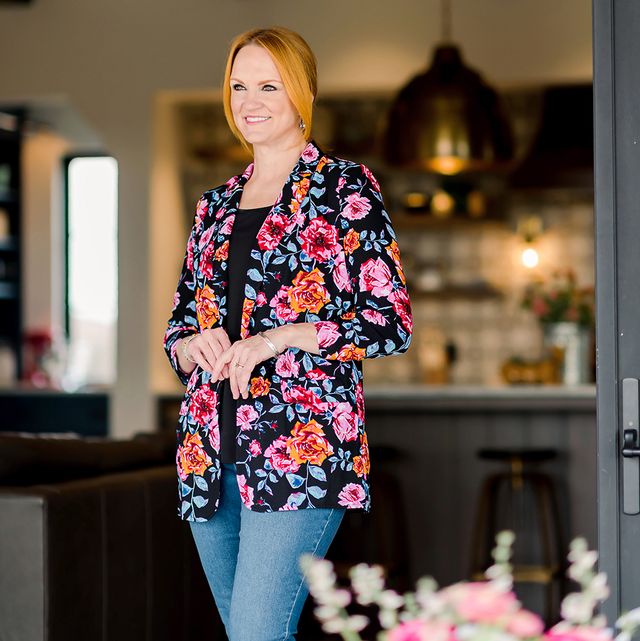
Roughly one year ago, I decided I wanted to lose weight. I had zero idea how I was going to do this, I only knew that I needed to start. After years of writing cookbooks, hosting a cooking show, owning a restaurant and bakery, and having a cooking website, the weight had crept up through the years and my exercise/activity level had all but slowed to a stop. With the exception of walking with the dogs, I had pretty much given myself permanent permission "not to have time" to exercise because of work, scheduling issues, and any other excuse I could come up with. So last January, at my highest weight ever and with the wedding of my daughter looming in May, I just knew I had to start.
One year later, I've lost 55 pounds.
10 Things I've Learned About Losing Weight
First, to summarize the June post :
I didn't use a trainer, I didn't do Keto or Paleo or follow an official diet, I didn't eat specialty foods, and I didn't do intermittent fasting. Those things work for lots of people, which is wonderful! I just hadn't had success with them.
Here's what I did do: I ate fewer calories. I consumed smaller portions. I weighed my food. I walked and did the rowing machine. I built muscle by lifting weights and doing lunges and squats. I ate more protein, ate less sugar and drank no alcohol. I used an app called Happy Scale to track my daily weight . I switched to a standing desk and generally tried to stand and move more.
So here's what I've learned, one year later! (In no particular order.)
1. The initial, more intense, stage doesn't have to last forever.
I started my weight loss journey in January 2021 and went all-in for the first five months. After that initial stage of counting calories, lifting weights, etc., I relaxed my efforts a little bit beginning in the summer months. During those first five disciplined months, I'd developed a good sense of portion sizes, calorie amounts, and protein percentage, and I was able to go about daily life with a general sense of the choices I needed to make. If I ever had a question, I'd break out the food scale or Google the calories of a common food, but I generally put away the food scale last July and never looked back.
I was glad I'd been so strict for that first stage, because it wound up being a nice crash course that equipped me going forward. Starting out with that discipline actually allowed me more freedom later in the process.
2. Building muscle is the gift that keeps on giving.
I can't emphasize this enough: Building muscle—not just the smaller muscles in your arms, but the larger muscles in your legs and butt—will turbo charge your weight loss like nothing else and set you up for more success.

The months I spent doing squats, lunges, and dead lifts early in my weight loss process really laid the foundation for a summer and fall of more efficient calorie burning. I'm not a physician or trainer, but I can tell you that as I watched the number on the scale continue to decrease through the summer and fall, I knew without question that it was largely due to the muscle I'd built. It's like an engine that's always working behind the scenes! The great part about it is that you can have a day or two or three when you fall off track with eating or exercise, but if you have that strong foundation of muscle, you can climb right back on the bike and not feel (or see) the consequences as much.
3. My body is now accustomed to eating smaller portions.
One of the primary things I learned in the initial months of my weight loss was just how off the rails I'd been for years when it came to portion size! During the five-month period I weighed my food and counted calories, I really broke the spell of eating too much volume and during this process, I trained my body to get used to smaller—well, I should say more normal—portions. The answer "smaller portions" is so lackluster and boring when someone is asking me about losing weight, but it has absolutely held true for me. Today, as I point out below, I'm eating all the foods I love, but my body is satisfied with much less of it.
4. Alcohol, in moderation, is fine.
I knew I had to eliminate alcohol entirely during the initial/intense stage of my weight loss, but beginning in the summertime, I started having a social drink or two here and there. I avoided (and still avoid) anything that's sugary or otherwise really caloric. Off limits are frozen drinks such as daiquiris and margaritas, and sweet cocktails that include syrups and lots of fruit juice.

That said, lemon and lime juice are my friend when it comes to booze, and my two favorite drinks are Ranch Water (clear tequila, lime juice, and sparkling water over ice) and White Wine Spritzer (small amount of cold white wine, sparkling water, and lemon slices.) These sparkling water-spiked drinks are great for two reasons: First, they force you to hydrate as you ingest the alcohol or wine! Second, they keep you from drinking too much alcohol. They also spread out the calories more: In other words, you can have two drinks for the calories of one.
5. Moving every day, even if I don't exercise every day, is very important.
Starting in September 2021, when school and football started and I had lots of filming and cookbook events going on, I fell off my disciplined exercise routine a bit. I still did the rowing machine, lifted weights, and did Pilates, but I was exercising only two or three days a week, instead of the five or six days I was doing before. As I explained in #1 above, I had a good foundation of eating smaller portions and a rock solid (haha, just kidding...let's say firm) foundation of muscle, so fortunately this decrease didn't undo my hard work. However, I found that if I had a couple of days at home when I was sitting and working a lot, it showed itself both in the number on the scale and in the way I felt overall. So I made sure to stay more committed than ever to using my standing desk, stepping away for frequent breaks, and putting myself in a position to move more. Today, I'm still using a standing desk and not letting myself collect too much dust during the day.
Moving is good! (Essential, actually.)
6. It's important for me to weigh myself daily.
I realize this can be triggering for some, and I can't emphasize this enough: My decision to weigh myself every day is not about fixating over every pound and ounce. I've just found that when excess weight has crept on through the years, it has happened when I've chosen not to weigh myself. Before I decided to lose weight last January, I don't think I'd stepped on a scale for two years. I willfully hadn't weighed myself because I never wanted to know. Without seeing that number go up over time, it was easy for me to tell myself that it was probably just a few pounds. So part of my routine now is weighing first thing in the morning (before water, coffee, anything) and logging it in my now-favorite app called Happy Scale . 😊 It's good to see the trends over time! (As you'll read in my June post , Happy Scale was an incredibly helpful tool during the past year!)
Here was my weight chart on Happy Scale from January 2021 to June of 2021.

And here's a screenshot of the chart now, showing January 2021 to February 5, 2022.
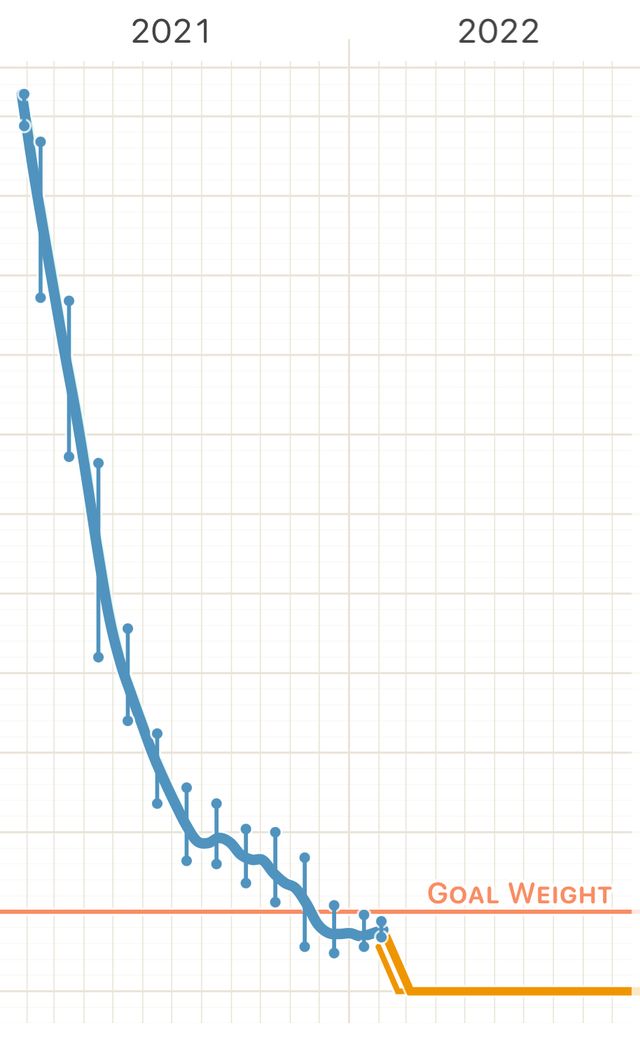
You can see the intense, more aggressive period of weight loss in the first half of 2021, but you can also see how it slowly became more gradual through the summer and fall. And now, I'm settling in just below the original goal weight I imagined for myself—which, by the way, was intentionally realistic! I wasn't striving for pre-marriage, pre-baby, pre-thirties weight! 😊 Just a good weight where I thought I'd feel and look better, and where I felt I'd be able to maintain and have longer term success.
7. There's nothing on my list of banned foods!
During the first five months of my weight loss, I was more strict. I did not drink alcohol, and I largely stayed away from foods that had added sugar.

While I did eat small portions of all the foods my family was eating, I also ate a higher amount of high-protein foods such as egg whites, chicken, fish, lean beef, plain Greek yogurt, cottage cheese, Swiss cheese, and dark, leafy greens.
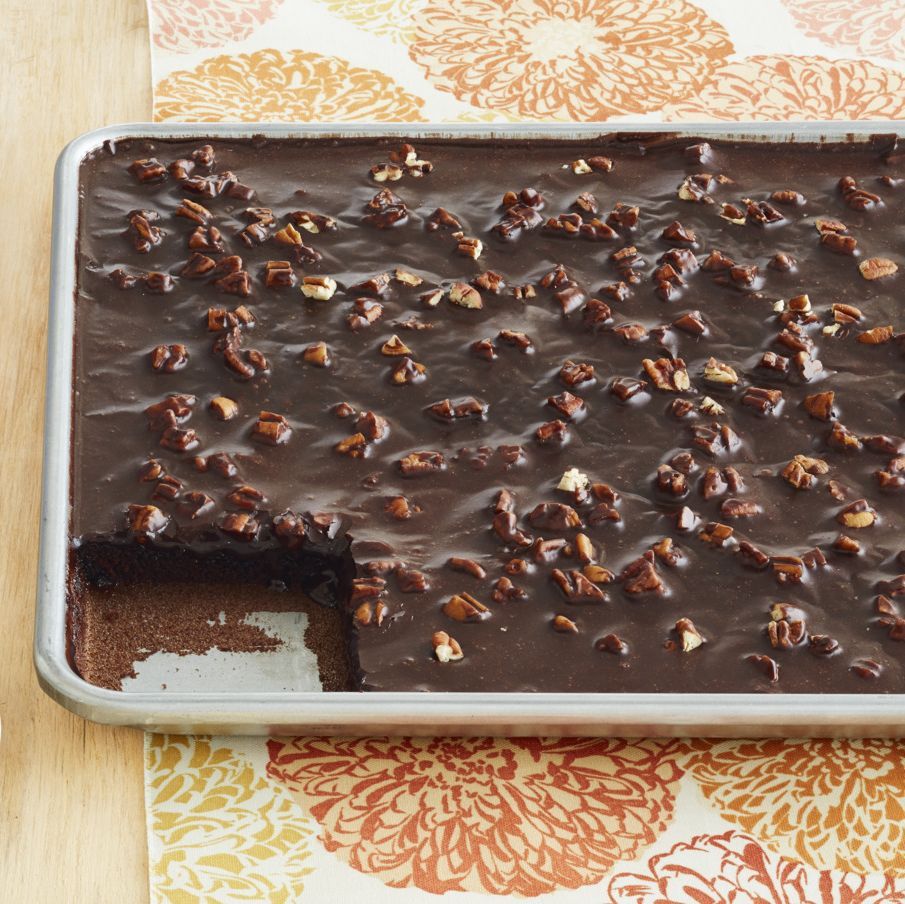
Now, a year later, I eat pretty much all the foods I love, with two big differences: First, my portions are much more reasonable. Second, I do still pay attention to the daily proportions I'm devoting to both high protein foods and foods with wasted calories. I'll carry this thought over into the next paragraph. (Oh! And a correction: Bananas are the one item on my list of banned foods. Ha!)
8. I try to minimize wasted calories.
I'm so grateful for that initial five months of nutritional boot camp I put myself through, because in addition to resetting my whole understanding of portion size, it also made me much more aware of wasted calories, and the importance of minimizing them as a percentage of my diet.
Foods that I consider wasted calories: sugary soft drinks, cookies, cake, potato chips, doughnuts, and the like.
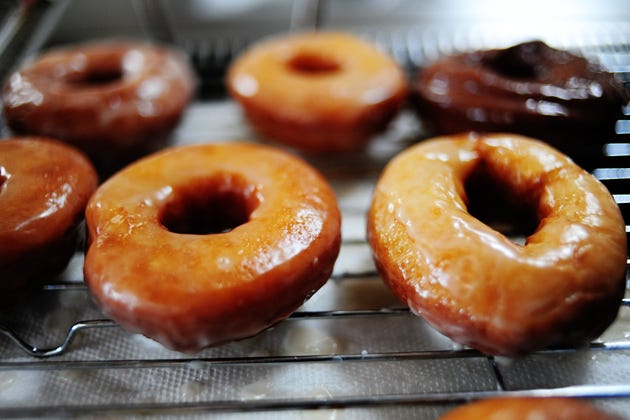
In my June post, I gave this example: "If I am eating X calories today, do I want to blow 300 of those calories on a doughnut? Or do I instead want to spend 50 of them on a piece of good dark chocolate to get my fix, then keep eating things with more nutritive content?" Months later, I apply that thinking to all sorts of high-sugar, high-carb foods that don't have any nutritional value. Using the doughnut as an example, some days I eat half the doughnut. Some days I decide not to eat the doughnut. Other days I'll pinch off a bite of the doughnut. Heck, there will be a day now and then when I will eat the whole doughnut. There's no hard and fast rule, but I'm just more mindful of it now, and I try to factor the doughnut into the day as a whole. (In the old days, I might eat three doughnuts and not give it a thought. Ha.)
Another example I gave in my June post: I still eat chocolate cake; I just eat a Rhode Island sized piece instead of a Texas sized piece!
9. Steadily doing everything is so much more effective than going all-in on just one thing.
Looking back on the past year, I'm glad I started out pretty aggressively and had the wedding as an initial motivator, because it compelled me to tackle my weight loss from several different angles. I've been able to experience different approaches: building muscle, eating more protein, moving/standing more, exercising on the rowing machine, logging my daily weight, etc. I can continue all of these over time, or I can emphasize some more than others, or choose some over others. This has expanded my options and made me feel like I have more control over the inevitable ebbs and flows over time.
10. Losing weight and becoming healthy is a lifestyle change, but it hasn't changed my life. (Or has it?...)
There's something about the word "lifestyle change" that I have always resisted. I would hear people say "Losing weight is about changing your lifestyle" and I'd think, "But I don't want to change my lifestyle. I just want to wear smaller jeans." The phrase lifestyle change , to me, meant that one's day-to-day life would be totally different—and maybe unrecognizable? I think that's what always made me bristle .

Maybe it would be better to say perspective change instead of lifestyle change. Because that's what it has been for me. During the first five months (and in the ensuing months) of my journey, I experienced a seismic shift in my perspective of everything I've mentioned: Portion size, calories, daily movement, sitting vs. standing, protein percentage, muscle mass, wasted calories, and so on. I think about all of those things totally differently now.
I'm going to share a before and after pic below, not to be critical of myself, and definitely not to suggest that pre-weight loss is somehow "bad" and post-weight loss is somehow "good." But it is helpful for me to see the distance I've come, and to know that the changes have been good for me.
A year ago, my life was comprised of living on the ranch, filming my cooking show, working on cookbooks and my product line, and being a wife and slightly weird mom.

Today, my life is comprised of living on the ranch, filming my cooking show, working on cookbooks and my product line, and being a wife and slightly weird mom.
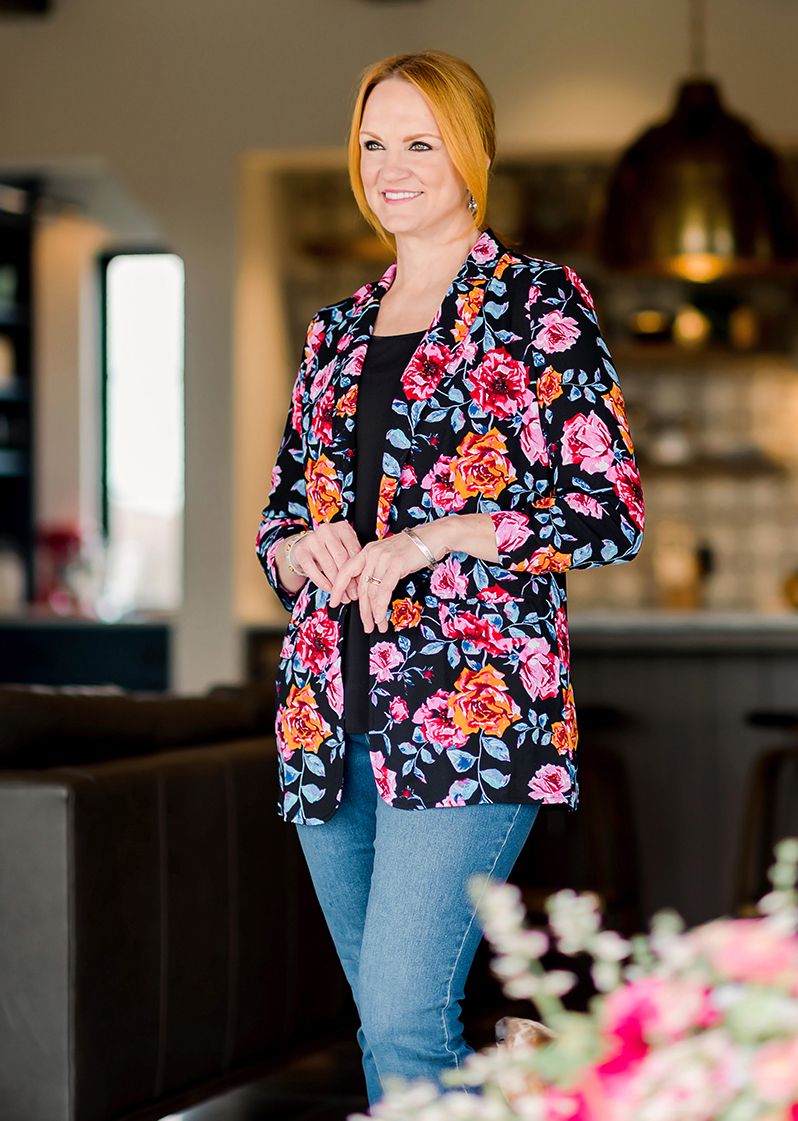
Only difference between before and after is that I've lost weight. Aside from that, my daily life really hasn't changed all that much.

Today I feel stronger, more in balance (both physically and mentally), and I have more spring to my step. I am wearing clothes I wasn't comfortable wearing a year ago, I feel better about the way I look, and I'm smiling more (yes, even more than I smiled before, which was a lot--haha) and that is a nice feeling at age 53.
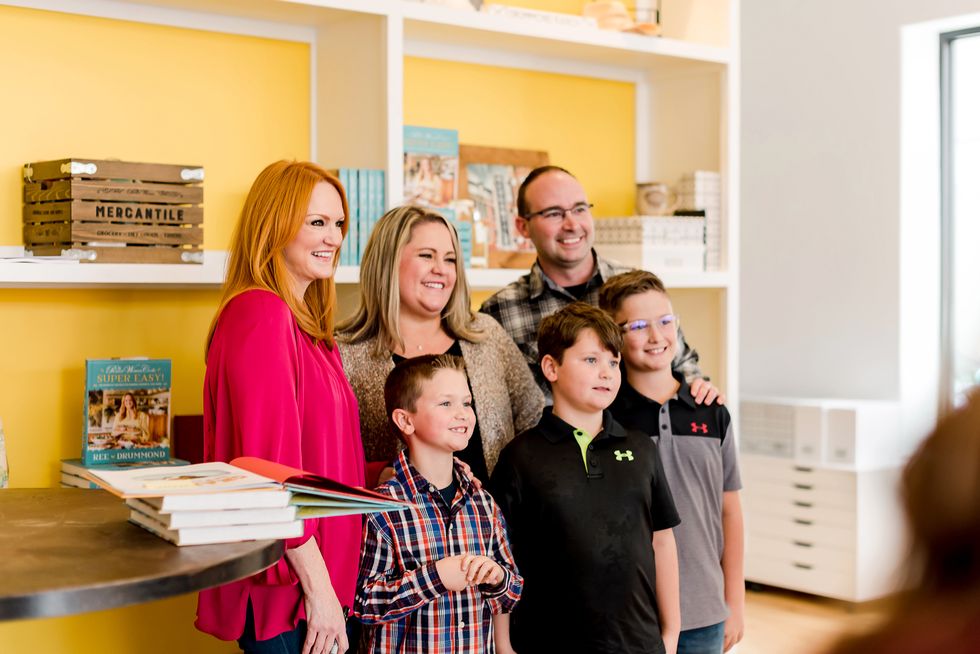
After the experience of the past year, I feel better. I have more energy. I'm more motivated to take on projects and put things on the ol' calendar. Feeling good bleeds over into all aspects of my life. And that has changed my outlook.
But to come full circle...it hasn't changed my life itself. I still have cow manure in my yard, for example. It's on top of snow, and it's ruining the dreamy winter vibe. 😂 Gotta go clean that up now, but at least that'll help me get out and move!
I’m a desperate housewife, I live in the country, and I’m obsessed with butter, Basset Hounds, and Ethel Merman. Welcome to my frontier!

.css-l114lb:before{background-repeat:no-repeat;-webkit-background-size:contain;background-size:contain;content:'';display:block;margin:auto auto 0.25rem;}.loaded .css-l114lb:before{background-image:url('/_assets/design-tokens/thepioneerwoman/static/images/butterfly.svg');}@media(max-width: 48rem){.css-l114lb:before{width:2.039rem;height:1.616rem;}}@media(min-width: 48rem){.css-l114lb:before{width:2.5rem;height:1.9rem;}} Confessions

How Ree Healed Her Hair

Ree's Photos from the Past Month!

Ree's Family Easter Album

Ree's Fun Girls' Trip!

Ree's Four Wedding Dates!

Ree and the Kids in Colorado

Ree and Ladd Got a Hot Tub!

What's Ree Getting Ladd for Christmas?
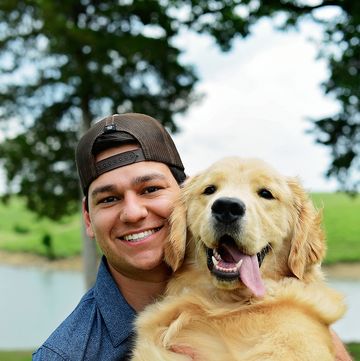
Ree Drummond's Thanksgiving Guest List for 2023

My New Cookbook Launches Today!
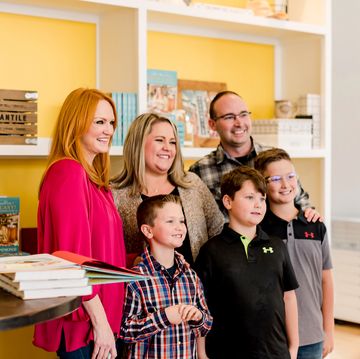
Here's Ree's Cookbook Tour Schedule!
- Search Please fill out this field.
- Newsletters
- Sweepstakes
- Special Diets
- Weight Loss
How to Lose Weight When You Don't Know Where to Start, According to a Dietitian
These 10 strategies can help when you're feeling overwhelmed. Here are scientifically proven tips, plus advice from someone who's lost 50 pounds and kept it off.
Lainey is a weight-loss dietitian who helps people ditch diets, change their habits and create a healthy lifestyle that lasts. She has Master's in Nutrition Communication from the Tufts Friedman School of Nutrition Science and Policy and completed her dietetics training at Massachusetts General Hospital, a Harvard teaching hospital. She writes on a variety of topics including weight loss, gut health, pregnancy, breastfeeding and trendy diets. When she's not writing or counseling, you can find her on a run, out to brunch, or with coffee in hand trying to keep up with her two little boys.
:max_bytes(150000):strip_icc():format(webp)/lainey-younkin-headshot-1x1-1-24a06801d6af4fbb9ea88f0a706709c2.jpg)
Elizabeth Ward is a registered dietitian and award-winning nutrition communicator and writer. She has authored or co-authored 10 books for consumers about nutrition at all stages of life.
:max_bytes(150000):strip_icc():format(webp)/elizabeth-ward-2000-02e67fa239844547a8a14ab32548560e.jpg)
1. Embrace the Long Game
2. rely on a professional to help, 3. adopt the 80/20 philosophy, 4. understand set point theory, 5. track your food (at least to start), 6. rethink the scale, 7. track other metrics, 8. get moving, 9. focus on fiber, 10. eat protein at every meal, the bottom line.
The clickbait is everywhere with snazzy headlines saying, "Drop 10 lbs. Fast" or "Fit Back into Your Skinny Jeans." But what if you feel like you have an overwhelming amount of weight to lose, and you just don't know where to start?
You may have tried keto , celery juice , detoxes, low-carb, low-fat—you name it. You might even be pretty good at losing weight—the problem is you can't seem to keep it off.
If this sounds like you, keep reading.
"Mindset is like 90% of the work." That's what my client, Sarah, said to me regarding the 50 pounds she lost and has maintained. I'm sharing tips directly from her on how to get started—and stick with it—when you're not quite sure where to start on your weight loss journey.
Changing habits requires repeating the new behaviors over the long term, according to 2021 research in Psychology & Health . This includes setting realistic expectations .
A safe, sustainable amount of weight to lose is about 1/2 pound to 2 pounds per week. In reality, however, that might look more like 2 to 3 pounds per week in the beginning, then perhaps 1/2 pound down the next week, then up a pound the next week, then maintaining for a few weeks before dropping a pound again.
Your weight loss graph will look more like a staircase or a squiggly line than a perfectly straight line. If it's jumping all over the place, but trending down overall, you're doing all right.
This is not the time to try another detox or strict meal plan that an Instagram influencer is promoting. Those are diets in disguise—they work for the short term but not for the long term.
Long-term weight loss is about small habit changes you can keep up with over time. Those who are successful at losing weight usually work with professionals, typically, a health care professional, registered dietitian and therapist.
Yes, a therapist. "I've crash dieted and lost 100 pounds before, and I was physically thinner but not at all mentally healthier, so patience and persistence and the ability to fall down and get up over and over again are key," says Sarah. "Also, if you feel you have an eating disorder, like binge eating, seek help from a counselor that specializes in that."
This journey is hard alone. It can also be hard with close friends and family. Health care professionals provide two important things: science-based weight-loss recommendations and accountability from someone who isn't a close friend.
Weekly, or even daily, check-ins are key to helping you stay on track. "I think the most important things for me have been getting accountability that best matches my personality, always allowing the 20%, perfecting the art of moving on and always zooming out and focusing on the long game," reports Sarah.
Many insurance plans cover visits with registered dietitians and therapists, so check with yours to see if your visits may be covered.
So what is the 20% that Sarah mentioned? Think of it as all of the foods you restrict when you're dieting but eventually end up bingeing on.
Sustainable weight loss is about ditching the all-or-nothing mentality, letting go of the idea that one meal can make or break your efforts and embracing balance. Aim to follow the MyPlate guidelines about 80% of the time throughout the week and on weekends. That means trying to have three meals per day, most days, filling your plate with about one-half of vegetables and fruits, one-quarter of whole grains and one-quarter of protein with some healthy fat.
Then, don't stress about the rest. It's a "flexible structure." No guilt allowed.
The body likes balance. Body temperature stays within a narrow range of 98.6°F. The pH of blood is around 7.4. Your body has a weight range it likes to stay within too: It's called your set point.
Unfortunately, it's easier for this range to move up than it is to move down. This is for various reasons scientists are still trying to figure out. For example, a 2022 study in the journal Obesity found that a 16% weight loss decreased metabolic rate (the number of calories burned at rest) in premenopausal women. Weight loss has also been shown to increase ghrelin, the hormone that signals hunger, in breast cancer survivors, per a 2021 study in NPJ Breast Cancer .
With that said, lowering your set point is not impossible. After all, there are numerous success stories, like the people in the National Weight Control Registry who have lost 30 pounds or more and kept it off for at least one year.
So, how do you do it?
According to Beth Israel Deaconess Medical Center (BIDMC) , crash dieting is not the answer. Instead, aim to lose 5% to 10% of your body weight at one time. "That's the amount of weight you can lose before your body starts to fight back," BIDMC reports on its website.
Then, and here's the hard part, work to maintain that loss for six months before trying to lose another 5% to 10%. This is the time during which people often throw in the towel or opt for the crash diet their friend is doing.
But, if you can stay the course and ride out the maintenance for six months, "You can repeat the cycle and reset your set point again by losing another 10%. Through small, gradual changes in your daily habits, you'll be able to stay at that new, lower weight for the rest of your life. This prescription is vital to outsmarting the body's natural tendencies to regain weight," according to the BIDMC website.
You may also have to reassess your initial weight-loss goal. If you reach a point where you feel great, are healthy and have habits you can sustain for months, but the number on the scale is higher than you'd like, it may be time to embrace a new number.
Research, like the 2019 study in the journal Obesity , suggests that those who track their food are most successful with losing weight and keeping it off.
While tracking isn't meant to be done forever, it can be a helpful tool until new habits stick. A habit is an automated behavior. The more habits you create, the fewer decisions you have to make and the more brain space you have to think about other things.
Starting your weight loss journey by tracking your food intake may give you a better idea about what a serving of oatmeal looks like in your bowl, or how many random handfuls of chips you munch on as you try and figure out what to make for dinner. You can track food in a written diary, by taking photos, in a calorie-counting app or a combination of these.
If you've never tracked calories, it can be a good place to start so you can become familiar with portion sizes and macronutrients (fat, protein and carbohydrates). A word of caution, though—calorie counting can become obsessive and backfire, leaving you out of touch with your hunger and satiety signals. You may be more likely to turn to an app to tell you what and when to eat, instead of listening to your body.
Work with a registered dietitian who can help you figure out the best tracking approach for you and can also review your meals so you have accountability.
A 2021 study in Translational Behavioral Medicine suggests that those who self-monitored their weight lost more of it.
Here's the caveat: Weight should not be the only metric you track. And you need to understand what the scale measures.
The scale does not measure fat—and you do not lose or gain fat overnight.
The scale is a measurement of everything in your body, mostly fluid, but also bones, organs, fat and muscle. The scale will show your weight within about a 3- to 4-pound range and goes up and down for various reasons. If you poop, it goes down. If you eat salty takeout food, it goes up (because salt encourages water retention). A strength-training workout can bump it up, due to a temporary increase in inflammation.
Daily weigh-ins do more harm than good for some people, so weighing once a week might be a good frequency. Or, for some, the scale might need to go. If you find you obsess over the number, it stresses you out too much or you're equating the number to your self-worth, ditch the scale. There are other ways to measure your progress.
Sarah was stressing so much about what the scale would say every Monday that she decided to weigh every day and found it more helpful. "Personally, weighing daily has helped because it's normalized the fluctuations for me and helped me realize when I'm averaging in the wrong direction. There are great apps that plot the average trend of your weight, which helps, but I think overall daily weighing has truly been helpful," says Sarah.
Several of my clients might not see the scale move in months, but they lose inches and feel amazing. In addition to weekly weigh-ins, consider taking waist circumference measurements and progress photos once a month.
Five pounds of fat and five pounds of muscle weigh the same, but muscle takes up less space (and adding more means you're getting stronger), so these metrics help you see body composition changes and will motivate you to keep going.
In addition to how you look, take note of how you feel. Can you walk further, run faster or do a pushup? If you know what they were when you started, have your cholesterol levels or blood sugar numbers improved? Include some goals around what your body can do, rather than how you look.
Diet matters more than exercise for weight loss, but exercise is crucial for keeping off the weight. Plus, exercise has plenty of other benefits .
If you are sedentary and then start moving, you will start burning calories, which will create a calorie deficit. "Finding exercise you love helps to maintain the weight loss," reports Sarah.
Don't know where to start? Start walking. Create small, attainable goals like 15 minutes per day and work up to 30 minutes. If you currently walk 2,000 steps per day, don't try to walk 10,000. Start with 4,000 per day and add more every couple of weeks.
Next, add strength training, using either weights or your body weight. Start with one day per week and work up to two to four times per week. Strength training builds muscle, and muscle burns calories even when you're sitting at your desk all day.
Cardio exercise, like running, biking or swimming, is great too. A good balance is daily walking, strength training two to four times per week and cardio or high-intensity interval training (HIIT) one to three times per week.
Progressively increasing your exercise frequency and intensity will help you stick to it. And the best exercise is the one that you'll keep doing.
A calorie deficit is needed for weight loss, but instead of focusing on what to restrict, focus on what to add. The body breaks down protein, carbohydrates and fat from food and absorbs the nutrients. If you're eating more calories than your body needs, the extra will be stored as fat.
However, the body doesn't absorb or store fiber. Fiber passes through the stomach and intestines largely unabsorbed, bulks everything up and then you poop it out. Fiber is found in fruits, vegetables, whole grains, nuts, seeds, beans and legumes.
By making half your plate vegetables and fruits at most meals, you automatically shift the caloric composition of your meal. For example, 1 cup of pasta or rice is 200 calories, but 1 cup of vegetables is about 30 calories. So not only can you eat more vegetables for fewer calories, but you also get the added benefit of the fiber (as well as vitamins and minerals), which moves through your system slowly, keeping you full longer.
Fiber also expands and slows the emptying of the stomach, which sends signals to the brain that you are full. Gut bacteria feed off fiber and produce short-chain fatty acids, like acetate, which plays a role in regulating body weight, according to a 2019 review in Nutrients .
Aim for 25 to 35 grams of fiber per day or about 8 to 10 g per meal. According to the USDA, 1 cup of raspberries has 8 g of fiber, 1 cup of cooked broccoli has 5 g of fiber and 1/2 cup of black beans has about 7 g of fiber.
Along with fiber, eat protein at every meal, especially breakfast. A 2021 review in Nutrients suggests that when people eat a high-protein breakfast, they have fewer cravings and eat less later in the day.
Protein suppresses the hunger hormone, ghrelin, and is digested slowly, keeping you full longer. When protein is eaten with carbohydrates, it slows the rise of blood sugar, which prevents the spike-and-crash effect that leaves you craving carbs an hour after you eat. Include protein, fiber and healthy fat at each meal.
Protein needs are based on weight, but about 20 g per meal is a good starting point. According to the USDA, a serving of Greek yogurt packs 16 g of protein, and you can pair it with berries for fiber. Three ounces of cooked chicken , about the size of a deck of cards, has about 26 g of protein. Beans are a protein-packed vegetarian option.
If you feel overwhelmed with how much weight you have to lose, start small. Don't try to tackle everything at once. In order to lose weight and keep it off, you need to embrace a long-term mentality and focus on small habit changes. Get professional help so you have accountability and can focus on the habits that move the needle most. Track other metrics, along with the scale. Finally, move your body most days, focus on making half your plate vegetables at meals, get out of the all-or-nothing mentality and celebrate your success along the way!
Related Articles

6 Tips for Restarting Your Weight Loss Journey
W e make self-care goals out of a desire to live our best lives. The trouble is, these goals aren’t always easy to keep. Whether your intention was to eat healthier, exercise more, or something else, it’s only natural to feel disheartened if you’re not quite batting a thousand .
The reassuring news is that no one’s path is completely bump-free, and it’s never too late to dust yourself off and get back on track . Here, experts share six powerful ways to help you bounce back and resume your weight loss journey — with long-term success as the target.
1. Be Kind to Yourself
“Remember to give yourself grace. No one is perfect, and sometimes life doesn’t go as planned,” says Alyssa Smolen , a registered dietitian nutritionist based in Essex County, New Jersey. “Life is unpredictable. A death in the family, sudden illness, or even a new job could interfere with someone’s plans for weight loss. When this happens, it’s important to tell yourself that this blip is temporary,” she says, and not a reflection on you.
Indeed, recent research shows that in the face of weight loss setbacks, being kind to yourself could help you bounce back more easily. In a study consisting of 140 participants, researchers sought to understand the immediate role that self-compassion plays when it comes to preventing demoralization from dietary lapses. They discovered that those who practice self-compassion, including the ability to treat oneself with the same sensitivity and kindness that they would offer to friends, experienced a greater sense of self-control over weight management behaviors in the hours following a setback.
“Results suggest that self-compassion following dieting setbacks may prevent goal disengagement, and that self-kindness is the facet most strongly associated with adaptive responses to these setbacks,” the study’s authors write.
An example of this is to skip the self-blame and remind yourself that you’re human, says sports dietitian and fitness coach Umo Callins, RDN, founder of Well Rooted Health and Nutrition in Oklahoma City. “Changing habits is not easy, and challenges are to be expected in your weight loss journey. Try to shift your focus,” she says, by acknowledging your progress instead of dwelling on your setbacks.
You can remind yourself that you started once and can most certainly start again, says Smolen. “Don’t get discouraged; just start back where you left off.”
2. Remember Your “Why”
Take a moment to recall the reason(s) you were inspired to start your weight loss journey — and hold on to that, says Callins. Perhaps you wanted to boost your energy levels, feel more confident, or improve your overall health. The “why” looks different for everyone, and it’s helpful to remember yours.
Considering life’s tendency to throw curveballs at us, it’s even more important to be driven by purpose. In a study that analyzed nearly 2,000 middle-age adults, individuals who reported a stronger sense of purpose were less likely to experience negative side effects from daily stress, such as hopelessness, shame, nervousness, and worthlessness. Sense of purpose was also associated with higher likeliness of positive emotions, including feeling calm, peaceful, proud, and confident.
The takeaway: Committing to weight loss goals is no easy task, but keeping your “why” in mind can not only help you stay resolute about your end goal, but also enhance your well-being and emotional resilience. This can ultimately help you manage everyday stressors that might otherwise derail you.
3. Shift From Self-Blame to Self-Growth
Getting back on track can be especially difficult if you’re fending off feelings of shame . However, a simple mindset shift can work wonders , says Katie Breazeale, a Temple, Texas–based registered dietitian at Nourish . For instance, instead of berating yourself for not being perfect, try learning from the experience and identifying where there might be room for improvement, she says.
To start, consider asking yourself if your diet plan was overly rigid. “ Being too restrictive with calories or food choices is difficult to sustain and can lead to binging later on. It can also lead to exhaustion, increased cravings, and a lack of key nutrients your body needs — all of which can lead to burnout,” says Breazeale.
Another question to ask is whether you disliked what you were eating. For instance, if you don’t particularly enjoy fish, attempting a Mediterranean diet is likely not the right eating plan for you, Breazeale says.
It’s crucial to not beat yourself up for any unintentional missteps — we all make mistakes. Simply learn from them and adjust accordingly, ensuring that your weight loss strategy is something that’s both sustainable and enjoyable.
4. Reset With Realistic Goals
While ambition is typically a good thing, you’ll want to be mindful of planning for the long term and not overextending yourself. “When starting up weight loss again, instead of setting a goal like eating vegetarian all week, start with something more sustainable, like three times a week,” Smolen suggests.
Breazeale says that “going all in is great in theory, but can cause fast burnout.” So rather than attempting it all — meal prepping, exercising, drinking enough water, eating more fruits and vegetables, calorie counting, and more — it’s better to strive for smaller, more realistic goals. “If you’re not used to doing all of these things, it can lead to overload — especially when you still have to manage work and a personal life,” she explains.
“The big thing when you feel discouraged is to take a step back and know that progress is not [about] perfection. Think of all the great habits you’ve already created and any milestones you’ve accomplished. Re-evaluate your goals and make sure they’re still what you want, setting new [objectives] as necessary,” says Breazeale.
As you’re thinking about what you’d like to achieve, ensure your goals are SMART goals , Callins says, meaning they’re specific, measurable, action-oriented, reasonable, and time-bound.
According to Brooklyn College , “using the SMART goal framework sets boundaries and defines the steps you’ll need to take, resources necessary to get there and milestones that indicate progress along the way. With SMART goals, you’re more likely to achieve your goal efficiently and effectively.”
As to how many goals to set for yourself, aim for two to three, says Smolen. “Creating too many goals can be overwhelming. Set fewer ones and work from there in order to better keep up.”
5. Build a Support System
While weight loss is a personal journey, you don’t have to do it alone — especially considering that the going does get tough. “Don’t be afraid to reach out for help when you’ve fallen off track,” says Callins. “Nothing beats a strong support system.”
According to the Mayo Clinic , it’s beneficial to “tell your family and friends that you would appreciate their help, and [to] let them know specifically how they can help you. For example, you might ask your partner to walk with you and your best friend to be there when you need to vent.”
Qualified professionals such as a registered dietitian, certified personal trainer, or other trained health coach can also be conducive to your long-term success by cheering you on and assisting with accountability and navigating barriers. “These professionals can suggest ways to approach your weight loss journey safely and effectively,” Callins says.
Finally, consider an accountability partner , says Callins. “Having someone you know and trust to motivate and encourage you during your weight loss journey can be so helpful. They may even want to join you!”
6. Celebrate the Little Things
When setting your sights on losing weight, it can be tempting to fixate on the numbers on the scale. However, it’s important to note that the scale is not the only marker of success, says Breazeale. Results may be less obvious, at least initially. “To reach our weight loss goals, we must [first] build sustainable habits that may not reflect on the scale immediately.”
This is where small wins shine. To keep your motivation steady, it’s valuable to track and celebrate any small milestone . What this looks like differs for everyone, but can include “inches lost, improved sleep, better digestion, and more energy ,” says Breazeale, who adds that these are all signs of success.
Perhaps you’re noticing reduced anxiety, that you were able to walk further this week than the last, or you drank more water — they all count, Smolen says. Tiny but mighty victories such as these might be more noticeable than scale-related goals and are wonderful indicators that you're making steady advances toward your end goal.
Plus, these little wins can be incredibly validating when you’re playing the long game. “Small wins contribute to big victories,” says Callins. “They’re proof that the changes you’re making are working and benefiting you. They also confirm the hard work you are putting in is paying off.”
According to the University of Minnesota Extension , “the simple practice of recording your progress helps you to appreciate your small wins, which in turn boosts your sense of confidence. Any accomplishment, no matter how small, releases the neurotransmitter dopamine, which boosts your mood, motivation, and attention. It also signals you to keep doing the activity again and again.”
The Wrap-Up
Setting a weight loss goal is an excellent step toward self-care and better health, but weight loss doesn’t come without challenges.
If you find yourself losing steam, remember that this is a natural part of the journey. “Initially, motivation is high for those seeking to lose weight, but it’s not uncommon for motivation to [eventually] ebb and flow,” Callins says. Simply treat stumbles along the way as opportunities to adjust and learn, and remember that goal setting is not about perfection. It’s important to give yourself grace and tell yourself that you can and will bounce back.
Last but not least, don’t forget to applaud yourself. The next time you notice positive changes in your life stemming from your dedicated efforts, take a moment to celebrate. This will go a long way toward building trust in yourself and the progress you’re making — all while instilling momentum-boosting joy in the process.
Editorial Resources and Fact-Checking
- Hagerman CJ et al. The Role of Self-Compassion and Its Individual Components in Adaptive Responses to Dietary Lapses. Appetit e . November 1, 2023.
- Hill PL et al. Sense of Purpose Moderates the Associations Between Daily Stressors and Daily Well-Being. Annals of Behavioral Medicine . August 2018.
- What Are Smart Goals and How Can They Be Effective for Working? Brooklyn College .
- Social Support: A Necessity for Weight Loss. Mayo Clinic . 2021.
- Celebrate the Small Stuff. Two for You Video Series. University of Minnesota Extension .
This 27-year-old lost 120 pounds in 1 year by making small life changes
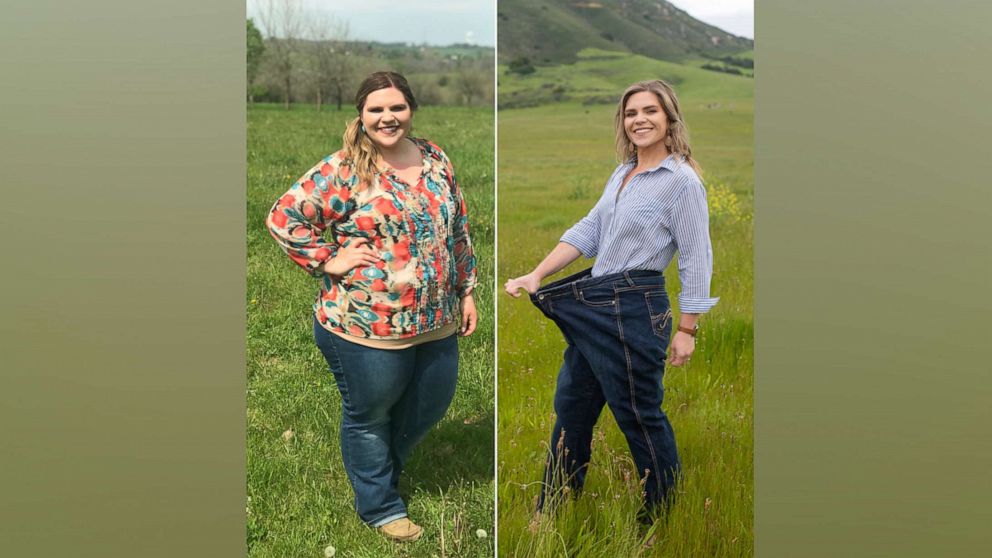
All her life, 27-year-old Kiah Twisselman believed she just had "bad genetics," which prevented her from losing weight. But two years ago, she proved that theory wrong and went from 285 to 163 pounds by eating healthy and exercising .
"I just started showing up and doing it," Twisselman wrote in an Instagram post. "That's it."
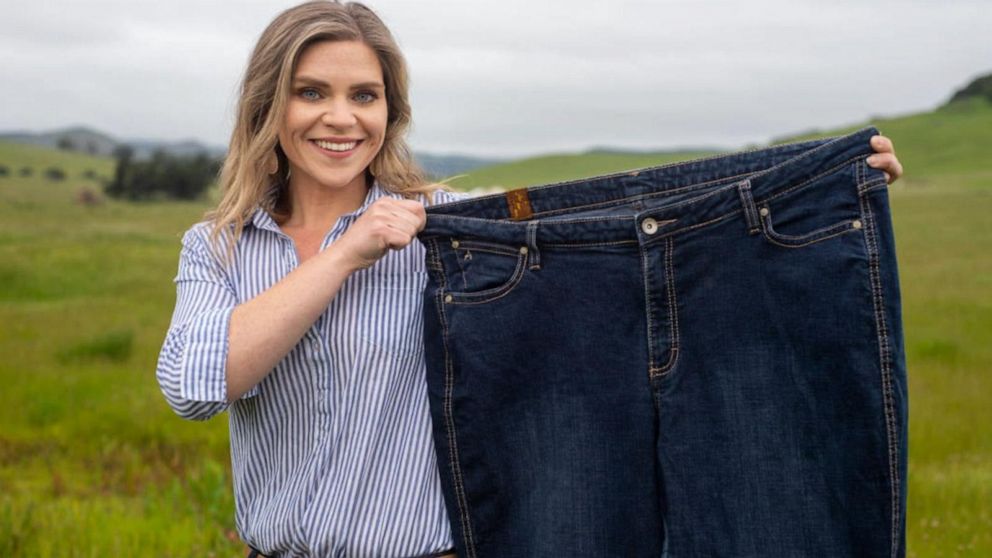
In the new issue of People Magazine out this week, Twisselman's incredible weight loss journey -- along with that of several others -- is highlighted.
The publication's transformation feature spotlights people who drastically changed their lives.
"I lost 100 pounds in less than a year," Twisselman told People. "It’s been so challenging, so rewarding, and I wouldn’t trade this last year for the world."
"She lost 120 pounds by making really small changes to her life that really anybody can imitate," said Charlotte Triggs, the deputy editor of People.
Related Articles
MORE: 5 tips from a woman who lost more than 200 pounds
In the beginning of her weight loss journey, Twisselman shared that she wanted to be healthier, so she turned to author and fitness expert, Rachel Hollis, and her five tips to thrive .
On her Instagram page, Twisselman detailed how she adapted Hollis's five daily habits like waking up one hour earlier, writing down 10 things that she's grateful for, giving up food that doesn't "bless her body" and drinking more water.
"Improving your life isn't about making some scary, drastic change overnight," she wrote on Instagram. "It's about meeting yourself where you're at and making small changes over time that you can actually stick with. Start small, stay consistent."
Editor’s Picks

Miranda Lambert reflects on past year, her weight loss journey

Rebel Wilson reveals goal weight while undergoing 'Year of Health' mission
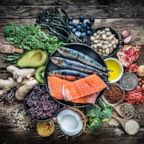
5 foods that may help you stay positive and get a 'mood boost'
By adapting Hollis's lifestyle changes Twisselman was able to shed the extra weight for good.
"She started working out 30 minutes a day," said Triggs. "She started drinking a lot more liquids which she hadn't been doing before, and keeping a diary so that she could start to feel when she was really hungry."
MORE: Man credits job as Instacart shopper with helping him lose nearly 300 pounds
Now, Twisselman is helping others as a weight loss coach and will soon launch her first ever digital course on her website to teach others how to shed pounds. She also shares motivational videos for her Instagram followers to help inspire them to make small, healthy changes in their lives.
Although quarantine has changed the routines for many, Twisselman says her life hasn't looked too different, and she's still making exercise and hydration her top priorities. She also makes the choice to stick to her lifestyle changes every day to reach her goals.
"If I can do it, you can ABSOLUTELY do it too," Twisselman wrote in an Instagram post. "Stop playing small, dream bigger for yourself and keep showing up."
Up Next in Wellness—
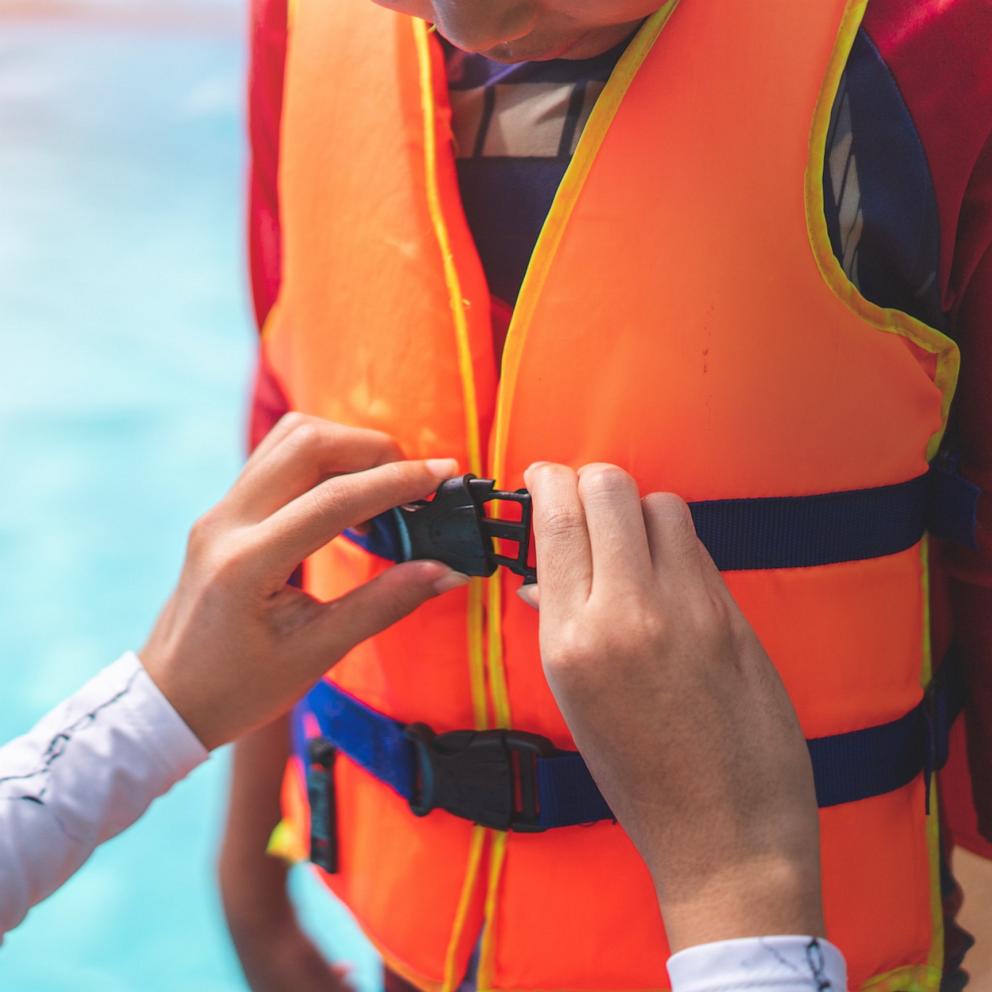
Pediatrician shares water safety mistakes to avoid amid rise in drownings
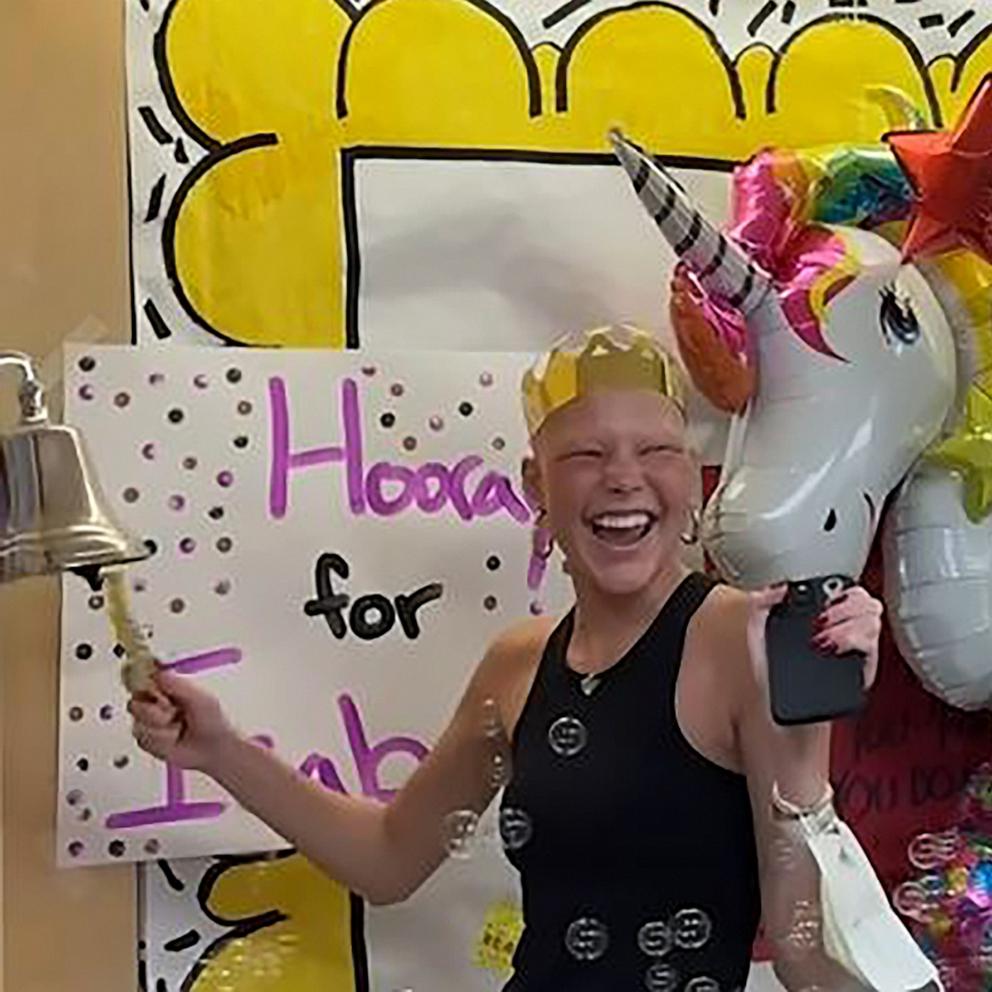
After 4 rounds of chemotherapy, Isabella Strahan rings the bell
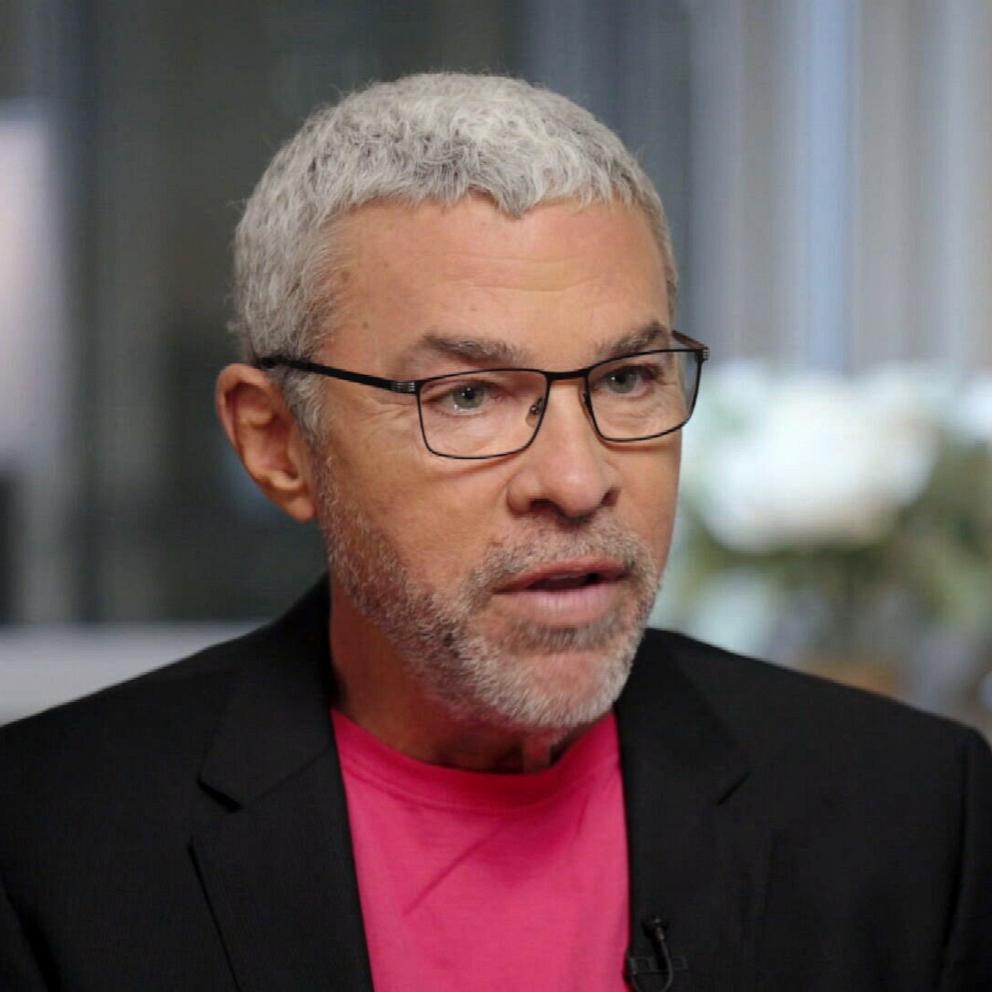
Soap star opens up about fighting 2 types of cancer

High blood pressure during pregnancy has doubled, but only 60% are treated, study finds
Shop editors picks, sponsored content by taboola.
- Privacy Policy —
- Your US State Privacy Rights —
- Children's Online Privacy Policy —
- Interest-Based Ads —
- Terms of Use —
- Do Not Sell My Info —
- Contact Us —
© 2024 ABC News

Currently Trending:
How To Use Metabolic Resistance Training To Transform Your Physique
6-week fat loss plan, what is the nfl academy we spent a day at the school of hard knocks, the 24 things you need to do to lose belly fat, dumbbell abs workout for a rock-solid core, best lower back exercises.
Advertisement
When you purchase through links on our site, we may earn an affiliate commission.
Home » Health & Nutrition » Weight Loss Transformation: How I Lost 10st In 1 Year
Weight Loss Transformation: How I Lost 10st In 1 Year
At the start of 2020, Men’s Fitness contributor Jacob Newbury decided to turn his life around. Here, he tells us all about his incredible weight loss transformation story and how he lost 10st in 1 year.
From regularly walking and training with the best dumbbells to ditching junk food and committing to intermittent fasting, my weight loss transformation consisted of changing my diet, exercise habits, and mindset.
At the back end of 2019, I stepped on the scales and was confronted with a stark figure: 21st 6lbs – the same as a baby elephant.
I decided enough was enough. I opened up my mini notebook and set targets for the next five years. My life was in a rut: barely employed, hardly happy and scarcely motivated. All my struggles had a single denominator: my health and wellbeing.
Six years ago, I was a gym nut. I lived a healthy lifestyle and plugged away at making improvements. I was more than content with my physical condition.
But the following half-dozen years were disastrous, physically and mentally.
I was diagnosed with a ‘severe social anxiety disorder’ and spent each year losing and gaining weight for special events. It was the epitome of a yo-yo diet. It needed to change.
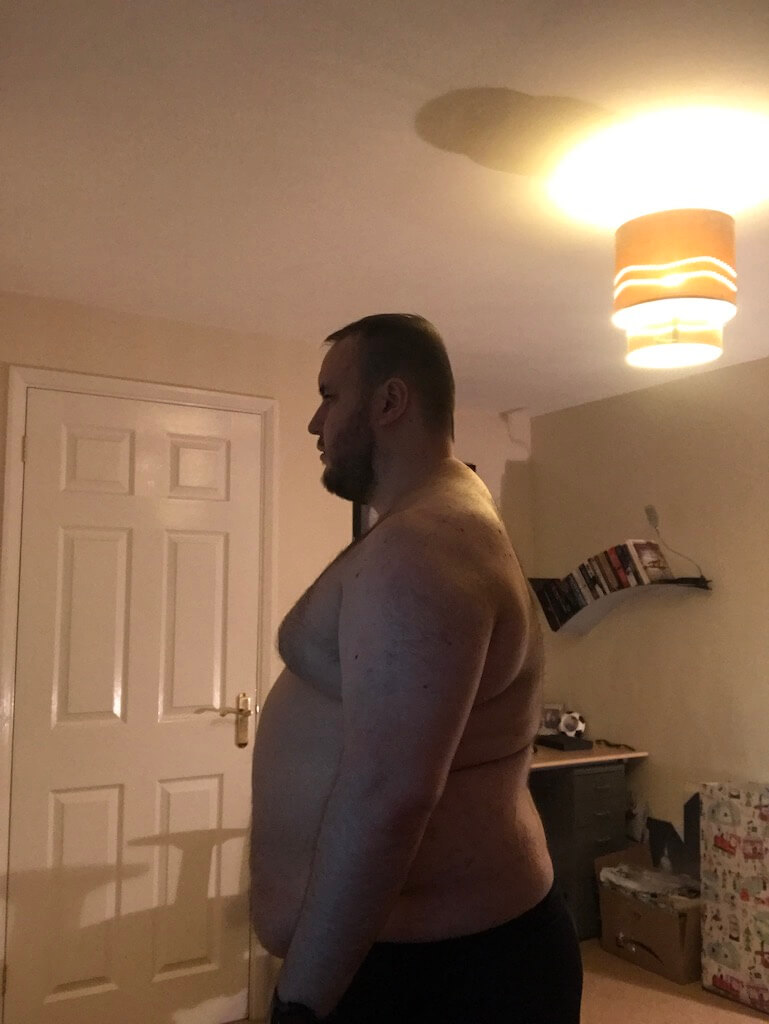
Jacob was over 21st at his heaviest
My weight loss transformation journey
A philosophical shift convinced me to make 2020 count. So, before the world figuratively flipped on its axis, I developed a substantial spreadsheet to track every factor of what I aptly named ‘Project 2020’.
It monitored my weight, measurements, pictures, progress, diet, cardio, weights programme and more. It was pretty hefty.
And so, in the following 12 months, I went from 300lbs to 163lbs. I dropped from a size XXL to M in clothes. My waist decreased by 14 inches, down from 46in to 32in.
This is how I did underwent my weight loss transformation…
Transforming my diet
To give you an idea of my diet in 2019, let me tell you a story.
My brother came to visit me and we decided to head to the cinema. As I opened my boot to put my brother’s bag in the back, we were greeted by a dozen Dominos boxes. He was confused. I explained it was because I had already filled the recycling to the brim with, you guessed it, more Dominos boxes.
I would regularly consume two large pizzas, wedges and garlic bread for dinner, washed down with a 2L bottle of Pepsi – maybe four times a week. The remaining three days weren’t exactly a salad and water, either.
The solution was simple: I needed to cut my calories to achieve a caloric deficit.
My weight loss nutrition plan:
- Ditch junk food and processed sugars
- Lower daily calories to create calorie deficit
- Eat within 8-hour window (intermittent fasting)
- Include wholegrains and fibrous foods
- High volume of water intake
I adopted quite an extreme intermittent-fasting programme. My daily calorie target was extremely low, which I know is not the healthy option, but I was determined to shed weight fast.
The food plan would consist of some vegetarian sausages and roasted vegetables for lunch, a protein shake and an orange for a snack, and some more sausages and fruit for dinner. It is safe to say I’m a habitual person, and this definitely worked to my advantage.
As the year progressed, and my weight dropped, I would slowly add an extra couple of hundred calories.
When I upped my calories, I would still only eat clean foods. No processed sugars, always wholegrains and plenty of fibrous foods. My protein levels would always stay fairly high, but as the year went on, I would increase my carbohydrates and fat intake to a reasonable level.
So I added things like oats, brown rice, wholewheat pasta, rice cakes and peanut butter, and increased my eating window to around eight hours, applying the standard 16-hour fast period.
One of the most important things I implemented was a high volume of water intake. I’d aim for at least seven to eight litres a day. Extreme, yes. But also incredibly necessary.
I can’t stress enough the importance of a high water intake. Remember, your brain struggles to distinguish a difference between hunger and thirst.
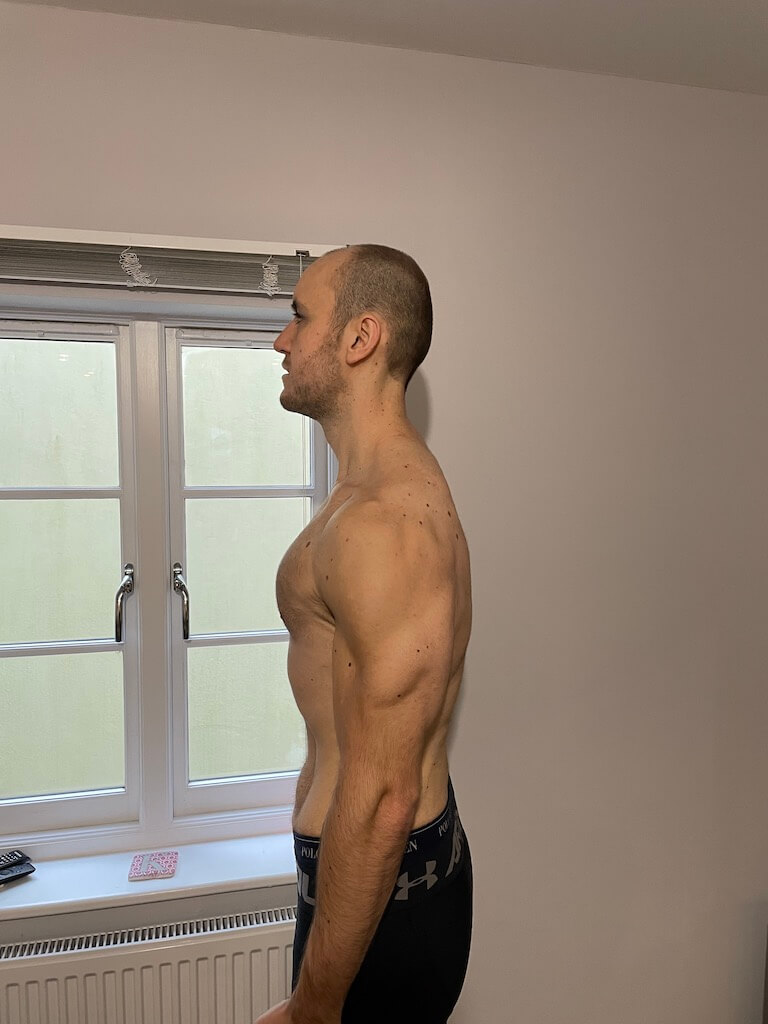
A strict diet plan and sustained exercise routine helped him shed an incredible 10st
Adopting a new exercise regime
Despite my condition in January, I considered myself a knowledgeable person on bodybuilding. I was my own oxymoron. Nonetheless, this factor ensured I could develop a programme that could be stuck to throughout the year.
For cardio, I would simply walk for around two hours a day. I also did some work on the punch bag and a bit of cycling before a weight session, but my cardiovascular training mainly consisted of walking.
It’s easy on the knees, great for a sustained heart rate in the ‘fat loss’ zone, and it’s a free form of therapy.
I rarely ran. I began the year thinking I’d be a 10k king by the end of 2020. But I can count the amount of runs I’ve done on my two hands. I found walking much better for my goals, my stress levels and motivation.
My 10-stone weight loss exercise regime:
- Walk for 2 hours a day
- Lift weights 6 days a week
Six days a week I would lift weights. Throughout the year I worked on a push/pull/legs split and did not change it up once. The only wall I hit along the way was a rotator cuff injury in June, but after some positive rehab and perseverance, it was sorted fairly quickly.
As the year progressed, I decreased my walking time down to 90 minutes, then to an hour, before finishing on around 40 minutes.
As my muscle mass increased, the quicker I burned fat, so cardio was no longer needed at such high levels. This is another reason why lifting weights should always be in your programme.
Why your mindset is crucial for weight loss
Exercise and nutrition counts for little, if you don’t have the correct mindset.
The goal has to be iron-clad, and if you want to shift a significant amount of weight like me you are going to have to make sacrifices.
My motivation came from wanting to live the life I envisioned for myself.
I want to explore the world, be happy with friends and not be afraid to go out my front door.
Now, I have never felt better or more confident. Life is easier than ever, and incredibly positive things have happened because of the change I made.
Helping others with their own weight loss transformations
I want to help people. So, I have created a spreadsheet for people to use like the one I utilised this year. It is crucial to keep on top of your progress. Sometimes the scales do not tell the full picture, which is when measurements and pictures become instrumental in your motivation to keep going.
This is not the end of my journey, but the beginning of a more vibrant and healthier life.
Follow @jacobnewburyfitness for more information and advice on his weight loss transformation.
Related content:
- Will Smith’s weight loss journey: what we learned
- Body transformation: I lost 7kg in 12 weeks
- How to burn body fat with strength training

MF editor Isaac combines close to a decade’s experience in fitness publishing with a keen interest in all things exercise and sport. Although strength training is his primary passion, he's also an occasional ultramarathon runner, with one particular career high/lowlight being a 24-hour 'race' around Tooting Bec Athletics Track (never again).

You may also like...

17th June 2024
We Round Up The Best Iron Supplements
Feeling run down? Dietitian Laura Tilt reveals the best iron supplements to prevent fatigue, support muscle metabolism and promote normal immune function
by Laura Tilt

14th June 2024
We Round Up The Best Fiber Supplements For Digestive Health
Looking to improve your digestive health? These are the best fiber supplements available in the UK

We Round Up The Best Magnesium Supplements
Support your nervous system and reduce fatigue with the best magnesium supplements for 2023
- Search Please fill out this field.
- Manage Your Subscription
- Give a Gift Subscription
- Newsletters
- Sweepstakes
Get Inspired by These Incredible Weight-Loss Transformations
These men and women transformed their bodies through healthy eating and a dedication to fitness
Lexlee Hudson: Lost 187 Lbs.
Courtesy Lexlee Hudson; Nicole Mlakar
College was a major adjustment for Lexlee Hudson . Along with gaining more independence, she was also "stressed, working multiple jobs, and I didn't know what I should be eating." That meant she was grabbing what was easy and convenient on a college budget — a ton of pizza and any food she could get during breaks from her waitressing job. And within about a year, she had gained 180 lbs.
"I started having a lot of health issues," she told PEOPLE. "My back was hurting all the time. I had PCOS and I was on the spectrum for pre-diabetes and high blood pressure. I love to ride horses — I have my entire life — and I couldn't anymore. I became super insecure and withdrawn, and I stopped going out with my friends."
Meanwhile, her mom and grandma were both following the weight loss program Optavia and had dropped 80 and 75 lbs., respectively. They had tried getting her on board for years, and in January 2018, after Hudson finished college, she finally agreed to join the program. Hudson started setting alarms for every 2½-3 hours to remind herself to eat healthy snacks, and swapped out the pizza for ones with cauliflower crust or made Taco Tuesdays with lettuce wraps instead of tortillas.
Over the next two and a half years, Hudson consistently lost weight, eventually dropping 187 lbs. She's now a health coach, and helps people "get healthy."
"I tell people that before I felt like I had a mental cloud over my head. I didn't always put me first," she said. "My whole life has changed."
Linda Migliaccio: Lost 189 Lbs.
Courtesy Linda Migliaccio; Courtesy Grace Huang
Ever since high school, Linda Migliaccio felt like she was "battling" her weight. She started dieting at age 15, and for years afterward, the New Jerseyan, who has since been diagnosed with a binge eating disorder, would yo-yo back and forth — Migliaccio estimates she's lost and gained a significant amount of weight at least 12 times.
Her highest weight of 349 lbs., though, came at "the lowest point in my life, when my mom passed away," she told PEOPLE. While caring for her mom, Migliaccio gained 200 lbs., and after a fall in her bathroom, she tore her ACL and meniscus in her right knee. A surgeon said she was too heavy for him to repair the injury, and predicted that she would become a wheelchair-user in a year if she didn't lose weight.
"He did me the biggest favor of my life being blunt like that," she said. "It was what I needed to hear, and that's what turned me around."
Migliaccio started a nutritarian diet, which emphasizes fruits, vegetables, grains and nuts, and didn't cut out any foods, allowing herself to have a cheesesteak or ice cream when the craving struck. That 80/20 split of healthy and more indulgent foods helped her stay on track, along with her friends and her TOPS (Take Off Pounds Sensibly) weight loss support group. In two years, Migliaccio lost 189 lbs., and didn't even need knee surgery.
"I'm finally starting to tap into what makes me happy," she said.
Ann Wulff: Lost 207 Lbs.
Courtesy Ann Wulff; Kelsey Lee
Ann Wulff felt like pregnancy was "permission to just eat whatever I wanted," the teacher told PEOPLE. Through three pregnancies, she gained more than 100 lbs. and kept going from there, eventually hitting 360 lbs.
"I convinced myself that it didn't matter if I ate unhealthily because I was already overweight," she said. "I was busy with a full-time job and three little girls, so did it really matter if I eat the ice cream?"
But Wulff started to notice little issues; she lacked the energy to walk the five minutes to the park with her daughters, she had to twist into odd positions just to get the car seatbelt to buckle and she was struggling with constant headaches.
"I was in my mid-30s, and I realized that very quickly that there were going to be things that I absolutely could not do."
Wulff joined WeightWatchers , paying for a full year upfront, and focused on losing just 5 lbs. at a time to stay motivated. With healthy dinner swaps and walks around her neighborhood, she lost 207 lbs. in just over two years.
"I feel so much lighter, and I don't mean physically," she said. "I just have so much more energy, I'm more positive, I'm more likely to put myself out there. I'm a better teacher, a better wife, a better mother. A better everything."
Crystal Benes: Lost 201 Lbs.
Crystal Benes
Crystal Benes spent most of her life overweight. She was affected by obesity as a child, and by the time she was 25, Benes weighed in at 376 lbs.
"Every choice I made regarding what I fueled my body with and how much exercised I did was all up to me," she told PEOPLE. "I had no one else to blame for my poor decisions that led me to being nearly 400 lbs."
But that changed on April 2, 2018, when Benes decided to sign up for a local weight loss program in Fort Wayne, Ind. Over 15 weeks, she dropped 100 lbs. thanks to a personal trainer , nutrition coaching and regular boot camp classes. But the hardest part, she shared, is when that ended and she had to do it on her own.
"I had to understand that this was no longer a diet, and that it had to become my lifestyle," she said.
Benes kept up her daily workouts and nutrition plan, and by January, just 10 months later, she was down to 175 lbs.
"My weight-loss journey came at a point in my life where my weight was something I faced every day and led me to a constant state of depression," she said. "Through the struggle I encountered during my journey, I came to realize that the most difficult road had led to the most beautiful journey of my life."
Marsha Parker: Lost 155 Lbs.
As the single mother of a newborn, Marsha Parker faced a lot of pressure — and it took a toll on her health. The Bronx, N.Y.-based Parker had to accept a lower-paying job with flexible hours so she could take care of her daughter, Kumari, and any money she made went to feeding Kumari healthy meals while she ate $1.25 fried chicken.
"I was stressed and I think I was going through a bit of postpartum depression without realizing it," she told PEOPLE. "Kumari would be asleep and I would be crying, eating chocolate pudding and drinking Pepsi. I would buy foods that I knew were bad, but they gave me comfort at the time."
Her weight continued to climb. By the time Kumari turned five, Marsha was up to 290 lbs., had developed high blood pressure and was pre-diabetic. It was Kumari who pushed her mom to lose weight.
"I would have headaches from the food and she would say, 'I need you to be healthy, I'm really, really worried about you. Please eat healthy.' I realized that my health was connected to her wellbeing."
Parker started taking kickboxing classes and switched to a healthier diet, drinking green smoothies with Kumari and prioritizing lean proteins like fish, chicken and eggs. That, along with a newfound love of weightlifting, helped Parker lose 155 lbs. She balanced five-days-a-week workouts with her job as an online teacher, Ph.D. classes and homeschooling Kumari.
"Kumari saved my life," Parker said.
Lindy Cellucci: Lost 150 Lbs.
After eight years of weighing nearly 300 lbs., Lindy Cellucci reached her breaking point during a vacation with friends in 2014.
"There's this place called Hopewell Rocks that goes down to the ocean floor, but you have to go down about 500 steps. I stood there and knew I couldn't do it," she told PEOPLE. "I could see them laughing and talking, and I'm up top and I said two words to myself: 'It's time.'"
The mother of two began researching healthy recipes and tracking her steps with a Fitbit and lost 82 lbs. in 16 months. That's when Cellucci noticed a suspicious lump on her chest. She was quickly diagnosed with breast cancer and had to undergo rigorous chemotherapy treatment.
But Cellucci was determined to maintain a healthier lifestyle. When she got the all-clear in 2017 from her doctor, she started walking again and took Zumba, boot camp or aqua swim classes. The weight kept coming off.
"I lost weight every week for a full year," she said. "I was just determined. If I put a bit on, which happened a couple of times after that first year, I didn't let it derail me. You're going to have ups and downs."
Cellucci hit 150 lbs. when she was 60 and credited her life to losing weight.
"I never would have found that lump if I hadn't lost weight," she said. "It saved my life twice. It saved me from having a heart attack, and it saved me because I found that lump."
Kimberly Brown: Lost 109 Lbs.
Courtesy Kimberly Brown; Nutrisystem
When Kimberly Brown decided to make a change and lose weight in 2015, she was coming off of a tough year. She had recently suffered a miscarriage, her childhood pet had just died and a broken ankle left her unable to walk on her own for several months.
"It got the best of me," Brown told PEOPLE.
Plus, her health was suffering; Brown had high blood pressure and frequent migraines, and her doctor thought that losing some of her 239 lbs. would help. Brown decided to join Nutrisystem , dropping 10 lbs. the first week and around 2.5 lbs. every week after. Four years later, she was healthier and 109 lbs. lighter.
"I currently weigh 130, I no longer have to take any medication for my blood pressure and I impress my doctor with my cholesterol and other levels every year on my physical!" she said at the time. "I now have confidence in myself, courage to do anything, and pride in how far I have come!"
Jennifer Riveira: Lost 76 Lbs.
Courtesy Jennifer Riveira; Isagenix
Jennifer Riveira was always tired and had trouble keeping up with her young son. When her doctor told her all of her tests came back normal, but her fast-food habit may be to blame, she realized it was time to make a change.
"In reality, I had just given up on myself," she told PEOPLE. "Everybody became more important than I did and fast-food became my way of life. It was fast. It was easy."
Riveira cut out greasy food and substituted in meal replacement shakes. She also got active, exercising regularly and keeping up with her teenage son.
"The challenge itself is to feel better about yourself, to be the best version of you, whoever you are," Riveira said.
Kristen McLaughlin: Lost 133 Lbs.
When Kristen McLaughlin "became sedentary" in college, the weight piled on , and it only got worse when she started dating a "larger guy." They would order in for almost every meal — pizzas, burrito bowls, cheeseburgers and fries — and rarely cook, which put McLaughlin at 270 lbs. She joined Jenny Craig in 2016 to lose weight, and managed to drop 60 lbs., but felt guilty that her MBA candidate-boyfriend had to fend for himself, and the weight went right back on.
Then in late 2017, five years into their relationship, McLaughlin's boyfriend became "distant," and said he had feelings for someone else.
"At that point I'm like, 'This is cheating, this is dumb, I can't do this anymore,' and I said I was leaving," she told PEOPLE.
McLaughlin broke up with him, moved out of their apartment and started a new job. It was overwhelming, but the clean slate she needed to lose weight for good. "I literally got rid of every excuse that I've ever had," she said.
McLaughlin joined Jenny Craig again in February 2017, and over the next two years lost 133 lbs. — nearly half her size — with the pre-made meals and a newfound love for group fitness classes and weight training. She now cooks for herself and maintains her weight loss.
"I think I'm more myself now, funnily enough, than I ever was the previous 30 years," she said. "I say yes to things now, I'm more outgoing, I'm more likely to be social."
Mary Jane O'Toole: Lost 135 Lbs.
Mary Jane O'Toole
When Mary Jane O'Toole got engaged in 2016, she was thrilled to marry her longtime boyfriend, but their relationship hadn't been good for her health . After six years of fast-food dinners and minimal exercise, she weighed 281 lbs. and was having knee problems — at 25 years old.
Plus, O'Toole was dreading buying a wedding dress at her size.
"I didn't want to buy a plus-size wedding dress, because they cost way more than straight sizes," she told PEOPLE. "I felt like I was paying this fat tax — I didn't have the ability to buy affordable clothes because I was bigger."
Along with her fiancé, O'Toole started tracking her meals and calories with the LoseIt! app. She dropped 75 lbs. in a year, and started incorporating exercise into her routine. By her wedding day in November 2018, O'Toole had lost 135 lbs. and was able to buy the dress of her dreams in a size 6.
"The ideal dress that I had in my head was cleavage-baring with a dramatic accent, and then I went with a long-sleeved dress that went up to my neck with a bare back. I had never pictured something fitted, but I felt awesome in it because I had done it and lost the weight," she said.
O'Toole kept up her weight loss habits, and although she was frustrated with the loose skin she had accumulated, she tried to focus on the "non-scale victories."
"The biggest one is being able to shop out of my friends' closets — I had never been able to do that before," she said. "It's so cool, it's like I have double the closets, and what I had always dreamt about doing in high school!"
Randi Vasquez: Lost 80 Lbs.
Randi Vasquez/Instagram
Randi Vasquez was a "chubby" kid growing up, but it never bothered her. "I was always feeling myself," she told PEOPLE. That is until she hit a "post-grad slump" when she couldn't find a job she loved and started drowning her sorrows in boozy brunches and fast food.
"I was getting heavier and heavier," Vasquez, who eventually hit 240 lbs., said. "I started to notice that my confidence was going down, and I wasn't motivated to do anything. It started to click that if I didn't change my life that it would just get worse and worse."
Vasquez knew that a major diet and lifestyle overhaul wouldn't stick, so she started small, and in the fall of 2014 found a gym class at her local YMCA that she loved. Within a few months, she dropped 18 to 20 lbs., which inspired her to keep going. From there, Vasquez began cooking healthier meals and started doing Kayla Itsines' popular BBG workout plan.
"Year after year, month after month, I made small little goals and just kept going," she said. "I hit 80 lbs. down in fall 2017. That was such a big moment for me."
Since then, Vasquez nailed another big goal — running a half marathon — and remained focused on maintaining her weight.
"I don't feel like my weight can hold me back anymore," she said. "I was happy before but there was so much I was held back from that I didn't even realize."
Tara McGinty: Lost 122 Lbs.
Tara McGinty would never forget the first time she was bullied about her weight. She was in 8th grade when a ketchup dispenser exploded on her clothes and she had to change into her friend's too-tight shirt.
"I never ate at school or in front of people again," McGinty told PEOPLE.
Instead, she would withhold food from herself until 4 p.m. and then go home and eat "anything and everything" in sight until bedtime. McGinty's weight kept crawling up, eventually reaching 260 lbs.
It wasn't until she was later diagnosed with rheumatoid arthritis, and in so much pain she was unable to hug her children, that she decided to change her lifestyle. She started using Isagenix dietary supplements, going to high-intensity interval training workouts and adopting a "clean-eating" diet to reduce inflammation. McGinty dropped to 138 lbs., resulting in her arthritis pain being "under control."
"Snuggling and cuddling with [my kids] was so painful," she said. "Nowadays I get all the hugs I can and they can even wrap their little hands all the way around my body."
Alan Christiansen: Lost 317 Lbs.
At 538.8 lbs., Alan Christiansen knew his relationship with food was unhealthy. His typical lunchtime meal involved stopping at three fast-food restaurants to satisfy his cravings, totaling over 6,000 calories, and he struggled with everyday tasks.
"I couldn't stand up in a shower for 10 minutes," he told PEOPLE. "Even doing dishes and cooking required a chair."
Still, it was coming home to his 3-and-5-year-old daughters that pushed Christiansen to lose weight. He committed himself to diet and exercise and signed up for Optavia, a coach-based wellness program. In just 18 months, he slimmed down to 221 lbs.
"I'm a better man, spouse, dad, employee, son, brother and friend to everyone around me," he said. "I truly feel free from my chains that bound me for so many years — free to live the best life and take advantage of what life has to offer."
Shamirum Benjamin: Lost 151 Lbs.
At 9 years old, Shamirum Benjamin started sneaking pieces of pound cake from the fridge. The urge to hide her food continued through to her adult life when she would often order entire meals from two fast-food restaurants at a time and eat them in her car.
"I hid my worst eating habits — overeating or binging to the point of being in pain — so I couldn't be embarrassed about how I ate in front of others. But that doesn't mean I didn't feel shame," Benjamin told PEOPLE.
In February 2011, near her 29th birthday, the customer success manager for a software company hit her highest weight ever, and decided to sign up for WeightWatchers.
"I changed my mindset," Benjamin said. Along with ditching her fast-food meals and eating more fruits and vegetables, she also began walking and doing daily light exercise. Four years later, she had slimmed down from 291 lbs. to 140 lbs.
She continued to maintain her weight one day at a time and focused on eating foods low on WeightWatcher's point system or limiting portion sizes.
"I just seem to feel more alive in general," Benjamin said. "I get to be free and myself in a way I never thought I could when I was heavier."
Janine Johnston: Lost 145 Lbs.
When Janine Johnston tried on the wedding dress she had ordered online, she knew she had to make a change.
"I wanted to cry because of how I looked," she told PEOPLE. "What was supposed to be a memorable, happy moment was depressing and embarrassing."
So in June 2016, weighing in at 299 lbs., Johnston set a goal to lose 100 lbs. by her wedding a year later. She started by making healthier meals and set a daily step goal on her Fitbit.
Once the pounds started to fall off, the health services worker joined a local kickboxing gym and supplemented her walking with high-intensity cardio classes.
Five days before her wedding, Johnston met her goal. But she didn't stop there: After her wedding, she continued working out and dieting to slim down to 154 lbs.
"I'm a much happier person now," Johnston said at the time. "Buying clothes is fun, cooking is fun, and my health is at the best it's ever been."
Jenna Leveille: Lost 140 Lbs.
Although she had a major sweet tooth as a kid, Jenna Leveille always considered herself to be fit and athletic. But after she became pregnant with her daughter in 2000, the global sales director at SpaFinder continued to put on weight.
"I started trying quick fixes and that's when the vicious crash diets really started," Leveille told PEOPLE. "A few of them worked but just for a minute. I would lose 20 lbs. and gain back double."
When her weight hit 270 lbs., Leveille considered getting weight loss surgery, but first wanted to try her hand at losing it naturally. She adopted a high protein, low carb diet and began exercising. "I ditched the sugar and put on my sneakers," she said.
She reached her goal weight of 130 lbs. in 2014, and created a Facebook community called " Getting Closer Everyday ," meant to inspire people's weight loss journeys and provide support.
"The change for me has been more than I could ever dream of in this lifetime," she said. "It's never too late to change your life no matter how long you've been stuck."
Nicole Ferrigno: Lost 204 Lbs.
Nicole Ferrigno grew up thinking "that chips were a normal side dish, that pasta was a thrice-weekly dinner staple, and that fresh bread was a must for both lunch and dinner."
But by the time she was able to make more autonomous food choices, she was a "habitual eater."
"I would consume one Big Mac, one McChicken and one large order of French fries [for lunch]," she told PEOPLE, adding that she would sometimes add another medium order of fries.
At her heaviest, Ferrigno weighed 350 pounds, and when she was unpacking after moving back to her hometown, she saw an ad for Beachbody's "21 Day Fix," a program that combines portion-controlled eating with 30 minutes of exercise per day.
Ferrigno decided to try it out, and slowly but surely she slimmed down. By December 2017, she had reached her goal weight of 146 pounds. Although she primarily sticks to a diet of vegetables and small portions of carbs, "nothing is off-limits," allowing herself to splurge on bites of desserts or small bags of chips.
"I try dresses on and cannot believe that it is me," she said. "I am so happy with my decision to take care of myself."
Holly Wallis: Lost 162 Lbs.
As a kid, Holly Wallis says she was always "chubby," but it wasn't until high school that she became an "emotional eater." At home, "the rule was if you put food on your plate you had to finish it before asking to be excused from the table," she told PEOPLE.
"For more than half of my life I've been considered obese," Wallis added.
When she was 48 years old, Wallis went in for her annual doctor's visit weighing 308 lbs. Her doctor wrote on the after-visit summary that she was "morbidly obese," and suggested options for how she could slim down. "It made me feel like he really cared about my health and wanted me to be healthy," she said.
That day, she set a goal to lose half her weight by her 50th birthday.
She began a high-fat, moderate protein, low-carb keto diet and tracked her goals, eating habits and exercise in an app called " Lose It! " Wallis also opted to bike to work instead of driving and did an additional 30 minutes of exercise each day. After dropping to 146 lbs., Wallis was able to bike 29 miles and ran her first half marathon. "I feel empowered," she said. "I could have given up, but I persevered."
Scott Leopold: Lost 193 Lbs.
Scott Leopold attempted his first diet at 19 when he weighed 438 lbs. He was in college and often drank alcohol and finished the night off with foods such as chicken wings or sweets and chips. "I wouldn't think twice about eating two whole pizzas," he told PEOPLE. After he lost his first 100 lbs., he and his friends "celebrated" at a buffet.
"I ate at least eight plates full of fried shrimp, crab legs, and hush puppies," he said. "It seemed reasonable at the time."
Leopold gradually put the weight back on and reached 363 lbs. He always considered dieting again, but it wasn't until 2015 that he decided to make a lifestyle change since he couldn't catch up with his toddler. "I tried to run after her but couldn't get above a moderate walk," Leopold said. "All I could do was watch her."
He knew he wanted to be more active in his kids' lives, so he discovered Real Appeal , a digital weight loss program that provides you with coaches and support groups and helps set daily goals for diet and exercise. Leopold stuck to a strict 800-900 calorie diet, (and gradually increased it to 1,300) and went running or walking every day.
After dropping down to 170 lbs., Leopold was able to run 5Ks with his daughters and go on hikes. "I'm happier, healthier, more energetic and far more active," he said. "I can keep up with my girls and be there for them in a way I never could before."
Kara Cline: Lost 95 Lbs.
When Kara Cline started experiencing panic attacks after having her second child, she knew she needed to make a major life change to be healthier for her family.
Cline told PEOPLE she worked out vigorously in high school, but when she went away to college, her routine changed.
"I became complacent and the weight just kept piling on," the certified public accountant said. "I didn't really work out, didn't go for walks and I just hung out with my friends and ate a lot of food I shouldn't have eaten."
In September 2016, after spending a few months reforming her diet, Cline discovered Daily Burn, a health and fitness app that provides workout videos and nutritional guidance.
"They've got a bunch of different programs you can choose, but then they also have the Daily 365 workout," Cline explained at the time. "It's a 30-minute streaming workout that changes every single day. I really liked that it kept me intrigued and I didn't get bored."
Cline said she did the workouts at home in her living room three to four times a week while her young kids were nearby.
"Since they were quick workouts, I fit them in whenever I had time with little ones running around," she said. "I focused on interval training as well as cardio and body-weight exercises. The trainers always offered modifications, so it felt more personable."
After losing nearly 100 lbs., Cline was proud of her 185-lb. figure.
"That time was an emotional roller coaster. I moved to a new city. I kind of completely redid my whole entire life, but all for the better. I feel great and am no longer ashamed by my weight," she said. "It really boosted my confidence and my comfort level to just try everything and live a more active, healthy lifestyle."
Dr. Kevin Gendreau: Lost 125 Lbs.
Dr. Kevin Gendreau's motivation for losing weight was rooted in tragedy.
"When my sister was diagnosed with an aggressive, rare form of cancer, I decided to change my life," Dr. Gendreau, who had reached 300 lbs. by consuming "a diet full of bread, pasta and chips," told PEOPLE. "For me, being obese was a choice. How could I literally eat myself to death while my poor sister was fighting for her life?"
The primary care physician started on a high-fat, low-carb diet and tracked his progress through MyFitnessPal.
"As my sister's condition worsened, I became more motivated than ever to eat healthfully because I knew my niece [Sophia] and nephew [Henry] would need me to be at my best," said Dr. Gendreau. Sadly, his sister died in June 2017.
On his new whole food diet, he saw "astonishing" results by eliminating processed carbs and sticking to fruits, vegetables, nuts, chicken, turkey, fish, eggs, non-fat Greek yogurt, olive oil, balsamic vinegar and non-caloric spices and seasoning.
After his weight hit a plateau, Dr. Gendreau turned to intermittent fasting, which helped him shed the last 50 lbs. of the 125 lbs. he lost. He started eating from only 12 p.m. to 8 p.m. every day. Outside of that window, he would allow himself black tea, black coffee and water.
He even began recommending his routine to patients. "Intermittent fasting has been life-changing for many of my pre-diabetic and diabetic patients," Dr. Gendreau said. But he cautioned, "Intermittent fasting is safe for most people, but not everyone. You should definitely talk to your own doctor before starting any diet or exercise plan."
Brianna Bernard: Lost 107 Lbs.
Courtesy Brianna Bernard; Ari Michelson
When Brianna Bernard got pregnant, she "used it as an excuse" to indulge in comfort foods.
"In reality, you're only supposed to eat a couple hundred extra calories a day, but I was eating 1,000 extra," Bernard tols PEOPLE for the 2018 "How We Lost 100 Lbs." issue . "I assumed it would all fall off pretty easily after the baby was born."
But after giving birth to her son, Bernard continued her poor eating habits and "didn't take the time for self-care," she said.
Bernard eventually signed up with a personal trainer at the gym, Bodies by Burgoon , and started training two to three times a week in weight lifting, plyometrics, boxing and more. She also revamped her diet, ditching her processed, carb-heavy meals for lean proteins, healthy fats and vegetables.
A year later, she had dropped 100 lbs. and started powerlifting competitively. She even became a trainer at the gym that helped her lose weight.
"I feel like a completely different person, and I am in so many ways," she said. "Not just physically — that's obvious — but the way I feel in my mind. It's hard to even look back. It feels like a lifetime ago. Now I feel like there's nothing I can't do. If I can lose 100 lbs., I can do anything."
Rachel Saintfort: Lost 121 Lbs.
Rachel Saintfort
Rachel Saintfort had never let her weight be a source of stress.
"In high school, I hit 200 lbs., but I was blessed to be a confident person," the Lakeland, Florida native told PEOPLE for the 2018 "How We Lost 100 Lbs." issue.
However, she continued to gradually gain weight and reached her highest, 291 lbs., after the birth of her daughter in 2007.
Saintfort decided to try dieting, but nothing stuck. Then, in January 2017, she got a wake-up call. Her daughter, 10 years old at the time, said a classmate had called Saintfort "fat."
"She looked so sad, and she's trying to act like it wasn't a big deal. At that moment it hit me that she's suffering, and she's being picked on or laughed at because of my laziness or my unhealthy choices," Saintfort said. "That definitely inspired me to get it together, because I didn't want her to feel that way."
The case manager decided to cut out fast food and soda and started doing daily 3-mile walks around the lake in her town.
She also started documenting her weight-loss journey on her Instagram account, @Ms100Lbs , and set a goal to drop 100 lbs.
Less than 12 months later, she reached her goal. "I cried," she said. "It was an amazing feeling."
Gwilym Pugh: Lost 93 Lbs.
Courtesy Gwilym Pugh; Dvora/REX/Shutterstock
At 280 lbs., Gwilym Pugh was out of shape and living a sedentary life.
After a "five- to seven-year" weight-loss journey, which included a lot of "trial and error," Pugh lost 93 lbs. and found a new career.
As a top model and an ambassador for David Beckham 's grooming brand House 99, Pugh told PEOPLE he focuses on a diet of micronutrients and good fats, along with manageable exercise.
"Due to injuries, I've struggled with high-intensity work, but I've found low-intensity cardio pre-breakfast has been great," said Pugh, who started seeing an osteopath and a trainer while aiming for 20,000 steps per day.
As for life as an in-demand model and social media influencer : "This life is something I had never even thought to dream of," said the London-based Pugh. "Every aspect of my life has improved, from physical and mental health to personal and professional relationships."
Mariah Stolfi: Lost 84 Lbs.
A self-described "binge eater," Mariah Stolfi reached 150 lbs. by the 5th grade.
The Wisconsinite also struggled with health issues. In her early teens, she was diagnosed with polycystic ovarian syndrome (PCOS) and sleep apnea. "It is extremely difficult to lose weight and maintain weight loss with PCOS," said Stolfi, who hit her highest weight of 286 lbs. at age 18. "And the lack of good sleep caused me to be lethargic, which meant I didn't have the energy to work out."
In July 2017, Stolfi, who was 19 years old at the time, decided to undergo vertical sleeve gastrectomy surgery.
After losing 84 lbs. — with hopes to lose an additional 60–70 lbs. — she began sharing her journey on social media.
"Once I discovered the weight loss surgery Instagram community, I knew I had to be a part of it," said Stolfi, whose candid photos and videos have garnered her more than 20,000 followers on Instagram .
As for her best advice to those struggling with their weight: "This journey is 80 percent mental and 20 percent physical. If you don't fix your mindset you will not succeed on your weight loss journey."
Kathleen Golding: Lost 178 Lbs.
Kathleen Golding/Instagram
Growing up, Kathleen Golding had always been overweight. By 21, she had turned to food as a "coping mechanism" while wrestling with anxiety and depression.
"I was stuck in a constant cycle of daily binging," the New Bern, North Carolina resident, whose highest weight was 331 lbs., told PEOPLE. "I was eating fast food for every meal and enormous quantities each time."
She finally decided to make a change and turned to gastric bypass surgery, which she underwent in June 2016.
"For some reason, weight-loss surgery is seen as 'cheating' or being weak, but for me, I found strength in being able to say 'I can't do this on my own. I want to be healthy, but I need help,'" she said.
After the surgery, the weight began to "melt off," said Golding, who eventually dropped 178 lbs. by making healthy dietary changes and exercising.
Golding shared that she is finally at peace with her body. "I have some loose skin and it definitely has its imperfections, but I worked hard for this body," said Golding, who also documented her weight loss journey on Instagram . "I spent so much time hating it but I've realized that this is the only body I've got and I'm going to take care of it."
Bonnie Wiles: Lost 162 Lbs.
Courtesy Bonnie Wiles; Perry Hagopian
Growing up, Bonnie Wiles ate a lot of starchy foods, and by 18, she was over 200 lbs.
"I tried diets but kept gaining weight after getting married and having four children," Wiles told PEOPLE in the 2018 "Half Their Size" issue. "It wasn't until my first grandson was born in 2011 that I committed to get healthy."
The Fayetteville, Ark., resident joined TOPS, a weight loss support group, and started using MyFitnessPal.
"It tells me if I'm overeating and helps keep track of how much I walk — usually 50 miles a week," said Wiles.
After dropping to 148 lbs., Wiles shared that she is loving her new lifestyle.
"When I was heavy, I had to ask for a seatbelt extender on a plane. Now I can't wait to go with my family to Hawaii, where I can show off my favorite body part — my arms."

Jeremiah Peterson: Lost 92 Lbs.
Jeremiah Peterson/Instagram
After a family hiking excursion proved too taxing for his 290-lb. frame, Jeremiah Peterson decided to change his lifestyle.
"I remember being bent over heaving just trying to catch my breath," the Missoula, Mont., resident told PEOPLE. "When I looked up, I saw my wife and three kids [10, 8 and 7] easily hiking, talking and laughing with each other — without me. It was a hard-hitting moment."
He entered a transformation challenge for motivation. Then, switched over to a keto-based diet consisting of healthy fats, lean protein and green vegetables, started taking twice-daily hour-long hikes, and lifting weights.
Peterson ended up dropping 82 lbs. during the 150-day transformation contest, called the 1st Phorm Transphormation Challenge, and he won the $50,000 grand prize.
"I feel like I have drive and ambition like I have never had before in my life — and I'm almost 40!" he said at the time.
Robin Janes: Lost 280 Lbs.
Courtesy Robin Janes; Perry Hagopian
Robin Janes can't remember a time when she was ever small . "Not even in a baby picture," she told PEOPLE for the 2018 "Half Their Size" issue. "I was always overweight, and it continued through adulthood." By then, Janes couldn't fit on a normal scale. "I went to my friend's family business where they weigh huge industrial tubs," she recalled. "That's how I found out I was 450 lbs."
Her real turning point, though, was when she realized she could no longer fit in the desks at her college and had to put her education on hold.
Ready for a change, Janes started with Isagenix meal replacement shakes and taught herself to cook healthy meals. She also began working out slowly, with short walks and swims. When she became 280 lbs. lighter, Janes shared her love of playing volleyball and hitting the gym. She also started working on her degree again.
"I'm back in school. I can work anywhere. I'm not limited," Janes said. "I feel like before all the doors were closed for me. Now they're all open."
Melody Perdue: Lost 180 Lbs.
Melody Perdue
As a child, food was one of the few constants in Melody Perdue 's life.
"My mother wasn't able to raise me fully," Perdue told PEOPLE in the 2018 "Half Their Size" issue. "I always associated food with happiness. I thought, 'Food is not going to leave me.'"
With a diet of six to eight chocolate bars a day, fried chicken and macaroni and cheese, Perdue was 308 lbs. by age 29, was pre-diabetic, had sleep apnea and a mild form of polycystic ovary syndrome. But it wasn't until a life-threatening car accident in 2012 that she decided to make a change.
"I was on my sister's couch, and I sat there and I cried to God," she recalled. "I said, 'I'm sick and tired of feeling like this.'"
Perdue signed up for Optavia, a packaged meal plan, and learned how to eat balanced meals of protein and three servings of vegetables. That, along with 30-minute walks, helped her lose 180 lbs.
"Now I have so much energy," she said. "I was able to ride a bike for the first time at 33."
Megan Rachow: Lost 170 Lbs.
Megan Rachow remembers the exact day she decided it was time for a change.
"I had been living a life of obesity for a few years and was exhausted both physically and mentally," the physical therapist told PEOPLE. "I felt like I had gained so much weight that I would never get it back off. I still remember the day that the switch flipped for me — July 19, 2014 — and I decided I was done living like this."
The Medina, Ohio, resident says up until that point she was drinking five or more cans of soda a day, eating large quantities of food and stopping at the drive-thru daily.
"Exercise was out of the question as I could barely walk up the stairs to my apartment," she said.
Spurred into action, Rachow shared that she started small, first cutting out soda and only eating food she cooked at home.
"The weight starting coming off," she said. "I remember I lost 9 lbs. my first week. After I had lost 100 lbs., I started trying more adventurous exercises. I became fascinated by fitness and seeing what new things I could accomplish with my body. I do things that I never dreamed were possible like running races, lifting heavy weights and completing a sprint triathlon."
Mike Bauler: Lost 225 Lbs.
After Mike Bauler's father-in-law went on life support following a heart attack in 2010, the Madison, Wisc., resident said he knew he needed to change his own ways .
"At this time I was 28, had two young boys, Eli (2) and Carson (6 months)," he told PEOPLE. "I recall all of the family standing around crying and sad. This was the trigger for me as I knew if I didn't get my life together soon, I would be the next person in that hospital bed."
A few weeks after his father-in-law was admitted to the hospital, Bauler, who weighed 450 lbs. at his heaviest, signed up at a local gym. He first focused on exercising and eventually made changes to his diet, sticking to 1,500 calories a day and smaller portion sizes for one year.
After losing weight, Bauler began running every day and completed endurance competitions like Ironman and Ragnar.
"I lost most of my weight (200 lbs.) in about 18 months so I have had to stay busy to keep it off," he said. "I am extremely competitive and have an amazing network of friends and the From Fat to Finish Line (FFTFL) community. I like to join training groups and training clubs because of the friendships and accountability it creates. It would be easy for me to blow off a 10-mile run at 5:30 on a Friday morning, but I know I have two friends meeting me, who I would never let down."
Katia Powell: Lost 170 Lbs.
Katia Powell
After reaching her highest weight of 350 lbs. at 26 years old, Boston resident Katia Powell realized her own health didn't reflect her dreams of becoming a medical doctor.
Powell was overweight as a child, eating a diet full of processed foods and little water and vegetables. In college, Powell shared she dramatically gained more weight. "I walked into my apartment, stared at my reflection in the mirror and asked, 'Who is that?' It was a defining moment for me," Powell, who is now a holistic health practitioner and fitness trainer who founded the company Black Girls Nutrition , told PEOPLE.
She joined her local YMCA, gradually increasing her workouts until she was going 4 to 5 days a week for 60 to 90 minutes. She also changed her eating habits, replacing sugary sweets with fresh fruit and vegetables. Within the first six months she lost 100 lbs., and has since lost another 70 lbs.
Powell, who has kept the weight off for more than a decade, said she now loves cycling, dance and yoga, and "if I am unable to attend the gym, I run or take a walk outside, or workout at home and do a high-intensity interval training. My workout routine also includes meditation," she added.
Sara Cloutier: Lost 151 Lbs.
Courtesy Sara Cloutier; Perry Hagopian
Sara Cloutier always felt like an outsider growing up. She weighed 220 lbs. in high school, and never enjoyed shopping or playing sports with her friends.
"I cannot remember a time when I didn't feel like I was the biggest girl in the group, and I hated it," Cloutier told PEOPLE for the 2018 "Half Their Size" issue. "I was always the odd one out."
After her first pregnancy with her daughter in 2003, Cloutier hit 301 lbs. and was ready for a change. "I didn't want to die," she said. "I wanted to watch her grow up and give her healthy habits." By working out with a trainer and choosing healthier meals, she successfully lost 151 lbs. and maintained a healthy weight through her second pregnancy in 2008.
As she worked to get back into a postpartum fitness routine, Cloutier discovered Zumba and fell in love with group fitness classes. Three weeks after her first class, she became a certified trainer and started teaching classes. By 2013, the demand had gotten so large that she opened her own fitness studio and now runs it along with her full-time job.
At the time of her interview with PEOPLE, Cloutier was getting ready for another big change — her third child.
"I'd be lying if I said I wasn't concerned about gaining the weight back, because gaining weight is still scary, and having to purposely do it is scary," she said. "But knowing the difference between a healthy pregnancy and an unhealthy pregnancy is huge."
Katie Bolden: Lost 150 Lbs
Courtesy Katie Bolden; Perry Hagopian
Between her severe anxiety, depression and her weight — 280 lbs. at her heaviest — Katie Bolden felt "ruined," mentally .
"I hated everything about myself, and that's just a tough situation to be in," she told PEOPLE for the 2018 "Half Their Size" issue.
Then at age 26, Bolden was diagnosed with polycystic ovary syndrome and learned she would have trouble conceiving a child. Just a few years later, in February 2013, she went partially blind in one eye and found out she had pre-multiple sclerosis.
"It lit a fire in me," she said. "I just realized that I was just existing and wasting my life away, and it was time to do something and start living."
Bolden started tracking everything she ate on MyFitnessPal and took up swimming, hiking and weightlifting. After three and a half years, she lost 150 lbs. and had her daughter. She also started a fitness blog and Instagram and even won a bodybuilding competition.
"I look back on all the stuff I did and say, 'Did I really do that?' " she admitted. "As someone with such severe anxiety, to go out and do that, I know that I've progressed, not only physically but mentally as well."
Morgan Root: Lost 128 Lbs.
Morgan Root
Transitioning out of the military and into life as a stay-at-home mom took a toll on Morgan Root 's body. She went from 145 lbs. to 255 lbs. in just two years.
"I felt ashamed of how I had changed from a veteran Army soldier into someone who I wasn't proud to be," Root told PEOPLE. "When I transitioned out of the military, I was pregnant with my son, and that loss of structure meant I was eating what I wanted to with no regard, and being pregnant I just found myself eating a lot more than usual."
When her son was 6 months old, the Richmond, Ga., resident became pregnant with her daughter and gained even more weight.
"I didn't want to be in pictures with my kids. I had trouble catching my breath; I had hip issues and a lot of body aches. I couldn't walk like I should be able to walk."
"I decided to join Nutrisystem because it gave me the structure I needed and fit with my busy schedule as a mom," explained the graduate student, who then weighed 127 lbs.
She also joined a gym.
"My kids used to be an excuse for why I couldn't work out or make myself a priority. That excuse is now my motivation for everything I do."
Jermaine Gause: Lost 303 Lbs.
Jermaine Gause/Instagram
Weighing in at 639 lbs., Jermaine Gause was terrified of dying.
"I'm not ready to leave this planet," he said during an appearance on The Doctors in October 2016. "And I know the way I am now, I probably don't have much time."
Gause was ready to make a change, and he immediately joined Live in Fitness, a residential weight loss community. There, he completely revamped his diet plan to focus on lean proteins and vegetables and started exercising. In just over a year, he lost 303 lbs.
"Since losing this weight, I'm like a new person," Gause said during a return visit to The Doctors . "Every day I wake up and I can move."
Samantha Call: Lost 125 Lbs.
In 2008, Samantha Call lost her father to heart disease. He was 48 years old and was affected by obesity.
Call, who was 265 lbs. at the time, also struggled with her weight.
"I'll never forget sitting with my [12-year-old] brother after my dad had passed, when he told me 'Samantha, I don't want you to die like daddy did,'" Call told PEOPLE. "That broke my heart but gave me the drive that I needed to start my journey."
In early 2009, Call found success with Atkins and dropped down to 132 lbs. after a year and a half. She maintained her weight loss for about seven years.
Call began cooking healthy meals at home with her partner and devoted an hour before work to exercise. Said the Callis, Maine resident: "It's part of my daily routine."
Jason Cohen: Lost 125 Lbs.
Courtesy Jason Cohen; Runner's World
Jason Cohen always struggled with his weight. At his highest, he hit nearly 300 lbs.
"My entire life I always thought I would be big," said Cohen, who ran, cycled, forged a weight-loss competition with a friend and adopted a plant-based diet to help him slim down.
A big motivator to help him achieve and maintain his 125 lbs. weight loss was a private Facebook support group dubbed the "Missing Chins Run Club."
"When I see other members post a seven-mile run in the Facebook group, I don't have any excuses," said the Lafayette, La., resident. "Time to lace up and get out there."
Jessica Beniquez: Lost 175 Lbs.
Jessica Beniquez/Instagram
At more than 320 lbs., Jessica Beniquez lived a sedentary lifestyle. "I laid in bed watching series after series on Netflix. All I did was eat, go to work and watch my shows," she told PEOPLE.
Tired of feeling "lazy," she finally committed to losing weight in February 2016. She ordered Herbalife shakes and "never looked back."
Sticking to a "strict" 1,200–1,500 calorie-per-day diet and joining a gym helped her lose 175 lbs.
At 145 lbs., Beniquez began working at the front desk at her gym with hopes to become a certified trainer. She also shared her weight loss journey on Instagram .
"I never expected to be where I am today. I was shy, but now I have so much more confidence, I have so much more energy," said the Spring Hill, Fla., resident. "Before it took me 20 minutes to walk a mile and now I can run 5 miles in under 50 minutes…It's crazy the things I can do now that I couldn't do before."
Laura Hyman: Lost 103 Lbs.
Laura Hyman 's weight reached 264 lbs. because she was used to "taking care of everyone else but myself," the grandmother told PEOPLE.
Along with her husband Myron, Hyman lost more than 100 lbs. using the Isagenix weight-loss program, which the retired Indio, Calif., couple started in 2015.
"[Isagenix] gave us a time schedule for our meals and snacks," said Hyman, who now weighs 161 lbs. and eats five times a day: two shakes, two snacks and one full meal. "This system taught us that not only the food we are eating counts but the timing of when we are eating is so important." After dinner, "the kitchen is closed," Hyman said.
The couple also started a 16-week body transformation program at the beginning of their weight loss journeys. Hyman, who was working out with a trainer 3 to 4 times per week, became a finalist in her sixth Isabody Challenge.
"I fuel my body and don't eat for emotional reasons," she said. "I feel better than I did in my 20s."
Jovana Borojevic: Lost 139 Lbs.
@jovanafit/Instagram
Although she was happy and confident in her body, Jovana Borojevic was shocked when she finally stepped on a scale.
"I never in my life imagined that I would see a '3' in front of my weight," Borojevic, who hit 304 lbs. and had developed fatty liver disease from her fast food-heavy diet, all while dealing with polycystic ovary syndrome (PCOS), told PEOPLE. "From this day forward, something clicked in me and I changed my life around cold turkey."
The digital marketing strategist immediately cut out starchy carbs, refined foods, sugar and most packaged food. In a month she dropped almost 20 lbs. and started hitting the gym four to five times a week for weight training and cardio workouts.
A year and a half into her weight loss journey, Borojevic was down to 165 lbs., with a goal weight of about 150 lbs.
"It is SO IMPORTANT to focus on non-scale victories like how your clothes fit, how you feel, how many health issues you've reversed and saved yourself from and how happy you are!" she said.
Allie Ruby: Lost 98 Lbs.
@madam_ruby_/Instagram
Allie Ruby was determined to lose weight — and get her long-desired six-pack — after her poor college eating habits left her at 225 lbs. But 98 lbs. later, she still wasn't happy.
"I always thought that I would love to have a six-pack, and when I got there last year, it wasn't all the fireworks I thought it would be. I thought that would be a huge high, but it wasn't," Ruby told PEOPLE.
She started weightlifting, which kept her in amazing shape but pushed her weight up again, this time with muscle. Seeing the numbers creep back up the scale caused self-doubt.
"If you have ever lost a substantial amount of weight then gained some back you probably have an idea of that devastating feeling of going backward — I think those feelings were more painful at that time than when I was overweight," Ruby wrote on Instagram , adding that it's been helpful to practice mindfulness at this point in her journey. "I had to remember that a transformation is far deeper than physical."
She switched from weightlifting to powerlifting, which requires extra weight, and was much happier.
"It's so different because no one cares about your image. It's all about how strong you are," Ruby told PEOPLE. "I love it."
Janice "JJ" Jobity: Lost 120 Lbs.
Courtesy Janice Jobity; Ari Michelson
Janice "JJ" Jobity was always fit growing up, but when she was mistreated in a relationship, she turned to food to cope.
"I stopped caring for myself as much as I should have," the Toronto-based finance project analyst, told PEOPLE. "I was depressed. I just kind of tuned out of the world, and food became my everything."
By 2015, Jobity had hit her highest weight of 260 lbs. and started feeling excruciating stomach pain.
"When I went to my doctor they explained I had a stomach ulcer, and that all those years of soda had damaged my stomach," she said.
She decided to get healthy — mentally and physically — taking boot camp classes and seeking counseling to deal with her emotional issues.
Jobity cut out fried food and soda in favor of a diet focused on fruits, vegetables and lean protein. "I love salad and chicken," she said. "Salad and chicken are my everything!"
She also started working out six days a week.
"You have to fix what's going on inside before you can fix the outside," she said. "The mind is a powerful thing through the weight loss journey, more than anything else. A lot of weight loss is mental."
Naomi Teeter: Lost 150 Lbs.
Naomi Teeter had struggled with her weight her whole life and found herself weighing more than 300 lbs. by the time she was 26. She ignored her mounting health problems — painful water retention in both her knees, eczema breakouts and nightly bouts of acid reflux — until a doctor's visit that inspired her to make a change.
She began keeping a food diary and joined a gym. Teeter soon was physically capable of doing things she never thought possible, like running multiple half and full marathons, climbing a mountain and even sky diving. But it wasn't until she ran a naked 5K that she learned to truly embrace her body.
"It's not often in your life that large groups of people openly accept you and cheer for you despite what your body looks like or your physical ability," she told PEOPLE.
Teeter made healthy swaps for junk food and keeps track of her macronutrient intake. The Spokane, Wash.-based health and weight loss strategy coach was staying active with running, hiking and gym sessions.
As far as advice, Teeter shared not to stress too much about what you're eating — instead focus on how much you're eating. "I firmly believe that because I didn't have strict food rules, it was easier for me to lose the weight quickly."
Tara Kavanagh: Lost 145 Lbs.
Tara Kavanagh
The 5'7″ self-employed mom-of-three from Rapid City, S.D., weighed more than 200 lbs. when she started having children, but her pregnancy weight brought her up to 304 lbs. After having her second child, Tara Kavanagh knew she wanted to make a change.
"I wanted to be an active mother and be able to play with my kids," she told PEOPLE. "I also wanted to live my life, not just exist. I wanted to experience new things and felt my size was holding me back."
Kavanagh decided she did not want to undergo weight loss surgery after seeing relatives who ended up gaining their weight back. Instead, she focused on finding workouts she actually enjoyed and tracking what she ate, focusing on eating unprocessed, non-GMO and organic as much as possible, and following the 80/20 rule when it comes to eating. "I still need my treats once in a while!" she said.
She also swears by Jillian Michaels ' workouts. "I still do the same workouts as a fit person that I did as a 300-lb. person, I just up the intensity level now to get my killer workout!"
Kavanagh suggested finding a workout you won't get bored with, commenting that "Jillian's workouts are always fun and I look forward to doing them."
Helen Costa-Giles: Lost 90 Lbs.
Courtesy Helen Costa-Giles; Geronimo Rodriguez
For years, Helen Costa-Giles had no real motivation to lose some of her 220-lb. body weight, despite concerns from her doctor. But in 2014, her yearly checkup took a somber turn when the mom of two learned that she was on track to develop chronic health problems because of her size.
"My numbers were really off the charts and it scared the life out of me," Costa-Giles told PEOPLE. "That was exactly my turning point."
Determined, she immediately threw out all processed and preservative-filled foods and started eating a clean diet. In just six months, with no exercise, she dropped close to 90 lbs. Costa-Giles then added weightlifting to her days and fell in love.
"My body reacted very quickly to weightlifting, and I started to lean out," she said. "The scale wasn't making huge differences, but the inches were changing. I kind of got obsessed because for the first time in my life, my body was actually doing what I asked it to do."
Costa-Giles began running free exercise classes in her hometown of San Antonio at 4 a.m., four days a week, all while maintaining her full-time job in the automotive industry.
"I have two kids and a full-time job," she said. "I know many people don't start their fitness journeys because they have too many excuses. I like to share my story because it's so relatable."
Dustin LaJaunie: Lost 150 Lbs.
Courtesy Dustin LaJaunie; Runner's World
Dustin LaJaunie has come a long way from the 425 lbs. he once weighed.
He's since lost 150 lbs. and counting with the help of his younger brother Josh LaJaunie, who started the private Facebook support group called "Missing Chins Run Club."
The group is a safe place for people to share their stories and struggles and motivate one another to lose weight.
Eating plan-based and running alongside his brother, Dustin compared the Missing Chins to the trips he and his brother used to take when going hunting. "But instead of gathering to go take life, we're coming together to gain life."
Marie Byrne: Lost 70 Lbs.
The Gloucester, U.K.-based nursery manager was a longtime emotional eater who found herself reaching a weight of 223 lbs. at only 5'3″.
"My blood pressure was through the roof," she told PEOPLE . "The doctor said that I was a heart attack or stroke waiting to happen. My mum had a stroke very young, and it scared us as a family. I didn't want to put my family through the same thing, so knew I had to do something."
Marie Byrne credits doing at-home Jillian Michaels workouts and decreasing her portion sizes with helping her drop 70 lbs. She also said having a partner with Parkinson's disease inspired her to get her health on track.
"When we first got together he was going to Pilates and would walk his dog three times a day," she said. "He was way more active than me. What excuse did I have not to exercise when he didn't make any excuses?"
Byrne began counting calories and making sure she eats three healthy meals each day in addition to starting her mornings with Jillian Michaels' workouts at 5 a.m.
"Sometimes I'm so tired, but once I get into my own head, I push on regardless of how my body feels," she said.
Brittany Greenslit: Lost 109 Lbs.
The office worker weighed 236 lbs. by the time she was pregnant with her first child due to poor eating habits and a lack of physical activity.
After complications from her C-section left her depressed, Brittany Greenslit started walking and doing Pilates and yoga to help lift her mood. As soon as she was well enough, she began doing Jillian Michaels' workout DVDs.
"No matter how sore I was after the workouts, I always showed up the next day ready for more," Greenslit told PEOPLE. "Her saying 'Unless you faint, puke or die, keep going!' became my motto."
Greenslit started eating lots of fruits, veggies and protein. If she goes out, she orders a chicken salad instead of her former go-to order of a cheeseburger and French fries.
The St. Cloud, Minn.-based mom preferred mixing up Jillian Michaels' workout DVDs and running.
"When I'm challenged, I don't back down," she said.
Alicia Steele: Dropped from Size 10 to 2
Alicia Steele
Alicia Steele , the longtime on-air host, gained weight when she went through menopause.
"I thought gaining weight and feeling less active as we reached our 50s and 60s (especially after menopause) was just the way it was," Steele told PEOPLE.
She got inspired to lose weight when T-Tapp Method creator Teresa Tapp appeared on a PBS show she was hosting and decided to give her DVDs a try.
Steele dropped four dress sizes using the program and kept the weight off for more than five years. She "completely changed" her eating habits, and eats "lots of colorful, fresh food."
Beyond spending 15 to 20 minutes each day working out with the T-Tapp DVDs, Steele's weight loss tip was to try dry brushing: "This helps with exfoliation, detoxification and improving circulation, which improves fascia fitness," she said.
Megan McGee: Lost 70 Lbs.
Courtesy Megan McGee; Slimming World
Megan McGee began gaining weight when she got into an unhealthy relationship and stopped spending time with friends or going to the gym. After getting out of the relationship, she decided it was time to make a change — especially since she worked in the health profession.
"As a nurse, I wanted to be the healthiest version of myself that I could be," she told PEOPLE. "I didn't want to be a walking contradiction to my patients, promoting healthy living but not being healthy myself."
The Middlesex, England-based nurse decided to join Slimming World to take control of her health. She preferred group exercise classes and began regularly meeting with a personal trainer.
McGee also went from skipping meals and snacking throughout the day to sticking to set meal times. "I eat a lot of the same meals as before, but I've learned how to make them differently so they're healthier, like using lean meat and making sauces from scratch," she said.
Her biggest tip was to not be afraid to make a change: "There is nothing to lose and so much life to gain."
Rebin Roy: Lost 126 Lbs.
Rebin Roy told PEOPLE she "could easily down a pitcher of margaritas and 20 buffalo wings at happy hour," and smoked a pack-and-a-half to two packs of cigarettes every day for 14 years.
While she quit smoking after getting pregnant with her first child in 2003, she kept her unhealthy eating habits until she began having health problems after having her third child.
She joined WeightWatchers and dropped from 248 lbs. to 122 lbs. by watching her portions.
Roy began eating six small meals a day while allowing herself the occasional fast food burger by only eating half of it.
To stay motivated, Roy has competed in bodybuilding competitions. She also recommended using a slow cooker to prepare healthy meals. "That makes my life so much easier. I'll put some chicken in in the morning and it's done for dinner."
Hannah Jenkins: Lost 107 Lbs.
Courtesy Dana Khalaf; Ari Michelson
Hannah Jenkins shared that overeating was just part of her daily routine. "Every day I would come home from school, watch TV with my sisters and eat a whole package of snack cakes," she told PEOPLE. After dinner, she'd continue to snack on packaged foods like ramen with cheese and more snack cakes. But when she got to college, everything changed.
"The turning point for me was meeting so many new people and realizing 'Wow, I'm really actually very uncomfortable,' " the Knoxville, Tenn., resident says.
She started her weight loss journey on New Year's Day 2013. Using her My Fitness Pal app to log her food, workouts and water intake, Jenkins' daily meals included loading up on protein for breakfast by eating either oatmeal with fruit and peanut butter or a protein shake, and then sticking to lean proteins and small amounts of carbs like sweet potatoes and rice.
Jenkins' workouts focused on a hour of cardio each day plus strength training three days a week.
Tanisha Washington: Lost 103 Lbs.
Courtesy Tanisha Washington; Ari Michelson
Tanisha Washington had reached a high weight of 276 lbs. by age 21, but she had always struggled with her weight.
"I was always the big girl," the Austin, Texas, native told PEOPLE. "I even got the nickname 'Twinkie' in middle school. I have the most horrible memories because I was associated with all that weight I was carrying."
Washington successfully lost 50 lbs. in college, but gained it back when she unexpectedly got pregnant her junior year. After giving birth, she decided to get healthy for herself and her baby.
She stuck to the low-carb, high-protein Atkins diet and used strength training to tone her body.
"When I started eating leafy vegetables and proteins, I started to have more energy throughout the day, and it got easier," she said.
Hollie Barrett: Lost 124 Lbs.
Courtesy Hollie Barrett; Slimming World
Hollie Barrett , the superstore employee from Suffolk, England, had reached 249 lbs. and felt her weight was preventing her from being the hands-on mom she wanted to be.
"I felt like my weight was holding me back in every aspect of my life, especially when it came to doing things with my children," she told PEOPLE. "I once chased my daughter Imogen up the stairs to bed and was so breathless I couldn't speak properly to read her a bedtime story — it broke my heart."
That experience jumpstarted her determination to lose weight. Barrett had recently seen a friend's post on Facebook about their success with the weight loss program Slimming World and decided to give it a try.
"I couldn't believe that I didn't have to starve myself to lose weight," she said.
Barrett turned to the Slimming World food optimizing plan. "Salmon with wild rice and BBQ pulled pork are a couple of my favorites, and I still eat out regularly as well," she said.
Barrett, who stuck with long walks and jogging, advised that you should find a plan you can stick to: "I used to jump from fad diet to fad diet, and they were all so strict and hard to follow."
Sarah Goodenough: Lost 158 Lbs.
Courtesy Sarah Goodenough; Ari Michelson
At 299 lbs., Sarah Goodenough struggled with the physical demands of her job as a nurse and experienced severe body pains and asthma.
"I thought that was going to be the norm for the rest of my life," Goodenough told PEOPLE.
Then she read a book called The China Study about the merits of a plant-based diet, and cut dairy and processed meat out of her diet. In a year she lost the majority of her weight through changes to her eating habits alone.
Sticking to a vegan diet, the Rochester, N.Y.-based nurse began running five to seven miles every day along with lifting weights.
Goodenough suggested getting creative with your meals, sharing that her vegan diet "became fun because I was trying new different recipes, and everything tasted different so it was cool and fun."
Nathan & Brenda Bennett: Lost 130 & 131 Lbs.
Nathan & Brenda Bennett
In 2014, husband and wife Nathan and Brenda Bennett both found themselves struggling with their weight even though they led active lifestyles.
"We weren't eating healthy at home, so it didn't translate into weight loss success," Brenda told PEOPLE.
The Bennetts cut out sugar and processed foods from their family meals and began using My Fitness Pal to track their calories and exercise.
The couple focused on clean eating and portion control, with a goal to work out six days a week. Brenda shared that their fitness sessions are a "friendly competition."
Brenda also suggested finding an accountability when trying to lose weight: "It was a big help to cheer each other on and not let the other person run down to the convenience store and cheat with whatever you can get your hands on. We keep each other strong."
Jessica Battle: Lost 115 Lbs.
Jessica Battle
Jessica Battle , a Delaware-based paralegal, had reached 280 lbs. by the time she was 20, but it wasn't until her father had heart surgery when she was 25 that she decided to take charge of her health.
"Learning that health issues ran in my family scared me," Battle told PEOPLE. "I knew that doing some form of movement in my living room was better than nothing, so I went to my local superstore and bought workout DVDs."
She also began eating smaller portion sizes and started an Instagram account to help hold herself accountable.
Battle stuck to eating mostly vegetables, fruits and protein while counting the amount of protein, fats and carbohydrates she was eating every day.
Her workouts consisted of weight training DVDs at home.
Battle shared that her best weight loss tip is to make gradual changes. "Instead of eating an entire frozen pizza, I ate one slice of frozen pizza. For me, I knew that jumping right into eating only vegetables, fruit and lean proteins wasn't going to work," she said.
Karyl Mullins: Lost 100 Lbs.
When Karyl Mullins moved back to her hometown of Lexington, Ky., the dog groomer quickly gained 100 lbs. thanks to family gatherings that revolved around Southern cooking.
At 34, Mullins was diagnosed with type 2 diabetes, high cholesterol and high blood pressure. "I was worried about leaving my family behind," she told PEOPLE. She joined WeightWatchers to take control of her health.
Mullins began eating small portions to stay within her WeightWatchers parameters, along with taking kickboxing classes and running a marathon.
"I take collapsible measuring cups in my purse," Mullins shared as her best weight loss tip. "It keeps me accountable."
Gillian Faith: Lost 110 Lbs.
Gillian Faith , a British Columbia-based stay-at-home mom, admitted that she "stopped caring" about her body after having her first baby at age 21. After having her second child, Faith weighed 220 lbs. and shared she was a "food addict."
After her third pregnancy and a divorce, Faith realized she needed to take control of her weight. However, she took things too far and developed anorexia and bulimia. In 2013, she started bodybuilding, which she credits with finally getting her health on track.
"Bodybuilding became an outlet for me to conquer my fears," she told PEOPLE. "There was no more hiding."
Faith worked to stay away from anything that comes "in a can or box" and avoided gluten, dairy and soy.
She was working out six days a week for an hour each time. Getting creative on the treadmill was key to Faith's best wight loss tip.
"Don't just use the treadmill one way!" she said. "I run backward and do side shuffles at an incline. It really tones hamstrings and glutes."
Rebecca Grafton: Lost 104 Lbs.
Rebecca Grafton , an insurance saleswoman, shot up to 246 lbs. after spending a pastry-filled semester studying abroad in France during college, and continued to eat lots of baked goods after graduating.
In January 2013, she booked a trip to Jamaica and decided she wanted to lose weight so she wouldn't be self-conscious about how she looked in a bathing suit.
"I hit the ground running," she told PEOPLE. "I used the app My Fitness Pal on my phone, and I plugged in how much weight I wanted to lose and how fast I wanted to lose it. They gave me a calorie target, and I followed it. I literally had to reteach myself to cook."
Grafton's diet consisted of getting enough protein while limiting her carbs, and still allowing herself wine on the weekends.
She began working out every day doing a mix of cardio and weights with her favorite exercise equipment being the StairMaster.
"Don't give yourself the option to give up. If you usually slip on the weekend, commit to a Monday morning workout," she said.
Mackenzie Walker: Lost 102 Lbs.
Mackenzie Walker , a Windsor, Ontario-based student, used to eat pizza for breakfast and drink as many as 15 cans of soda a day, reaching a high weight of 223 lbs. When her father had gastric bypass surgery, she changed her diet and began eating the small meals he was consuming.
She also used Instagram to find weight loss tips. "It turns out I wasn't eating enough protein and needed to lift weights to gain muscle," said Walker, who now has a self-published memoir and offers online weight-loss coaching.
Walker started tracking her proteins, fats and carbs while still allowing herself to drink diet soda to curb cravings. To stay toned, she turned to strength training.
"Be willing to ask for help," she said. "I learned proper exercise just from asking people in the gym and on social media."
Jana Roller: Lost 135 Lbs.
Courtesy Jana Roller/Instagram; Ramirez Creative
Jana Roller, a professional photographer who weighed 307 lbs. at her highest, decided to lose weight after a traumatic incident.
"My 'aha' moment was when I was at the park with my son," she told PEOPLE. "He ran away from me and almost got hit by a car because I couldn't catch him. I thought, 'This needs to change right now.'"
Roller decided to take up bodybuilding , and trained for two years for her first competition. Her prep involved 5 a.m. workouts and a strict meal plan.
"When I look at [photos from the competition], I see the progress that I've made, but also I can see what I can do to improve in terms of where I want to take myself in competition," she said. "Bodybuilding is amazing because you get sculpt and define yourself, and mold yourself into the person you know you've always been."
Jeanine McDonald: Lost 77 Lbs.
Jeanine McDonald
Jeanine McDonald , mom-of-four, fell into unhealthy eating habits after having kids.
"I made dinner for the boys and ate what they ate," she told PEOPLE. "I did not take the time to prepare healthy dinners, as it's very hard when you're a full-time employee and mother of four."
When one of her sons told her she looked "really fat," she decided she needed to start making health a priority. On nights she had a sitter, McDonald shared that she hit the gym, and on other nights she focused on workouts at home once her kids were asleep.
"When I started going to the gym, I made a promise to myself: 'If I'm not happy and healthy, my kids won't be either,'" she said.
Tim Kaufman: Lost 200 Lbs.
Courtesy Tim Kaufman; Runner's World
Thanks to running and a vegan diet, Tim Kaufman was able to get a grip on his health and even weaned himself off an addiction to painkillers.
Once weighing over 400 lbs., the Alden, N.Y., resident shed 200 lbs. and became part of what he calls s "tight-knit group" dubbed "The Missing Chins Run Club." The private Facebook group allows members to share weight loss struggles and motivate each other in a safe space.
"It's so cool to see new guys come in," Kaufman said. "It takes you back and makes you appreciate the struggle."
Vanetza Cines: Lost 26 Lbs.
Courtesy Vanetza Cines; Bodybuilding.com
Vanetza Cines, a military officer, took up bodybuilding to be an inspiration to her troops .
"I was supposed to be a leader of soldiers, and I could barely pass the Army physical test," Cines — who weighed 200 lbs. at her highest — told PEOPLE. "I was embarrassed. My soldiers looked up to me and I had to counsel them when they couldn't meet the standards, and yet I myself couldn't meet the standards. I just felt like a hypocrite and a fake."
In December 2015, Cines read about a Bodybuilding.com challenge and decided to take part in it. She started working out three times a day and saw real changes in her body for the first time.
"A lot of people think getting in shape is getting a six-pack, but that's not what it's about," she said. "The best part of getting in shape is the self-confidence and my overall outlook on life."
Alex Perrineau: Lost 142 Lbs.
Alex Perrineau
Los Angeles-based Alex Perrineau reached 310 lbs. at her highest weight. The self-proclaimed "emotional eater" ate fast food for almost every meal, and was teased throughout school.
"Deep down, I knew wasn't comfortable living the way I was," she told PEOPLE. So she decided to try Jenny Craig to finally make a lasting change.
Perrineau started eating Jenny Craig meals for breakfast, lunch and dinner, with healthy snacks in between. She worked out six days a week and ran for cardio.
"Don't commit to something that feels like a burden. I love Jenny Craig because I don't have to think about what to cook. Experiment and find what works for you," she said.
Erika Cockrell: Lost 167 Lbs.
Courtesy Erika Cockrell; Randi Berez
Erika Cockrell had struggled with her weight since high school and "used food as an emotional pick-me-up" through the years as she dealt with her parents' divorce and problems with her own marriage.
When Cockrell reached 309 lbs., she decided to turn her life around and used My Fitness Pal to log her food intake.
"I'm a firm believer in finding what works for you. For me it was all calories in, calories out," Cockrell told PEOPLE in the 2017 "Half Their Size" issue."It's like a eureka moment where you're like, 'I can do this.'"
Joanne Raymond: Lost 133 Lbs.
Joanne Raymond had lost 100 lbs. twice before she decided she was finally going to keep the weight off for good.
The Allentown, P.a.-based real estate agent realized that her yo-yo dieting was not only negatively affecting her self-esteem, but also her health. In 2013, she started feeling sick all the time; she had constant headaches, trouble sleeping and pain in her knees. Her doctor told her all her problems were weight-related.
Raymond — who weighed 249 lbs. at her highest weight — decided to overhaul her bad eating habits, replacing pasta with spiralized zucchini squash and Chinese takeout with healthy homemade chicken and broccoli.
"Even though I'll be 50 in May, my body is the best it has been in my entire adult life," she told PEOPLE in the 2017 "Half Their Size" issue. "I'm so proud."
Christina Jordan: Lost 134 Lbs.
Christina Jordan hit her low point when she was kicked off a Disneyland ride after being unable to buckle the seatbelt.
"I started reading everything I could find on holistic nutrition," the mom-of-three said in PEOPLE's 2017 "Half Their Size" issue. "I decided to stop stressing about being skinny, and just focus on being healthy — wherever my body decided to take me."
Jordan — who weighed 271 lbs. at her heaviest — began eating five to six meals a day that each include a lean protein, a complex carbohydrate and a healthy fat.
"I realized that I would be the best mom and the best wife, by being the best me."
Diana Anguh: Lost 140 Lbs.
Diana Anguh's fast food habits lead her to reach 275 lbs. when she was in high school.
"I would buy a whole box of pizza and eat it all by myself really quickly so no one knew, and [hid] the boxes under my bed," the executive chef told PEOPLE in the 2017 "Half Their Size" issue.
After being dateless at prom, Anguh decided to start working out and hit the gym every day. She also began cooking her own meals rather than binging on fast food. After 16 months of hard work, Anguh hit her goal weight of 135 lbs.
"My life has drastically changed — I feel like I'm more confident in going for what I want."
Lindita Halimi: Lost 130 Lbs.
Growing up in war-torn Kosovo , Lindita Halimi often didn't know when her next meal would be. When the war ended, Halimi overcompensated by eating whole pizzas and entire jars of Nutella.
The singer reached 250 lbs. between the ages of 17 and 20, and was bullied for her weight, with classmates calling her an elephant. When a woman on the bus mistook Halimi for a pregnant person, she decided she needed to lose weight.
The former American Idol contest learned how to get healthy by Googling weight loss tips and found healthy cooking tutorials on YouTube.
Ashley O'Reilly: Lost 135 Lbs.
Courtesy Ashley O'Reilly; Randi Berez
Ashley O'Reilly started putting on weight when she got her driver's license at 16 and began frequenting fast food restaurants, getting up to 250 lbs. in two years.
After hitting a low point during her sophomore year of college when a friend refused to be seen sitting next to her in class, O'Reilly decided to try Nutrisystem. Her new diet coupled with exercise helped her drop 135 lbs.
"I'm in so much better health now, but the big thing is I feel good about myself," the nursing student said in the 2017 "Half Their Size" issue. "I have this confidence that I never had before."
Adrienne Osuna: Lost 2 Lbs. (and Gained Muscle!)
Adrienne Osuna/Instagram
Adrienne Osuna is proof that physical transformations don't always correlate with the number on the scale.
"Women should go based on how they feel and look," the Santa Maria, Calif.-based photographer told PEOPLE. "Freedom from the scale is so liberating!"
Osuna — who weighed 182 lbs. at her highest and dropped to 180 lbs. — lifted weights four days a week and only did cardio twice a week. She also practiced intermittent fasting, which means she did not eat from 7 p.m. to 11 a.m. six days a week, although she did allow herself coffee with cream in the morning.
"I finally decided I was going to focus on what my body could do and what it's capable of instead of what it weighed," she said.
Michael Lachowicz: Lost 194 Lbs.
Courtesy Rebecca Kussmann; Robin Subar Photography
Professional chef Michael Lachowicz hit 432 lbs. thanks to a combination of unhealthy lifestyle factors .
"My addiction is food, booze and narcotics," Lachowicz told PEOPLE in the 2017 "Half Their Size" issue. "Everything worked in tandem. Drugs and alcohol reduced my inhibitions, so I didn't have a lot of remorse about eating ridiculous amounts of food."
Entering rehab and getting sober was an essential part of his weight loss journey. Lachowicz started working out six days a week while maintaining 1,800 to 1,900 calories per day.
Justin Lacy: Lost 290 Lbs.
Courtesy Justin Lacy; Runner's World
At more than 500 lbs., Justin Lacy had a wake-up call when his mother had a stroke.
"I thought, wow, I'm extremely selfish," said Lacy. "Soon my family's going to be crying around my hospital bed."
So the Dexter, Mo., resident took up a plant-based diet, cycling and running to bring his weight down 290 lbs.
He also became a member of the private Facebook group, "Missing Chins Run Club" — a place where people can swap weight loss stores and struggles — and trained for marathons.
Kim Carter Martinez: Lost 170 Lbs.
Kim Carter Martinez/Instagram
When Kim Carter Martinez hit her highest weight of 344 lbs., her mobility became limited not only because of her weight but because of her struggle with arthritis. In order to be eligible for knee replacement surgery to help alleviate her arthritis pain, the Oakland, Calif.-based labor union employee was told she needed to lose 50 lbs.
Carter Martinez made "a lot of small changes" to lose the weight, like giving up Starbucks and cooking more meals at home. Eventually, she began following a paleo diet and progressed from doing Richard Simmons videos in her garage to going to the gym daily.
"Life was really hard before — there were so many times that I had to say no to social situations because I couldn't walk around, but now I don't have to say no to things anymore," she told PEOPLE. "I can pick what I want to do and be able to do it."
Jennifer Ginley: Lost 135 Lbs.
Jennifer Ginley
Jennifer Ginley was so self-conscious about her weight that she did not want her longtime boyfriend to propose to her, because she didn't want to be an overweight bride.
In May 2015, Ginley joined the weight loss program Slimming World with her mother and sister and said preparing healthy meals in advance helped her to drop from 270 lbs. to 135 lbs.
"I reached my target weight just over a year after joining, and just before Christmas [my boyfriend] Luke asked me to marry him at Harry Potter Studios in London (I love Harry Potter)!" she told PEOPLE. "It was such an incredible feeling to be able to say 'Yes!' without even a second thought about my weight, and I can't wait to go dress shopping."
Alexa Saddington: Lost 85 Lbs.
Alexa Saddington
Alexa Saddington dropped the weight with the Cambridge Weight Plan, which sets you up with a consultant who creates custom meal plans that include ready-made healthy meals.
"It has changed my life," Saddington, who cut out alcoholic cider, chips, candy and takeout and replaced them with healthy foods, told PEOPLE.
The U.K.-based administrative assistant — who weighed 242 lbs. at her highest weight — also began working out three days a week, and losing 85 lbs. since the end of 2015.
"I feel like a different person," she said. "I always wanted to go to Ibiza but I never had the self-confidence to go, and never felt like I would fit in. I just booked to go with my sister for a week. I feel like that would be a great way to end my weight loss journey."
Emily Powers: Lost 120 Lbs.
Emily Powers
Emily Powers was inspired to get healthy for her three children.
"They deserved more," the daycare worker who was 273 lbs. at her highest weight told PEOPLE. "I could barely even take my kids for a walk. At the park, I'd sit on the bench and watch them rather than play with them."
Powers began logging her food intake using the Lose It! app and said it helped keep her accountable. She ate a lot of lean meats and vegetables and worked out three times a week.
"I like that my kids are used to hearing 'yes' a lot more," said Powers. "Before, I could never take them to the park and run around with them and be the mom that I wanted to be. Now there's no limitations."
Peggy Pullen: Lost 80 Lbs.
Peggy Pullen first put on weight due to medical complications stemming from her first pregnancy, but it wasn't until a boy at a local pool called her a hippopotamus in front of her whole family that she felt inspired to lose weight.
"It was in front of my children," she told PEOPLE. "It was horrible. I went home and cried a lot, but I realized kids learn from what you do, not what you say — and that's what kept me pushing."
Pullen decided to try bodybuilding and turned to Arnold Schwarzenegger for her inspiration.
"I started watching some of his motivational videos and using his workout videos," she said. "It really helped me because there were so many times that I thought, 'I can't do this, it's too hard."
Pullen, who was working out six days a week at the time, felt that she looked younger. "It's the secret of youth!" she said.
Katie Hug: Lost 130 Lbs.
Courtesy Katie Hug; Joe Jaszewski
Katie Hug had reached a high weight of 270 lbs. in 2012, but it wasn't until her doctor told her that she was morbidly obese that it hit her that her health was at risk.
To lose weight and get healthy, Hug began tracking her food intake and became more aware of how much sugar, fat and carbs she was consuming. But the biggest change in her lifestyle came from discovering her love of fitness.
"[When I was heavier] I didn't find any joy in it, it wasn't fun for me," she told PEOPLE.
She began doing cardio five days a week and strength training two to three days a week, and teaching fitness classes as a certified personal trainer.
"You start to feel that serotonin and dopamine and all that from exercise, and I didn't have that before," she said of learning to love working out. "I used that as the outlet for stress, anxiety, depression. That made a huge difference."
Related Articles
Everyday Health Special Report: Weight Loss Reframed
25 tips for weight loss that actually work.
From savoring your food to prioritizing protein, check out this practical advice for losing weight, courtesy of registered dietitian-nutritionists.
Over the years, you’ve probably heard your fair share of wacky weight loss recommendations, whether it’s to drink celery juice every day or replace your meals with weight loss “cookies.” While there’s an abundance of misguided advice, there are also many legitimate, research-backed tips for people who are in the right mental health space and have weight loss as a personal goal.
We spoke with nutritionists, registered dietitians, personal trainers, and other experts to give you the most effective and practical tips for weight loss. Here are 25 expert-approved and science-backed tips that can help you achieve and maintain a healthy weight.
An Easy Way To Reduce Fat While Cooking

Next up video playing in 10 seconds
1. eat slowly.
“I have my clients learn how to choose foods they like, really taste each morsel going into their mouths, and chew deliberately. I advise them to chew slowly, swallow only when the food is all chewed up, and repeat. It takes time to know we're full. Eating slowly not only allows us to enjoy our food more but gives us better cues of satiety.”
— Janet Zinn , a licensed clinical social worker and psychotherapist in private practice in New York City
2. Enjoy the Food You Eat
“So often we’re told what to eat, and then when we don’t like that specific food, we’re less apt to create long-term healthy habits. Try new fruits and vegetables . Find out how to prepare new dishes that provide variety and flavor. Add herbs and spices to elevate flavor. Or if you prefer, savor the sweetness of fruit and the depth of raw and steamed vegetables. There’s no reason that your relationship with food can’t be pleasurable.”
— Janet Zinn
3. Keep a Daily Gratitude Journal
“Our eating habits are sometimes connected to our emotions, whether we realize it or not. When we're stressed, we may use food to help cope with the stress. I work with clients on keeping a daily journal of things they're grateful for — or even just a journal to write in when stressed — so that they're better prepared to cope with the stress by acknowledging it and utilizing other tools, rather than reaching for food as a coping mechanism.”
— Lauren Manganiello, RD, CSSD , a board-certified sports nutritionist and registered dietitian in private practice on Long Island, New York
Finding the right tools can make a big difference in your weight loss journey. Check out our curated list of the best weight loss apps to help you stay on track, set goals, and achieve your fitness objectives.
4. Batch Cook and Prep
“Every Sunday I batch cook my meals for the week. For breakfast, I combine oats, peanut butter, flax, and protein powder so all I need to do is add water and microwave. I also prepare lunches for the week and pack them in individual containers so I can grab one a day to bring to work.”
— Kyra Williams , a personal trainer in Boston
5. Don’t Forget the Weights
— Kyra Williams
6. Get Enough Z’s
“A lack of sleep increases your hunger hormone, ghrelin, and decreases your satisfaction hormone, leptin, which can contribute to weight gain. When we are sleep deprived , we crave more salty and sweet foods. Why? Because anytime you feel more intense hunger, your cravings for higher energy — aka higher calorie — foods intensify. We also know that the way we think and process our emotions is affected by inadequate sleep, so it’s easy to connect this with an impaired ability to make reasonable choices in many areas of life, including with food. If we flip the coin, we can safely assume that when we are well rested, our bodies work better. When it comes to eating, that would mean that we would eat when we are truly hungry and eat just until satisfied.”
— Angela Lemond , a registered dietitian-nutritionist in private practice in Texas
7. Don’t Skip Meals
— Angela Lemond
8. Stay Hydrated
— Megan Casper, RDN , a nutrition counselor and the founder and CEO of Nourished Bite
9. Cut Calories, Not Flavor
“With flavorful ingredients, a little goes a long way, so you end up reducing the calorie content of meals without sacrificing taste. By choosing options such as sharp cheddar over mild cheddar, you can use less, but you’ll still get a lot of flavor without feeling like you're on a diet.”
— Megan Casper, RDN
10. Reorganize Your Plate
“Make half your plate vegetables, a quarter of your plate whole grains, and a quarter of your plate lean protein . When you switch the portions of grains and vegetables on your plate, you'll see a difference. The only caveat: Potatoes, corn, and peas are starchy vegetables, so they go in the grains category.”
— Lainey Younkin, RD , a nutrition counselor and consultant in Boston
11. Start Where You Are and Do What You Can
“Don't feel like you need to overhaul your entire life starting immediately. Assess where you are currently and then figure out where you’d like to be in the future. A great starting point for people new to exercise is to get a step counter and see how much you walk on a normal day. Then set a step goal slightly higher than the norm and strive for that, working your way up slowly to a goal of 10,000 steps per day.”
— Esther Avant , an online sports nutritionist specializing in weight loss who is based in San Diego
12. Think Big — Not Small
“Focus on the weight loss 'big rocks' — there are a few areas that will give you the most bang for your buck when you're trying to lose weight. Prioritizing those and letting go of all the minutiae that contribute to overwhelm will make reaching your goals feel easier and more sustainable. On the nutrition front, pay attention to calories, protein, and fiber. For exercise, prioritize strength training , daily steps, and recovery.”
— Esther Avant
13. Look Beyond the Scale
“While the scale isn't useless, it also isn't the only thing that matters. To help you gauge progress that might not be reflected on the scale, take regular photos and measurements, in addition to keeping a running list of nonscale victories. This will help keep the scale in perspective and show you all the positive changes you're making to your health and overall lifestyle.”
14. Give Your Breakfast a Protein Boost
“Aim for 15 to 25 grams of protein at breakfast. Protein is digested slowly and suppresses hunger hormones, helping keep you full. Additionally, a high-protein breakfast helps curb cravings later in the day. Pair protein-rich foods with fiber and healthy fats , like two eggs with whole-wheat toast and avocado or high-protein frozen waffles with nuts, berries , and a little maple syrup.”
— Lainey Younkin, RD
15. Consume Protein at Every Meal
“Eating protein-rich foods at every meal, especially breakfast, can help shave extra pounds. Protein slows down the digestive process and positively impacts your hunger hormones. Protein can also do better at staving off hunger than carbohydrates. Protein-rich foods include quinoa , edamame , beans, seeds, nuts, eggs, yogurt, cheese, tofu, lentil pasta, poultry, fish, and meat.”
— Christine M. Palumbo, RDN , a nutrition consultant from Naperville, Illinois
16. Try to Eat Mainly Whole, Minimally Processed Foods
— Christine M. Palumbo, RDN
17. Limit High-Glycemic Carbohydrate Foods
— Sue-Ellen Anderson Haynes, RDN, CDCES , a certified personal trainer and national media spokesperson of the Academy of Nutrition and Dietetics who is based in Boston
18. Experiment With Fruits at Dessert Time
— Sue-Ellen Anderson Haynes, RDN, CDCES
19. Eat a Large Breakfast and a Small Dinner
20. get into meal planning.
“ Meal planning is one of my top tips for staying healthy and eating well. I'm such a fan of the concept that I wrote a book about it! Taking 5 to 10 minutes over the weekend to write out a menu for the week ahead will save you time, money, and unwanted calories down the road. Not sure what to make for dinner tonight? No worries, it's already on your menu plan. Menu planning is a great way to stay organized, and know what groceries you need to buy and what you already have on hand, and it will help ensure a balanced plate. Keep in mind, a night off from cooking and ordering takeout or making a frozen meal is a totally acceptable part of the menu plan. And be sure to write down the plan — you're more likely to stick to it if it's in front of you as a reminder.”
— Jessica Levinson, RDN , a culinary nutrition and communications dietitian based in Westchester County, New York
21. Make a Grocery List and Stick to It
— Jessica Levinson, RDN
22. Take Stock of What’s in Your Kitchen
“To cook healthy meals you need the right ingredients and kitchen tools on hand. Some staple ingredients I recommend having in your pantry, fridge, and freezer are low-sodium canned beans, canned fish, tomato sauce, whole-grain pasta, quinoa , brown rice, low-sodium stock, low-fat plain yogurt, a variety of fresh and frozen fruit and vegetables, olive oil, and dried herbs and spices. These are just some of the ingredients that can form the base of a healthy and delicious meal.”
23. Have the Right Tools on Hand
“Similarly, having a good mix of kitchen tools can help ensure easy, efficient, and healthy cooking. For example, a seasoned cast-iron skillet is one of my favorite pans to cook eggs, saute vegetables, and make pancakes, since I don't have to use as much oil or butter to keep food from sticking. Some of my other favorite kitchen tools are an immersion blender, Instant Pot, baking sheets, measuring cups and spoons, and a hand juicer. And of course anyone working in the kitchen should have a quality set of knives.”
24. Read Food Labels
“Getting into the habit of flipping your packages over can save you time, money, and even calories. Food labels give you a clear picture of what you’re really getting and if you want to lose weight healthfully, it’s not just about how many calories you’re getting — it’s also about what kind of calories you’re getting. To make sure that your meals are valuable, be sure that you’re getting a balance of nutrients without overdoing sodium, sugar, and saturated fat.”
— Bonnie Taub-Dix, RDN , author of Read It Before You Eat It — Taking You from Label to Table
25. Choose Super Snacks
“It’s best to look at your snacks as mini-meals. We are snacking more than ever, so it’s best to choose snacks with benefits, like almond butter and a sliced apple or Greek yogurt topped with fruit and a high fiber cereal. It’s not easy to get everything you need in a day, so nutritionally rich snacks can help fill that gap while also making you feel more full and satisfied.”
— Bonnie Taub-Dix, RDN
The Takeaway
As the experts have noted, there are many effective ways to lose weight. The right way for you depends on your individual goals and preferences. Remember that small changes can make a big difference. And it may take some experimentation to find out which tips work best for you.
Along with dietary changes and meal planning, it may also be helpful to identify why you are trying to make a change, to embrace setbacks, and to get support from friends or family.
Everyday Health follows strict sourcing guidelines to ensure the accuracy of its content, outlined in our editorial policy . We use only trustworthy sources, including peer-reviewed studies, board-certified medical experts, patients with lived experience, and information from top institutions.
- Lopez P et al. Resistance Training Effectiveness on Body Composition and Body Weight Outcomes in Individuals With Overweight and Obesity Across the Lifespan: A Systematic Review and Meta-Analysis. Obesity Reviews . May 2022.
- Ezpeleta M et al. Efficacy and Safety of Prolonged Water Fasting: A Narrative Review of Human Trials . Nutrition Reviews . May 2024.
- Yes, Drinking More Water May Help You Lose Weight. Johns Hopkins University . January 15, 2020.
- Hall KD et al. Ultra-Processed Diets Cause Excess Calorie Intake and Weight Gain: An Inpatient Randomized Controlled Trial of Ad Libitum Food Intake . Cell Metabolism . July 2019.
- Niwano Y et al. Is Glycemic Index of Food a Feasible Predictor of Appetite, Hunger, and Satiety? Journal of Nutritional Science and Vitaminology . June 2009.
- Roberts SB. High-Glycemic Index Foods, Hunger, and Obesity: Is There a Connection? Nutrition Reviews . June 2000.
- Adults Meeting Fruit and Vegetable Intake Recommendations — United States, 2019. Centers for Disease Control and Prevention . January 7, 2022.
- Lopez-Minguez J et al. Timing of Breakfast, Lunch, and Dinner. Effects on Obesity and Metabolic Risk . Nutrients . November 2019.
- Anderberg RH et al. The Stomach-Derived Hormone Ghrelin Increases Impulsive Behavior . Neuropsychopharmacology . April 2016.
- Silva LV et al. Association of Minimally Processed and Ultra-Processed Food Daily Consumption With Obesity in Overweight Adults: A Cross-Sectional Study. Nutrición Hospitalaria . June 21, 2023.
- Kahleova H et al. Dietary Advanced Glycation Products and Their Associations With Insulin Sensitivity and Body Weight: A 16-Week Randomized Clinical Trial. Obesity Science and Practice . October 17, 2022.
- Landry MJ et al. Cardiometabolic Effects of Omnivorous vs Vegan Diets in Identical Twins. JAMA Network . November 30, 2023.
- Zomeño MD et al. Halo Effect of a Mediterranean-Lifestyle Weight-Loss Intervention on Untreated Family Members’ Weight and Physical Activity: A Prospective Study. International Journal of Obesity . March 3, 2021.
- Yancy Jr WS et al. Comparison of Group Medical Visits Combined With Intensive Weight Management vs Group Medical Visits Alone for Glycemia in Patients With Type 2 Diabetes. JAMA Internal Medicine . November 4, 2019.
- Zhou Y et al. How Online Health Groups Help You Lose Weight: The Role of Group Composition and Social Contact. Digital Health . July 14, 2022.
- Martin-Vicario L et al. The Role of Social Support in Obesity Online Health Communities: A Literature Review. Review of Communication Research . June 2022.
- Phelan S et al. In Their Own Words: Topic Analysis of the Motivations and Strategies of Over 6,000 Long-Term Weight-Loss Maintainers. Obesity . February 9, 2022.
- Luckstein K. Weight-Loss Survey on Mayo Clinic Diet Polled More Than 200,000 People in the U.S. Mayo Clinic . May 25, 2022.
- Lopez P et al. Resistance Training Effectiveness on Body Composition and Body Weight Outcomes in Individuals With Overweight and Obesity Across the Lifespan: A Systematic Review and Meta-Analysis. Obesity Reviews . February 21, 2022.
- Ezpeleta M et al. Efficacy and Safety of Prolonged Water Fasting: A Narrative Review of Human Trials. Nutrition Reviews . June 27, 2023
- Davy B. Clinical Trial Confirms Effectiveness of Simple Appetite Control Method. American Chemistry Society . August 23, 2010.
- Hall K et al. Ultra-Processed Diets Cause Excess Calorie Intake and Weight Gain: An Inpatient Randomized Controlled Trial of Ad Libitum Food Intake. Cell Metabolism . July 2, 2019.
- Lee SH et al. Adults Meeting Fruit and Vegetable Intake Recommendations — United States, 2019. Centers for Disease Control and Prevention . July 7, 2022.
- Lopez-Minguez J et al. Timing of Breakfast, Lunch, and Dinner. Effects on Obesity and Metabolic Risk. Nutrients . November 1, 2019.
- Anderberg R et al. The Stomach-Derived Hormone Ghrelin Increases Impulsive Behavior. Neuropsychopharmacology . October 1, 2015.
Steals & Deals: Up to 86% off pickleball accessories, sunglasses, 3-in-1 beach chair, more
- Share this —

- Watch Full Episodes
- Read With Jenna
- Inspirational
- Relationships
- TODAY Table
- Newsletters
- Start TODAY
- Shop TODAY Awards
- Citi Concert Series
- Listen All Day
Follow today
More Brands
- On The Show
- TODAY Plaza
Weight-loss success: How this man lost 200 pounds in 1 year
Last fall, Adam Garner, 32, hit a low point. He went grocery shopping at his local Walmart in Portage, Indiana and was sweating buckets just walking around the store.
Garner, a stay-at-home dad, weighed 488 pounds and his back was killing him. As he approached the checkout line, a customer stared at him and smirked.
"He was judging the fat guy in the checkout line," Garner recounted. "I realized I was just watching life go by. My kids were growing up and I couldn't do anything with them."
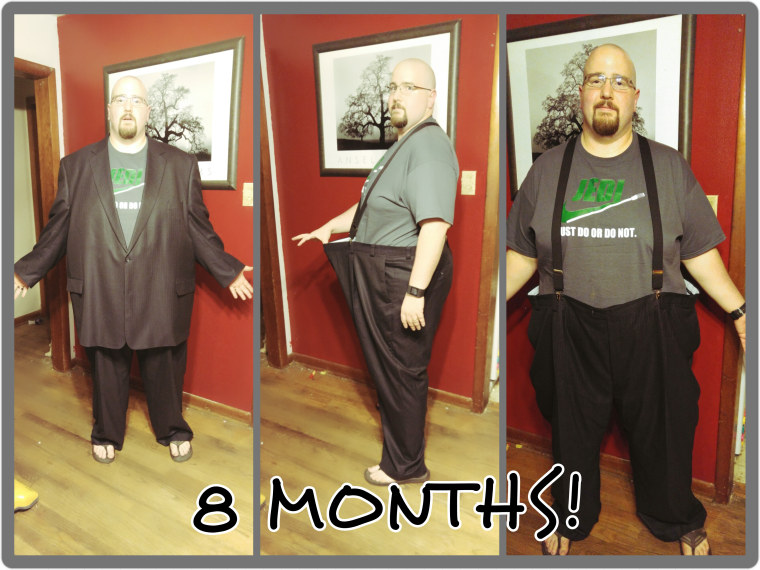
Garner had tried every quick-fix diet scheme out there from patches to weight-loss pills, but none of it helped him keep the weight off long term. He was depressed and spent most of the day sitting on the couch.
This time around, he decided to change his life by simply eating healthy foods and exercising more. In the last year, Garner has lost over 200 pounds and turned his life around. Here are the seven steps he took to make it happen.
RELATED: How to lose weight: 7 tips that take 5 minutes or less
1. Start a walking habit.
"My church had started a couch-to-5K program, so I started walking with them," Garner explained. "At first, I could only walk to the stop sign while they ran around the block. I kept at it — I started walking three times a week and my wife joined me."
2. Find a group to hold you accountable.
Thanks to the couch-to-5K group, by Christmas 2015, Garner had lost 60 pounds and his back finally stopped hurting.
Garner also joined a Beachbody program that taught him how to eat healthfully — and how to do it on your own.
RELATED: Confessions of a food addict: I couldn't stop eating
3. Establish a fitness routine that's fun.
When Garner first started his weight-loss journey, he tried a fitness DVD and could only do it for a minute before plopping back down on the couch. After he'd lost 60 pounds, as a Christmas present to himself, he bought a dance workout DVD by Shaun T.
"It sounded like fun and it was — I had a blast doing the workouts," Garner said. "I started doing them in my living room with my wife and kids. I even brought the DVD to my church and led a group workout."
The DVDs are short and effective — you learn a dance routine in roughly 40 minutes and then actually perform the routine for the final three or four minutes. Garner and his family have kept up with these dance workouts — today, they're tackling a country line dancing DVD.
4. Change your diet.
"Before, I used to make premade meals, a lot of frozen stuff. Lots of carbs and potatoes," Garner said. "Today, we do a lot of steamed veggies, whole foods and lean meats. I even started making my own spaghetti sauce from scratch!"
Garner typically eats the same thing for breakfast and lunch, but has fun experimenting with new recipes for dinner.
RELATED: 1 simple diet change may be all you need to lose weight
5. Set small goals.
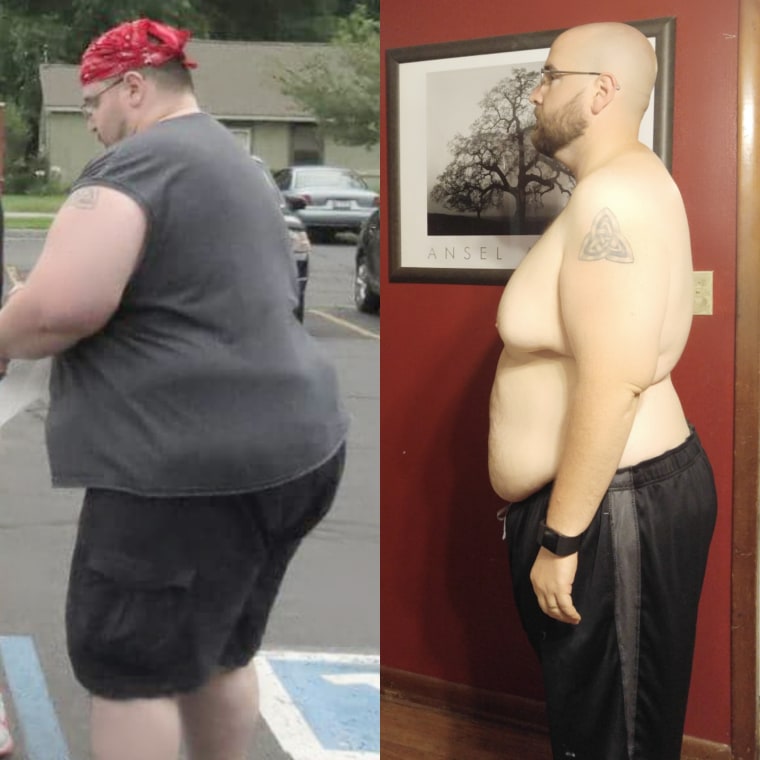
"I set three-week challenges for myself and focused on accomplishing one goal at a time," Garner explained. "I started with wanting to lose 15 pounds, and once I crushed that goal, I'd set another one."
If you become fixated on the scale, a better way to measure your success is by clothing size or measuring your waist or circumference of your arms and legs to track your progress.
RELATED: 7 steps that helped this woman lose 225 pounds at age 63
6. Realize that you have to put the work in.
"There's no magic pill, you need to change your lifestyle and the way you approach food," Garner advised.
7. You have to motivate yourself.
Garner had a rocky start to his weight-loss journey and was getting flack from his family about the food he was making, but eventually his wife joined him in his efforts. Today, she's lost 77 pounds!
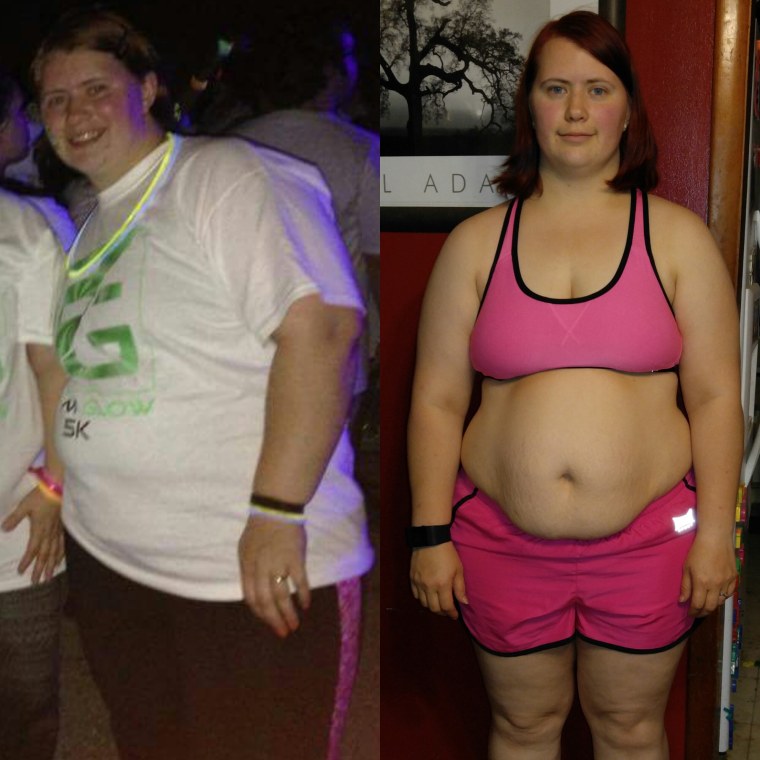
Garner's advice for others trying to lose weight: "Take it one day at a time. And remember that any movement is better than sitting on the couch!"
RELATED: How a daily cup of tea may improve your health
This summer, Garner and his family took a vacation that he never imagined he could before, because of his size. They visited Washington, DC, Philadelphia and New York City, and spent the days walking around to all of the sites — in DC, the family walked 14 miles!
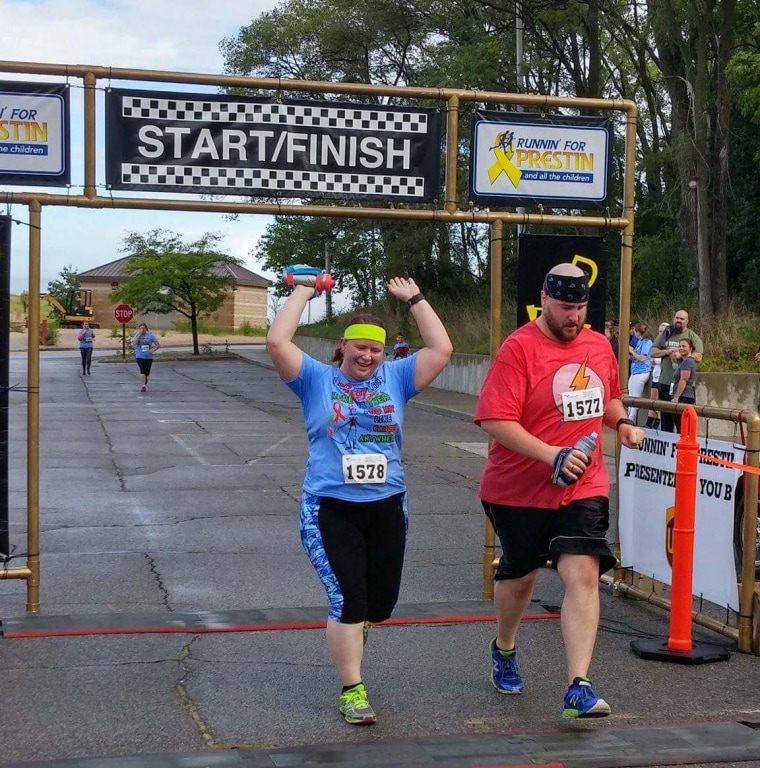
Just this month, Garner and his wife completed their first 5K race!
"I'm making more and more plans. I'm not limited to anything," Garner said. "The weight's gone and we're trying to make the most of life!"
Tone your core with these simple Pilates exercises for beginners
Diet & fitness.

Usher just revealed he doesn’t eat on Wednesdays
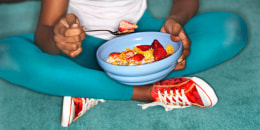
What is the healthiest cereal? Dietitians share their favorites
Bicycle crunches are better than standard crunches — here's why.

Is kombucha good for you? Dietitians explain whether it really boosts gut health

Kyle Richards on the events that motivated her weight loss journey and diet

Why did Brooke Shields wear Crocs to the Tonys? She reveals the reason for her fashion choice
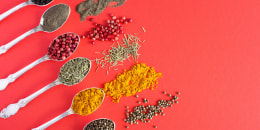
The 5 healthiest seasonings, according to dietitians — and the No. 1 kind to avoid

5 tips to rehydrate quickly after a workout or in hot temperatures, from a dietitian
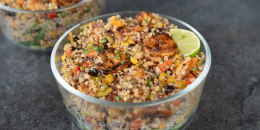
Easy summer meals: shrimp bowls, BBQ chicken salad, veggie burrito and more
- Weight Management
- Nutrition Facts
- Nutrition Basics
- Meal Delivery Services
- Fitness Gear
- Apparel & Accessories
- Recipe Nutrition Calculator
- Weight Loss Calorie Goal
- BMI Calculator
- Body Fat Percentage Calculator
- Calories Burned by Activity
- Daily Calories Burned
- Pace Calculator
- Editorial Process
- Meet Our Review Board
How to Set and Plan Weight Loss Goals
:max_bytes(150000):strip_icc():format(webp)/PaigeNew-594a893c3df78c537b843956.jpg)
Heather Black, CPT is a NASM-certified personal trainer and owner of Heather Black Fitness & Nutrition where she offers remote and in-person training and nutrition coaching.
:max_bytes(150000):strip_icc():format(webp)/HeatherBlack-1000-0d30639669b240cda64e4a942e99b0a1.jpg)
Zing Images/Getty Images
Do You Need to Lose Weight?
- SMART Goals
Achieving Your Goals
- Sample Plan
Figuring out how much weight you want to lose is the first step on a new weight loss journey. There are many different ways to come up with a long-term goal that's both realistic and aspirational. Setting your sights on the future can help fuel the motivation needed to make healthy changes. Here's how to get started.
A lot of people feel like they should lose weight, even if that's not always the case. It's not uncommon to have an unrealistic view of what a healthy weight really is. There are broad parameters to determine whether weight loss is recommended for health reasons. In general, a good candidate for weight loss may have the following measurements:
- BMI : Greater than 25
- Waist circumference : Abdominal girth measurement of more than 35 inches in women and 40 inches in men
- Waist to hip ratio : Higher than 0.8 for women and higher than 1.0 men
Body Mass Index (BMI) is a dated, biased measure that doesn’t account for several factors, such as body composition, ethnicity, race, gender, and age.
Despite being a flawed measure , BMI is widely used today in the medical community because it is an inexpensive and quick method for analyzing potential health status and outcomes.
If you're losing weight for your health, a modest goal of 5% to 10% of your current weight can begin to improve important markers like blood pressure and blood sugar levels. Other benefits of even a moderate weight loss can include more energy, a boost in self-confidence, improved fitness, and better mobility.
However, sometimes our goals are based on other factors, like the desire to fit back into old clothes or look a certain way. As long as our goals are realistic and don't veer into a dangerous underweight category, there's nothing wrong with setting a vanity goal.
Together with your health care provider, you can decide whether or not it's a good time to set a weight loss goal.
SMART Goal Setting
The key to setting weight loss goals is to follow the standard of goal setting, which means it needs to be SMART. A SMART goal stands for the following characteristics:
- Specific : Be clear about your intention by putting some numbers and details into your goal.
- Measurable : How will you keep track of your progress? Will you measure body weight, waist circumference, or exercise performance?
- Attainable : Do you have the time, resources, and motivation to reach your goal?
- Realistic : It's OK to set an ambitious goal as long as it's possible and within reach.
- Time-bound : Set a deadline for your goal. Break it up into shorter-term milestones to stay on track for the long haul.
The main thing to remember is that sustainable weight loss takes time.
Once you've determined that you're ready to lose weight, you'll need the proper tools to set your plan in motion. Keep in mind that a healthy rate of weight loss is 1 to 2 pounds per week. Losing weight at this slow and steady pace gives you the best chance of maintaining your progress long term.
It's helpful to get an idea of how many calories your body requires to lose or maintain weight. This weight loss calculator will help you set a daily calorie target to achieve your weight loss goals.
This calorie deficit can be achieved through a combination of mindful eating and increased physical activity. Focus on making healthy choices each day and give it time to see progress on the scale or in your body measurements. Consistency is the key to success.
Sample Weight Loss Plan
Here's what a sample weight loss plan (using SMART goal objectives) might look like:
Mary is 5'7" tall and weighs 160 pounds. Her goal is to lose 10 pounds in 12 weeks. To do that, she would need to cut back or burn off 300 to 500 calories each day. Using a combination of healthy eating and exercise is the best way to lose weight since dieting alone can cause you to lose muscle mass.
Muscle mass is more metabolically active than fat (meaning it burns more calories). Keeping the muscle you have and building more through resistance training will help support your ultimate weight loss goals.
Mary's plan to reach her goals:
- Replace her morning Egg McMuffin (300 calories) with a bowl of oatmeal (about 180 calories).
- Replace one Coke (150 calories) with sparkling water (0 calories).
- Walk for at least 30 minutes at 3.5-4.0 mph, 3 days a week (approx. 180 to 240 calories burned).
- Strength train 2 days a week for 30 minutes (approx. 140 to 280 calories burned)
With this plan, Mary will create a calorie deficit of 270 to 550 calories each day (depending on whether she exercises). By measuring her weight each week or so, she can determine if these changes are sufficient to get her to reach her long-term goals.
Looking at this example, you can see that these are fairly modest changes. Mary isn't revamping her entire life, she's simply picking a few things she can change to get started.
What's interesting is that, as she continues with her healthy behaviors, she may start to do even more, not just because she wants to lose weight but because she's going to start feeling better, stronger, more confident.
Try breaking down your goal into specific steps like this and track your progress. Just remember to adjust your plan if your results start to stall or if you are struggling to be consistent.
A Word From Verywell
If you're not losing weight as quickly as you had hoped don't get discouraged. Remember, your goal needs to be attainable, so be willing to adjust and set new goals if the old ones aren't working for you. Even a little bit of progress can benefit your overall health and well-being. Focus on small changes that add up over time.
Czernichow S, Kengne AP, Stamatakis E, Hamer M, Batty GD. Body mass index, waist circumference and waist-hip ratio: Which is the better discriminator of cardiovascular disease mortality risk? Evidence from an individual-participant meta-analysis of 82,864 participants from nine cohort studies . Obes Rev . 2011;12(9):680-687. doi:10.1111/j.1467-789X.2011.00879.x
Centers for Disease Control and Prevention. Assessing your weight .
Centers for Disease Control and Prevention. Losing weight .
Mcpherron AC, Guo T, Bond ND, Gavrilova O. Increasing muscle mass to improve metabolism . Adipocyte . 2013;2(2):92-8. doi:10.4161/adip.22500
ACE Fit. A guide for S.M.A.R.T. goal setting .
By Paige Waehner, CPT Paige Waehner is a certified personal trainer, author of the "Guide to Become a Personal Trainer," and co-author of "The Buzz on Exercise & Fitness."
The Diet and Workout That Helped This Man Lose Over 50 Pounds in a Year
"The magic you are looking for is in the work that you are avoiding."

Like many others who begin a similar journey, the 37-year-old Singapore man had spent most of his life overweight, and he had reached his breaking point.
"Physically, I was at the worst point in my life, having hit the heaviest weight that I had ever been," he says. "Mentally, it wasn’t much better, due to previous attempts at weight loss having failed spectacularly."
Before Tan found something that worked for him, he tried an all liquid, low caloric diet —as well as intermittent fasting . However, every time, he would only see minimal progress before things became too difficult and the weight would ultimately return.
As a result, he began to have very little confidence that something would be able to keep the weight off for good, and to make matters worse, he was also dealing with chronic health issues.
"In the year leading up to that point, I had already received various pieces of bad news regarding the state of my health in quick succession," he says. "I found out that I had hyperlipidaemia, reached the weight where I was obese by BMI standards, and was also diagnosed with fatty liver disease ."

So, on his wife's birthday in 2021, Tan decided to make a change for good, and sign up for a personal training program with UP Fitness . Despite his inexperience in the gym or with weight training in general, his personal trainer, Boon, helped him get going right away.
"At the beginning, I started with two sessions in the gym a week," he says. "By the end of the 50 weeks, I had grown to enjoy weight training enough to the point that I was doing five full body sessions in the gym every week, along with one day set aside for cardio, where I would either attend a spin class or go for a 1500 meter swim ."
For people starting an intense new workout routine, it can't be overstated how important it is to get your form down before injuries occur, so Tan heavily relied on his trainer, Boon, to keep him from on point.
"My trainer has been instrumental in making sure that every rep in the gym is executed perfectly, in good form, and keeping me injury free throughout this process," he says. "With regards to training, he helped me learn the importance of quality over quantity and avoid ‘ego lifting’ as much as possible."

Not only did this workout plan help Tan lose over 50 pounds of fat in under a year, but it also helped him gain over 5 pounds of muscle in return. As a result, he's feeling better than ever—not just in the physical realm.
"It’s very cliché to say so, but getting fitter and leaner has helped tremendously with my energy levels," he says. "I am much more active than I used to be and able to engage with my family and play with my 4-year old son. My confidence has of course improved massively, having finally attained a physique that I could only dream of in the past"
While his weight-loss transformation has been a continuous process, the reactions from his family have been resoundingly positive. Some of his close contacts have even said that he's inspired them to take on their own weight loss journey—one friend even lost close to 30 pounds by following the gym and diet routines Tan learned at UP.
"Oftentimes the friends and patients that I see on a regular basis have difficulty recognizing me when we meet in person," he says. "The funniest incident was when I was 10 minutes deep into a consult with a patient that I had known for years at that point, and she eventually asked where her regular doctor was and what happened to him that there was a new person taking over!"
He's also seen massive improvements in his chronic health issues . For starters, his blood cholesterol levels have all improved significantly, and a repeat ultrasound of his liver showed a marked reduction in liver fat, as compared to previous scans.
"Most importantly though, this journey has shown that my body composition is something that is under my direct control," he says. "I am no longer a passive passenger that’s just along for the ride, but the active driver and shaper of what I want to look and feel like. As someone who spent most of their life overweight, this has been the most significant paradigm shift."
After having done fat loss for close to a year, Tan is now eating at maintenance calories and focusing on muscle building with his trainer. He's also focused on getting more proficient in the more technically difficult lifts like the barbell back squat and conventional deadlift.
When asked about the number one piece of advice he has for people considering starting their own weight-loss journey, he says the following.
"The magic you are looking for is in the work that you are avoiding," he says. "Focus on keeping things consistent and sustainable. Success in weight loss and in fitness comes from doing the same, simple things well, day after day, week after week and month after month. There is no magic diet, workout or pill that can do things for you without effort, but the results will come if you are consistent."

.css-1fpt53b{height:1.25rem;}@media(max-width: 48rem){.css-1fpt53b{overflow:unset;line-height:1.25rem;}}@media(min-width: 48rem){.css-1fpt53b{line-height:1.25rem;}}.css-1fpt53b:before{background-color:#D2232E;color:#fff;margin-right:0.625rem;width:1.25rem;height:1.25rem;content:'';display:block;} Men's Health MVP Exclusives

Build Your Back, Biceps, and Glutes

Build Your Chest, Legs, and Shoulders
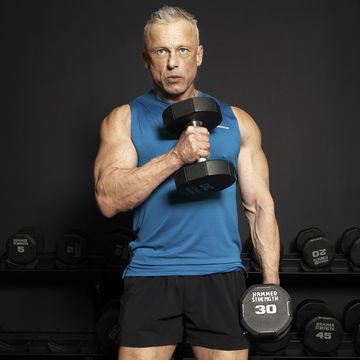
Build Back, Hamstring, and Biceps Muscle
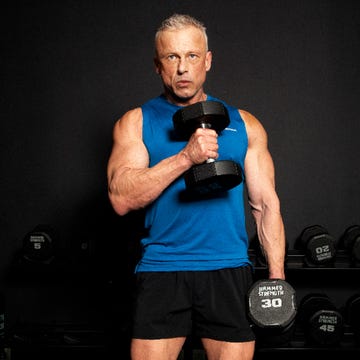
Build Real Muscle at 50 With This PDF Workout

The Best Exercises for Your Obliques

This PDF Program Will Build Better Abs
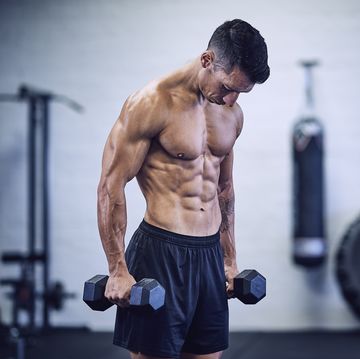
Pick the Right Rep Range for Your Workouts
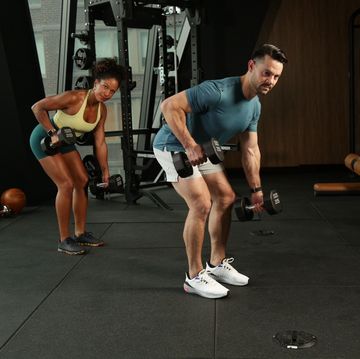
Try This 20-Minute Arms and Abs Assault
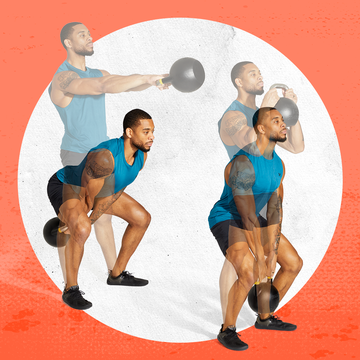
This Kettlebell Complex Will Help You to Muscle Up
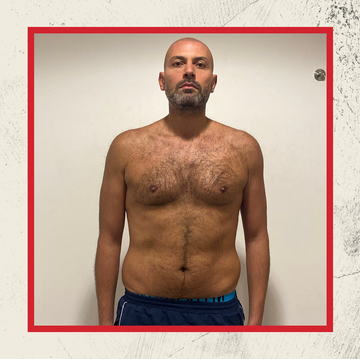
Making a Commitment to Himself Changed Everything

Alan Ritchson's Favorite 'Reacher' Moves
Expert video consults, eligible for insurance coverage.
Now, you can add nutritionist video consults to any Nutrisense plan.
95% pay $0 out-of-pocket.
*Price does not include sales tax. Offer not available for plans or products except 6 Month and 12 Month plans.

Realistic Weight Loss Timeline: Setting Expectations

Published in Weight Loss
11 min read
Amanda Donahue, MS, RD, CD

It’s no secret that being overweight is becoming more and more of an epidemic. Being overweight or obese puts people at an increased risk for many health conditions , including type 2 diabetes and cardiovascular disease. It can also contribute to issues like poor self-esteem and body image .
The good news is that there's a good chance weight loss can improve or completely resolve many of the risk factors for these conditions, including diabetes, and improve our metabolic health. It does this by optimizing insulin resistance and improving cholesterol and blood pressure.
With all the potential health benefits that can accompany weight loss, it’s not surprising to want to lose weight FAST. And with summer approaching, you may also be more likely to see an increase in ads targeting quick ways to lose weight easily.
While it’s understandable to be drawn in by the promise of losing 10 pounds in two weeks, remember that rapid weight loss is not true fat loss and is most likely not sustainable over time. Some of these promises may also be fad diets that can do more harm than good for your health.
It can have undesirable side effects , and as research shows, the more you yo-yo diet, the less likely you are to keep the weight off. You may also lose more muscle mass , slowing your metabolism and making weight loss more difficult down the road.
If long-term, sustainable weight loss is the goal, estimating how long it will take to lose that weight will help you set realistic expectations. Read on to learn more.
Factors to Consider Before Starting Your Weight Loss Journey

Not everyone is going to have the same weight loss journey. We’re all different, so it makes sense that there are various factors that we want to take into consideration when setting realistic expectations for weight loss. Here are a few:
How Old Are You and What is Your Sex?
Men tend to have more muscle mass and less body fat, so they burn more calories than women and can expect to lose weight more quickly. Men will also lose more lean mass and less fat mass, especially initially .
Age is also an essential factor to consider. Muscle mass decreases as we age, meaning that calorie-burning overall slows down, and weight loss may take longer.
What is Your Starting Size?

People already starting in a healthy BMI range (18.5-24.9) will often experience slower weight loss than those with more weight to lose. Knowing how much weight to target initially can also depend on your starting size.
Five to 10 percent of your body weight may be a good place to start—this will vary based on starting size.
How much you weigh can also impact the type of weight that you lose. Those starting at a healthy weight are more likely to lose a more significant percentage of weight as fat-free mass (muscle) and be more at risk of regaining fat if they rebound. Overweight or obese people are more likely to lose body fat mass by comparison.
How Large (or Small) Is Your Calorie Deficit?
The consensus is that 3,500 calories make up a pound of fat. So to lose one pound of fat per week, you would need to cut out a total of 3,500 calories that week or 500 calories per day, either through eating fewer calories or increasing exercise.
Of course, this doesn’t necessarily account for all the factors that go into weight loss, but this can be a good starting point.
What is Your Weight-Loss Diet Plan?

Consider how your current diet is getting in the way of where you’d like to be. Think through your current dietary habits, meal frequency, snacks, how often you eat out, and how these habits impact your goals.
We don’t know for sure if either a low-carb or low-fat diet approach will work better than another, but both may effectively promote long-term weight loss . Find what works best for you—a continuous glucose monitor (CGM) can help you with this!
What Has (or Hasn’t) Worked for You in the Past?
Take some time to think about where you’re at on your weight loss journey so far and what this has looked like for you historically.
Were you ever successful in losing weight in the past? Why or why not? If you were successful at weight loss previously, were you able to maintain that weight loss, or did you gain it back?
Think critically about what worked well for you and what didn’t work so well. If there were things that helped you to lose weight in the past, are those same strategies realistic to where you are in your life right now? If not, how could you modify those things to fit into your new plan?
What is Realistic for Your Lifestyle Now?

It's good to base your strategies on past success, but remember to modify them for your current lifestyle.
It can be common to want to change everything all at once, especially at the beginning of a weight-loss journey. But it can be hard to maintain and often leads to feelings of failure, resulting in worse success down the road.
Instead, consider reviewing common weight loss tips for men and women , think of the factors we mentioned above, and make a list to see where all of it fits into your lifestyle now.
Find Support
Finally, find support! Having someone on your side during a weight loss journey can help hold you accountable and provide motivation. It can be family, friends, or a support group.
{{rich-text-cta-wl1="/style-guide"}}
A Realistic Weight Loss Timeline
Having a basic understanding of metabolism can help to set a realistic timeline for weight loss. There are two phases to consider:
Phase 1: The early weight loss phase is attributed to significant fluid loss and glycogen (the storage form of glucose). You can lose fat quickly but in a smaller proportion. People who follow a low carb, keto, or carnivore diet may experience quick weight loss during this stage as they begin with less glycogen.
Phase 2: You can experience a weight loss plateau here. It's when you may end up getting discouraged and lose motivation. You can lose a high proportion of fat and, as a result, it occurs at a much slower rate.
There are a few different theories about why weight plateaus occur. The first is that as we lose weight, metabolism slows due to metabolic adaptations and the loss of energetically active tissue (fat and some muscle).
Basically, as you lose weight, your calorie intake often decreases, so weight loss will slow if you’re not adjusting your intake or exercising accordingly. At the same time, your metabolism is adapting to having fewer calories come in by triggering your hunger hormone and decreasing fullness hormones.
The second reason is getting burned out and no longer sticking to a diet. Likely, it’s probably a combination of both factors.
Wondering what a realistic timeline looks like with these phases in mind? Here's a format to follow:
Weeks 1 to ~4-6 Weeks

As you begin cutting calories, you may experience quick weight loss of around one to two pounds per week as your body depletes its glycogen stores, protein, and water weight.
On the flip side, if you are beginning a new exercise routine or starting to exercise for the first time, your initial weight loss may seem slower as you build muscle and strength.
To stay motivated, focus on non-scale measures like waist circumference, how your clothes are fitting, or your energy levels.
Avoid weighing yourself too frequently and always weigh yourself at the same time of day and under similar conditions. For example, if you weigh yourself without your shoes on day one, continue to remove your shoes before you step on the weighing scale to ensure you’re getting consistent readings.
Remember to focus on the habits that you’re working on developing that will lead to weight loss rather than simply focusing on the number on the scale.
Week 6 and Beyond

Prepare for that weight loss plateau. You can temper your expectations and avoid feeling the burnout of a plateau.
Have a plan to work through any plateau or weight gain by making minor, manageable tweaks to your current routine.
To encourage future weight management, finding foods, meal patterns, and exercise habits that work well for you and can fit into your everyday life is key at this stage. For more information on pushing past a weight plateau, check out this article .
4 Dietitian Tips for Healthy Weight Loss
Finding what works for your specific needs is the key to weight loss success. Here are some dietitian-approved tips:
1) Strength Training

Any exercise will help you burn extra energy, build muscle, and promote overall physical and mental health. Strength training can be beneficial as it builds muscle and can help burn more calories over time.
Now, you may be thinking, “I burn more calories in one single cardio session than weight training,” and that’s true. Still, strength training can help increase your resting metabolic rate , meaning you’re going to continue to burn calories even when your workout is over.
Strength training will also help you limit how much muscle mass you lose during weight loss and allow you to increase how much fat you lose.
Check out this article if you’d like to add strength training to your routine but aren’t sure where to start.
2) Increase Protein Intake
The old saying of “calories in, calories out” regarding weight loss is a great starting point, but there’s more to it than that. What you're eating matters too.
Protein is an often underrated nutrient that helps maintain lean mass and aids weight loss by promoting satiety and stable energy levels.
Focus on getting good protein at each meal and add grass-fed red meat, poultry, fish, eggs, wild game, unsweetened Greek yogurt, tofu, or tempeh to your diet.
Protein recommendations are different for people with certain medical conditions, like chronic kidney disease, so reach out to your primary care provider or a dietitian if you’re unsure about your own unique needs.
3) Stay Hydrated

It’s easy to focus just on food when trying to lose weight, but fluids can be as essential.
Staying hydrated can help support a healthy weight loss journey by preventing overeating associated with being dehydrated and also helps to increase fat loss.
Per the National Academies of Science, Engineering, and Medicine , about 125 ounces of water for men and 91 ounces of water for women per day is a good starting point. As you’re getting started, keep track of your daily water intake to see how closely you’re getting to this goal. Keep a water bottle with you throughout the day to stay motivated.
You can even add some sliced fruit for extra flavor if plain water isn’t your thing. Watch out for sugary beverages like fruit juice, sports drinks, or sodas, as these can sneak in a surprising number of extra calories each day.
4) Set Realistic Goals
Trying to change too many things all at once or making too drastic of a change can set you up for failure. When working towards long-term success, consider making more manageable and realistic goals.
For example, saying that you’re going to work out for an hour every day may not be very realistic when you’re getting started and can lead to feelings of disappointment when you’re unable to achieve that goal.
Setting a goal to exercise two or three times a week for 20 to 30 minutes each time may be more manageable in the early stages of your journey. Doing that consistently can help build confidence that will allow you to expand your goals.
Having specific, time-based goals is also essential to measure your success. Consider setting SMART goals that are:

Want more help setting up personalized SMART goals? Reach out to a Nutrisense nutritionist for guidance and support.
Engage with Your Blood Glucose Levels with Nutrisense
Your blood sugar levels can significantly impact how your body feels and functions. That’s why stable blood glucose levels can be an important factor in supporting overall wellbeing.
With Nutrisense, you’ll be able to track your blood glucose levels over time using a CGM , so you can make lifestyle choices that support healthy living.
When you join the Nutrisense CGM program , our team of credentialed dietitians and nutritionists are available for additional support and guidance to help you reach your goals.
Ready to take the first step? Start with our quiz to see how Nutrisense can support your health.
Find the right Nutrisense program to help you discover and reach your health potential .

Reviewed by: Amanda Donahue, MS, RD, CD
Amanda is a Nutrition Manager and Registered Dietitian at Nutrisense, with a Masters in Dietetics from Stephen F. Austin State University. Originally from south GA, she got her undergrad degree from Texas Tech University. Before joining Nutrisense, she worked at a hospital in Fort Worth, TX, for 4 years as a dietitian, counseling those living with HIV.
Learn more about Amanda

What are the Ideal Ketone Levels For Ketosis?

Phentermine: How It Affects Females + Side Effects To Watch Out For

How Veggies Support Weight Loss and 15 Healthy Ones To Try

Ozempic vs. Mounjaro: Understanding the Risks and Benefits for Weight Loss
The 8 Best Meal Replacement Shakes Of 2024, According To A Registered Dietician
Perfect for when you’re strapped for time.

As a registered dietitian, I recommend getting most of your nutrition from a well-balanced diet. But a meal replacement shake can help fill in the gaps, especially if you’re a frequent meal skipper.
Meal replacement shakes provide calories, protein, carbohydrates, and a mixture of vitamins and minerals to mimic what you might get from a meal. All you have to do is crack open a bottle and sip.
The best meal replacement shakes have enough calories to provide you with the energy you need until your next meal, which, for most people, is at least 300 to 400 calories, if not more.
I've recommended meal replacement shakes for my clients who often skip breakfast because they’re not hungry enough to eat or don’t have time to stop during a busy workday to eat lunch.
Best Meal Replacement Shakes

Best Overall Meal Replacement Shake
Huel ready-to-drink chocolate meal replacement drink.

Best Affordable Meal Replacement Shake
Premier protein shake.
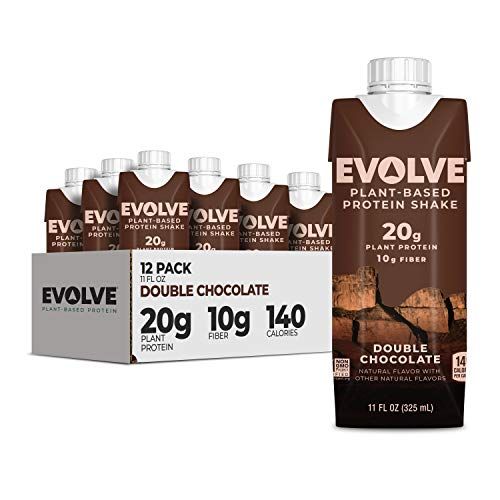
Best Pea Protein Meal Replacement Shake
Evolve plant-based protein shake.

Best Meal Replacement Shake With Grass-Fed Milk Protein
Orgain grass-fed clean protein shake.

Best Fiber-Filled Meal Replacement Shake
Kate farms organic nutrition shake.
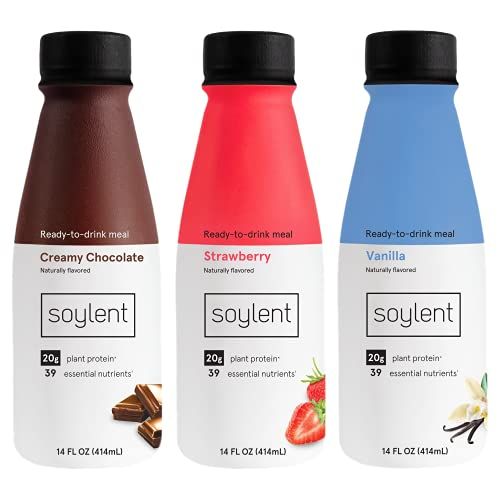
Best High-Calorie Meal Replacement Shake
Soylent ready-to-drink meals.

Best Tasting Meal Replacement Shake
Fairlife core power high protein milk shake.
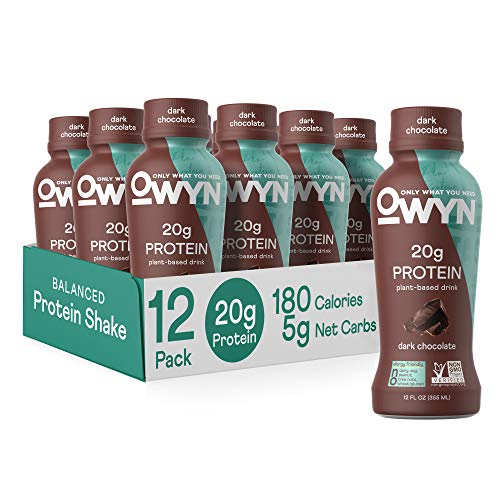
Best Vegan Meal Replacement Shake
Owyn plant-based protein drink.
A shake needs to have enough calories and taste good. However, there are many other factors to consider when choosing the right one for you. If you have diabetes or are watching your carbohydrate intake, choosing one that’s low in carbs may be the most helpful. But if you’re active and planning a workout or replenishing from one, you may want one that includes a higher amount of carbs. You may also want one that has fiber added to help you reach your fiber goals, is allergy-friendly, plant-based, or has a certain amount of protein.
I've included eight of the best meal replacement shakes you can buy depending on your personal nutrition goals, budget, and taste preferences.
What to consider
Before purchasing a meal replacement shake, you’ll want to consider:
If you’re looking for a true meal replacement shake, choose a shake with a minimum of 300 to 400 calories. Even then, you may need to supplement it with something else, like a handful of nuts, a piece of fruit, or some veggies and hummus. I've included shakes with fewer calories on our list, and these would make a great snack or breakfast if you’d otherwise skip the first meal of the day. Remember that a shake with fewer than 200 calories won’t supply your body with enough energy.
Amount of protein
While a sedentary adult only needs 0.8 grams of protein per kilogram of body weight for basic functions, you likely need more than that, especially if you’re active or looking to lose weight. Whether you're a recreationally active woman or a competing athlete, you'll want to aim for around 1.2 to 1.6 grams of protein per kilogram of body weight, according to current research and recommendations.
Protein helps build and repair muscle, support the immune system, and is needed for almost all chemical reactions that take place in the body. It also helps you feel fuller, and slows your digestion down when you eat meals. A meal replacement shake that provides a quarter of your protein needs or at least 20 grams of protein per serving is ideal.
Sweeteners and other additives
Some meal replacement shakes have a lower amount of carbohydrates and added sweeteners, while others may contain anywhere from 15 to 30 grams of carbohydrates or more paired with 20 to 30 grams of protein for balance.
Some drinks will include added sugars like cane sugar, glucose, fructose, or high fructose corn syrup, while others use low or no-calorie natural sweeteners such as stevia, monk fruit, or allulose, artificial sweeteners like sucralose or aspartame, or sugar alcohols like erythritol or sorbitol to give the drink a sweet taste without adding extra calories or carbohydrates.
Consider what sweeteners you want in your shake, and which ones you may want to avoid. For example, while sugar alcohols are a natural non-calorie sweetener, they can cause stomach pain, gas, and bloating for people who are sensitive to them.
How we chose
To choose the best meal replacement shakes, Women's Health editors and contributor Kelsey Kunik, RDN tested more than a dozen shakes on the market and evaluated them based on nutrition, ingredients, extra features, and price. You’ll find a variety of shakes that meet unique nutrition needs and fit into several diet restrictions to find the best option for you.
While Huel offers many ways to supplement your diet—think powders, ready-to-drink bottles, complete meals, and bars—the ready-to-drink option is our favorite meal replacement choice. One entire bottle (two servings) is 400 calories and provides 22 grams of protein. Unlike many “meal replacement shakes,” this one has enough calories and protein to count as a meal to keep you full.
In addition to the protein and calories, you’ll also get six grams of fiber, which is 21 percent of your daily value (DV) per bottle, from ingredients like oats, flaxseed, and chicory. It’s sweetened with four grams of coconut sugar and stevia while avoiding artificial sweeteners. That's key for anyone that's sensitive to sugar alcohols.
You won’t find Huel in stores, but you may be able to find some flavors on Amazon. Signing up for a subscription from the website saves money on each order and means you'll never run out.
Read more: Best Protein Powders
With fewer than 200 calories, the Premier Protein Shake isn't quite a meal replacement. But it does make a filling and satisfying small snack or breakfast if you normally skip it. With a wide variety of flavors to choose from, from classic vanilla all the way to salted caramel popcorn or pumpkin spice, it’s easy to find a flavor for every season and taste.
Each bottle has 30 grams of protein from milk protein concentrate and calcium caseinate. And if you need something low in carbohydrates, each bottle has just four grams of carbs and no added sugars. It’s sweetened with sucralose and acesulfame potassium, two FDA-approved artificial sweeteners . You’ll also get over 25 percent DV of numerous essential vitamins and minerals, along with calories and proteins.
I love this plant-based protein shake. It's an excellent source of fiber and protein, two nutrients that can be tricky to get enough of. Each serving has an impressive 10 grams of fiber and 20 grams of protein. While you’ll only get 140 calories from each bottle, the fiber and protein may help you feel full and satisfied after drinking. Make this into a meal by adding a shelf-stable snack like nuts or trail mix, which would add significant calories and healthy fats.
Getting all 20 grams of protein from pea protein, this drink is perfect for people following a vegan diet and is also free from any artificial colors, flavors, and sweeteners.
Each serving also has 15 percent DV of zinc, vitamin B12, and calcium, as well as 25 percent DV of iron, all nutrients that can be hard to get enough of in a vegan diet.
The Orgain Organic Nutritional Protein Shake is an all-in-one shake packed with vitamins and minerals, 16 grams of protein from grass-fed dairy, and 250 calories to help keep you full and energized.
These shakes are some of my personal favorites. Their texture is rich and full-bodied, and the flavors are sweet without artificial flavors. They’re sweetened with cane sugar, brown rice syrup, and monk fruit, which gives each bottle 11 grams of added sugars, or 22 percent of the recommended daily limit. But with 28 grams of total carbohydrates and 16 grams of protein, it is still a balanced meal replacement shake.
Kate Farms is known for high quality tube feeding formulas used in hospitals and available for home use, and its complete nutrition shakes stand up to the reputation. These USDA Organic meal replacement shakes are certified gluten-free, certified kosher, and free from any artificial sweeteners or sugar alcohols.
Each serving does have 18 grams of added sugars, which is 36 percent of the recommended daily limit, but the extra fiber and protein help to balance this out. Each serving has six grams of prebiotic fiber from agave inulin to help support a healthy gut microbiome. It’s also free from the nine most common food allergens: milk, wheat, soy, sesame, peanuts, tree nuts, eggs, fish, and shellfish. This makes it a safe choice for anyone with food allergies.
I love that each bottle has 350 calories, which is enough to actually replace what you might eat at a meal with a good balance of fat, protein, and carbohydrates. Plus, you’ll get 16 grams of satisfying protein and a boost of essential vitamins and minerals.
Each bottle of Soylent is a complete meal with 400 calories and 24 grams of fat, including 18 grams of heart-healthy monounsaturated fats, 36 grams of carbohydrates, and 20 grams of protein from soy. Plus, you’ll get a boost of 20 percent DV of 26 vitamins and minerals in this vegan, gluten and nut-free nutrition shake. And, to top it all off, there's only one gram of added sugars per serving.
The combination of 400 calories, 20 grams of protein, and three grams of fiber will help you feel full while sipping and stay with you for hours afterward. To minimize the added sugars, Soylent is sweetened with Allulose, a natural sweetener that your body can't absorb and use all of the energy from and contributes just 0.2 calories per gram as opposed to four calories per gram of regular sugar.
You can choose from seven flavors and take advantage of the website's subscription option to save 12.5 percent on your orders.
You can find Fairlife Core Power Protein Milk in most major grocery stores. And while it tastes best cold, this milk drink can be left at room temperature until opening, making it perfect for meals on the go. Each serving has just 170 calories, which makes it great for a snack or small breakfast, and has 26 grams of high-quality protein from milk.
Even though this meal replacement is milk based, it’s made from ultra-filtered milk and has the lactase enzyme already added, so even people with lactose intolerance can drink it with comfort. It’s sweetened with natural and artificial sweeteners, but contains no added sugars and has 50 percent DV of calcium and 25 percent DV of vitamin D in every bottle.
Owyn High Protein Complete Nutrition Shake is a vegan meal replacement shake with 26 grams of protein from a blend of pea and pumpkin seed protein. While it’s not enough calories to truly replace an entire meal (only 180 calories per bottle), it does have three grams of fiber and 20 percent of the DV for a wide variety of essential vitamins and minerals. Pair it with something like an apple and peanut butter for additional calories, healthy fats, and fiber.
This shake is perfect for anyone with food allergies or intolerances. It’s free from dairy, soy, peanuts, tree nuts, sesame, wheat, and gluten. The bottle is even BPA-free to limit your exposure to this hormone-disrupting chemical . We also love that it has no added sugars or artificial sweeteners and is sweetened with natural monk fruit extract instead.

What is the healthiest meal replacement shake?
The healthiest meal replacement shake for you depends on your own individual nutrition goals and medical history. That said, I love the Huel Ready-to-Drink Nutrition Shakes as they have enough energy to replace a meal, are high in fiber, and are low in added sugars.
Is it OK to only drink meal replacement shakes?
Your main source of nutrition should come from a well-balanced diet that includes plenty of fruits, vegetables, lean protein, and whole foods. While meal-replacement shakes can be used, they shouldn't replace more than one meal a day.
Read more about the best food to buy now
Meal Delivery Services | Dairy-Free Meal Delivery Services | Frozen Meal Delivery Services | Healthy Meal Delivery Services | Paleo Meal Delivery Services | Best Protein Powders | Best Whey Protein Powders | Best High-Protein Meals
Lily Wohlner is the Associate E-Commerce Editor of Women’s Health. An expert in recommending the best products to add-to-cart, she knows what it takes for a product to receive a solid five stars (especially when it comes to beauty!). Starting her career as a freelance makeup artist, Lily has since moved to the editorial world, where she has generated content for brands including Oribe, NewBeauty, Dermstore, SkinStore, and LOOKFANTASTIC. When she’s not zenning out with a pore-clearing mask, the Lower East Side dweller is cheffing up a new recipe with her roommate or thrifting for the perfect pair of blue jeans. Follow her on Instagram .
Jackie Lam is the senior health editor at Women’s Health where she oversees health and weight loss content for the website and the Mind section of the print magazine. Originally from Hong Kong, she’s a journalist with more than 10 years of experience and a proud graduate of Cornell University and the Medill School of Journalism at Northwestern University. When she’s not at her laptop, she can be found experimenting with Japanese recipes in her kitchen with her husband as her main taste tester, discovering the latest in K-Pop, and dreaming up her next trips to Japan.
Kelsey Kunik, RDN, is a registered dietician and health writer who covers all-things nutrition for Men's Health and Women's Health.
How To Lose Weight

Khoe Kardashian Weight Loss: Diet, Workout Routine

11 Tips For Losing Weight After Turning 40

5 Ways To Speed Up Your Metabolism, Per Experts

Can Your Stomach Really Shrink? Doctors Weigh In

9 Best Keto Meal Delivery Services, Per Experts
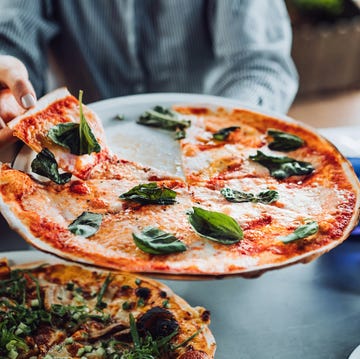
Should You Cut Carbs To Lose Weight?

How To Calculate A Calorie Deficit For Weight Loss

The Pritikin Diet, Explained By Nutritionists

How To Get Rid Of Belly Fat Safely, Per Dietitians

What Is The Metabolic Confusion Diet, Exactly?

Is It Ever Safe To Lose Weight While Pregnant?
The Best Diet: Quality Counts
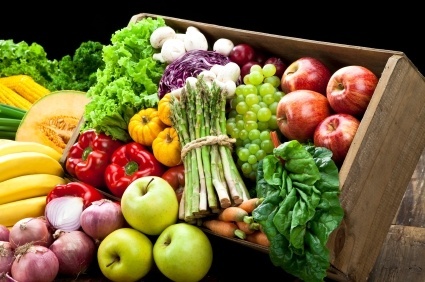
- Dietary guidelines have changed over the years as research becomes more accurate in determining what we should eat to attain optimal health and weight. The strongest evidence to date shows that calories matter, but focusing on food quality is an equally important part of preventing weight gain and promoting weight loss.
- Focus on eating high-quality foods in appropriately sized portions.
Consider quality, not just calories
“A calorie is a calorie” is an oft-repeated dietary slogan, and not overeating is indeed an important health measure. Rather than focusing on calories alone, however, emerging research shows that quality is also key in determining what we should eat and what we should avoid in order to achieve and maintain a healthy weight. Rather than choosing foods based only on caloric value, think instead about choosing high-quality, healthy foods, and minimizing low-quality foods.
- High-quality foods include unrefined, minimally processed foods such as vegetables and fruits, whole grains, healthy fats and healthy sources of protein – the foods recommended in the Healthy Eating Plate .
- Lower-quality foods include highly processed snack foods, sugar-sweetened beverages, refined (white) grains, refined sugar, fried foods, foods high in saturated and trans fats, and high-glycemic foods such as potatoes.
There isn’t one “perfect” diet for everyone, owing to individual differences in genes and lifestyle.
Quality counts
One study analyzed whether certain foods were more or less likely to promote weight gain. This type of research examining specific foods and drinks allows us to understand whether “a calorie is a calorie,” or if eating more higher-quality foods and fewer lower-quality foods can lead to weight loss and maintenance.
Researchers in the Department of Nutrition at Harvard School of Public Health show us that quality is in fact very important in determining what we should eat to achieve and maintain a healthy weight, and that the notion of “a calorie is a calorie” does not tell the whole story.
- In a study of over 120,000 healthy women and men spanning 20 years, researchers determined that weight change was most strongly associated with the intake of potato chips, potatoes, sugar-sweetened beverages, and both processed and unprocessed red meats. The researchers concluded that consumption of processed foods higher in starches, refined grains, fats, and sugars can increase weight gain.
- Foods shown to be associated with weight loss were vegetables, whole grains, fruits, nuts, and yogurt.
- Researchers did not discount the importance of calories, instead suggesting that choosing high-quality foods (and decreasing consumption of lower-quality foods) is an important factor in helping individuals consume fewer calories. ( 23 )
View the HSPH news release , “Changes in specific dietary factors may have big impact on long-term weight gain: Weight-loss Strategy to Only ‘Eat Less, Exercise More” May be Overly Simplistic’”
Managing macronutrients: Does it matter?
With the proliferation of macronutrient-based diets over the past several decades, from low-fat to low-carbohydrate, discussion of the three main macronutrients – carbohydrates, proteins, and fats – has become standard when talking about optimal diets. Researchers have begun comparing these “macronutrient management”-style diets to one another in order to determine which is most effective, but thus far evidence is largely inconclusive.
One study, published in JAMA in 2007, compared four weight-loss diets ranging from low to high carbohydrate intake. This 12-month trial followed over 300 overweight and obese premenopausal women, randomly assigning them to either an Atkins (very low carbohydrate), Zone (low carbohydrate), LEARN (high carbohydrate), or Ornish (very high in carbohydrate) diet.
- After one year, weight loss was greater for women in the Atkins diet group compared with the other diet groups.
- This study also examined secondary outcomes focused on metabolic effects (such as cholesterol, body fat percentage, glucose levels and blood pressure), and found that those for the Atkins group were comparable with or more favorable than the other diet groups.
- There was no significant difference in weight loss among the other three diets (Zone, LEARN, and Ornish).
- This study does raise questions about about long-term effects and mechanisms, but the researchers concluded that a low-carbohydrate, high-protein, high-fat diet may be considered a feasible recommendation for weight loss. ( 24 )
Another study, published in The New England Journal of Medicine in 2009, challenged the above study’s findings by testing four different types of diets and producing results that showed comparable average weight loss among the different diets.
- The study followed 800 people over 2 years, assigning subjects to one of four diets: Low-fat and average-protein, low-fat and high-protein, high-fat and average-protein, and high-fat and high protein.
- Researchers concluded that all of the diets resulted in meaningful weight loss, despite the differences in macronutrient composition.
- The study also found that the more group counseling sessions participants attended, the more weight they lost, and the less weight they regained. This supports the idea that not only is what you eat important, but behavioral, psychological, and social factors are important for weight loss as well. ( 25 )
An additional study, published in The New England Journal of Medicine in 2010, looked at the role of protein and glycemic index upon weight loss maintenance. Researchers first implemented a low-calorie diet to produce weight loss, then examined whether protein and glycemic index impacted weight loss maintenance.
- The study population was made up of nearly 800 overweight adults from European countries who had lost at least 8% of their initial body weight with a low-calorie diet. Participants were then assigned one of five diets to prevent weight regain over a 26-week period: A low-protein and low-glycemic-index diet, a low-protein and high-glycemic-index diet, a high-protein and low-glycemic-index diet, a high-protein and high-glycemic-index diet, or a control diet.
- The low-protein-high-glycemic-index diet was associated with subsequent significant weight regain, and weight regain was less in the groups assigned to a high-protein diet than in those assigned to a low-protein diet, as well as less in the groups assigned to a low-glycemic-index diet than in those assigned to a high-glycemic-index diet.
- These results show that a modest increase in protein content and a modest reduction in the glycemic index led to an improvement in maintenance of weight loss. ( 26 )
The results from these three studies suggest that there may be some benefits to a macronutrient-based dietary approach, but research also shows that while a particular diet may result in weight loss for one person, it may not be effective for another person due to individual differences in genes and lifestyle. For those seeking the “perfect” one-size-fits-all diet, then, there isn’t one! The great news is that everyone can follow The Healthy Eating Plate guidelines and choose healthy, flavorful foods to create a diet that works best for you.
23. Mozaffarian, D., et al., Changes in diet and lifestyle and long-term weight gain in women and men . N Engl J Med , 2011. 364(25): p. 2392-404. 24. Gardner, C.D., et al., Comparison of the Atkins, Zone, Ornish, and LEARN diets for change in weight and related risk factors among overweight premenopausal women: the A TO Z Weight Loss Study: a randomized trial. JAMA , 2007. 297(9): p. 969-77. 25. Sacks, F.M., et al., Comparison of weight-loss diets with different compositions of fat, protein, and carbohydrates . N Engl J Med , 2009. 360(9): p. 859-73. 26. Larsen, T.M., et al., Diets with high or low protein content and glycemic index for weight-loss maintenance . N Engl J Med , 2010. 363(22): p. 2102-13.
Terms of Use
The contents of this website are for educational purposes and are not intended to offer personal medical advice. You should seek the advice of your physician or other qualified health provider with any questions you may have regarding a medical condition. Never disregard professional medical advice or delay in seeking it because of something you have read on this website. The Nutrition Source does not recommend or endorse any products.

COMMENTS
1. Consider 'habit stacking.'. When Osland started her weight-loss journey, she would change one thing at a time. So she'd walk 30 minutes a day until that became a habit. Then she'd add a ...
8. Water Really Is Your BFF. 9. The Mental Transformation Is Just as Important as the Physical. 10. If You Want Lasting, Permanent Change—It's about Your Lifestyle. From a young age growing up in the Connecticut suburbs, the number on the scale ebbed and flowed as my relationship with sport did as well. At age 14, I was a soccer whiz, running ...
Here are the six things I wish I knew at the start: 1. Sustained weight loss takes time (and it's not a straight line.) Honestly, that's probably the first thing I wish I would've been more cognizant of—that sustained weight loss takes TIME. And not only that, it doesn't happen in a straight line.
In today's video I decided to share with you my 100 pound weight loss transformation! I started working out about a year ago and have learnt a lot! This jour...
Luke Abrahams. Apr 23, 2021, 1:23 PM PDT. I lost 70 pounds over the course of two years. Luke Abrahams for Insider. I spent two years trying to lose weight by listening to my body, and I was able ...
Walk an average of 1,000 more steps per day for one week with a midday walk during my lunch break. Eat within 100-200 calories of my calorie goal each day for one week by reducing portion sizes for snacks and dinner. 2. ... To avoid feeling deprived during your weight-loss journey, ...
After deciding to kickstart a weight-loss journey and become healthier than ever before, these women say there was one motivating factor that helped them reach their weight loss goals. Here, each of these women (including "The Biggest Loser" Season 18 trainer Erica Lugo) share their personal weight loss success stories.
Whatever your reason for wanting to know how to start a weight loss journey, we can help you take those tricky first steps to reset your lifestyle and lose weight. ... but over the course of a year, losing 1-2 lb a week adds up to a significant amount! ... One of the main signs of fat loss vs. weight loss is a change in your body composition ...
Generally, to lose 1 to 2 pounds a week, you need to burn 500 to 1,000 calories more than you consume each day through a lower-calorie diet and regular physical activity. Depending on your weight, 5% of your current weight may be a realistic goal, at least for an initial goal. If you weigh 180 pounds, that's 9 pounds.
So here's what I've learned, one year later! (In no particular order.) 1. The initial, more intense, stage doesn't have to last forever. I started my weight loss journey in January 2021 and went all-in for the first five months. After that initial stage of counting calories, lifting weights, etc.,
For example, a 2022 study in the journal Obesity found that a 16% weight loss decreased metabolic rate (the number of calories burned at rest) in premenopausal women. Weight loss has also been shown to increase ghrelin, the hormone that signals hunger, in breast cancer survivors, per a 2021 study in NPJ Breast Cancer.
Here are five tips to help get you eat better this summer and beyond: 1. Look into your past. Most of us have a diet history. We know what works and doesn't work. Perhaps you jumped on the keto ...
Here, experts share six powerful ways to help you bounce back and resume your weight loss journey — with long-term success as the target. 1. Be Kind to Yourself. "Remember to give yourself ...
May 27, 2020, 6:19 am. All her life, 27-year-old Kiah Twisselman believed she just had "bad genetics," which prevented her from losing weight. But two years ago, she proved that theory wrong and went from 285 to 163 pounds by eating healthy and exercising. "I just started showing up and doing it," Twisselman wrote in an Instagram post.
Kickstart your weight loss journey with our straightforward 30-day plan, crafted by a registered dietitian. Follow this expert-designed guide to achieve your weight loss goals effectively and sustainably. Learn these realistic nutrition, fitness and sleep strategies to lose weight for the long term.
17 April 2024 / 16:25 BST. At the start of 2020, Men's Fitness contributor Jacob Newbury decided to turn his life around. Here, he tells us all about his incredible weight loss transformation story and how he lost 10st in 1 year. From regularly walking and training with the best dumbbells to ditching junk food and committing to intermittent ...
After a "five- to seven-year" weight-loss journey, which included a lot of "trial and error," Pugh lost 93 lbs. and found a new career. As a top model and an ambassador for David Beckham 's ...
19. Eat a Large Breakfast and a Small Dinner. "You'll want to take in more of your calories earlier in the day. A study published in 2019 found that subjects who were given small breakfasts ...
This time around, he decided to change his life by simply eating healthy foods and exercising more. In the last year, Garner has lost over 200 pounds and turned his life around. Here are the seven ...
Replace one Coke (150 calories) with sparkling water (0 calories). Walk for at least 30 minutes at 3.5-4.0 mph, 3 days a week (approx. 180 to 240 calories burned). With this plan, Mary will create a calorie deficit of 270 to 550 calories each day (depending on whether she exercises).
The Diet and Workout That Helped This Man Lose Over 50 Pounds in a Year. "The magic you are looking for is in the work that you are avoiding." Terence Tan never really hit the gym much. Growing up ...
Weight loss is one of the most common workout goals, but it's rarely simple. ... Here's an example. A moderately active 30-year-old female who's 5'6″ and weighs 150 pounds has a BMR of 1,417 calories per day. 1,417 (BMR) x 1.55 (moderate activity level) = 2,196.35 (TDEE) ... As you navigate your weight-loss journey, metrics like fat ...
As the new year unfolds, many of my clients embark on a journey to achieve a healthier and slimmer version of themselves. Transforming your body in just one month may seem ambitious, but with a strategic approach encompassing diet, fitness, and lifestyle changes, it's an achievable goal. In this comprehensive guide, I'll outline a one-month weight-loss challenge, incorporating evidence-backed ...
Staying hydrated can help support a healthy weight loss journey by preventing overeating associated with being dehydrated and also helps to increase fat loss. Per the National Academies of Science, Engineering, and Medicine , about 125 ounces of water for men and 91 ounces of water for women per day is a good starting point.
In this video, One Year Update | Weight Loss Journey | Losing 200 lbs | April Lauren | Weigh in Wednesday, I share my one year update on my weight loss. I s...
Whether you're on a weight loss journey, looking for a high-protein meal, ... One entire bottle (two servings) is 400 calories and provides 22 grams of protein.
After one year, weight loss was greater for women in the Atkins diet group compared with the other diet groups. ... Comparison of weight-loss diets with different compositions of fat, protein, and carbohydrates. N Engl J Med, 2009. 360(9): p. 859-73. 26. Larsen, T.M., et al., Diets with high or low protein content and glycemic index for weight ...